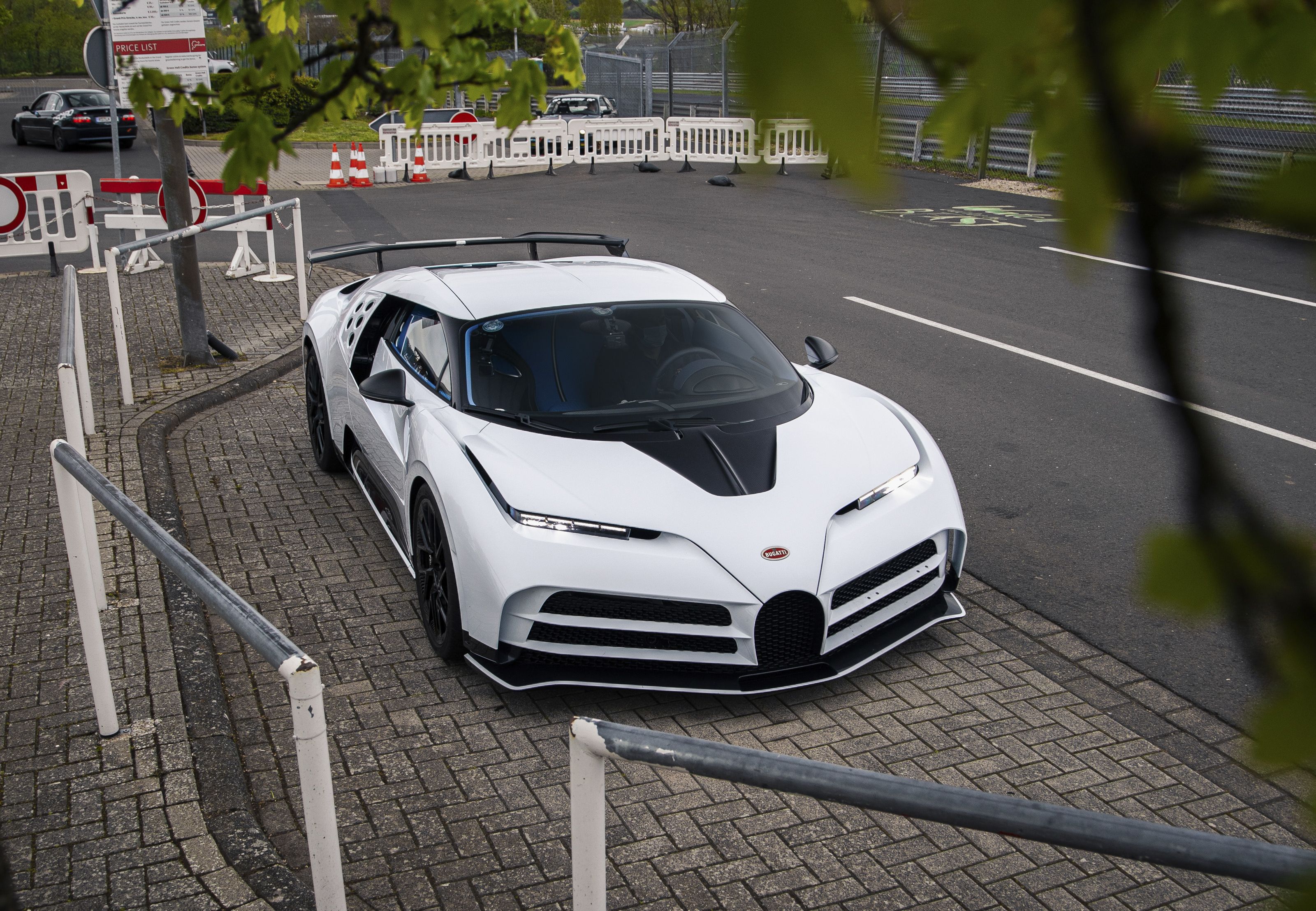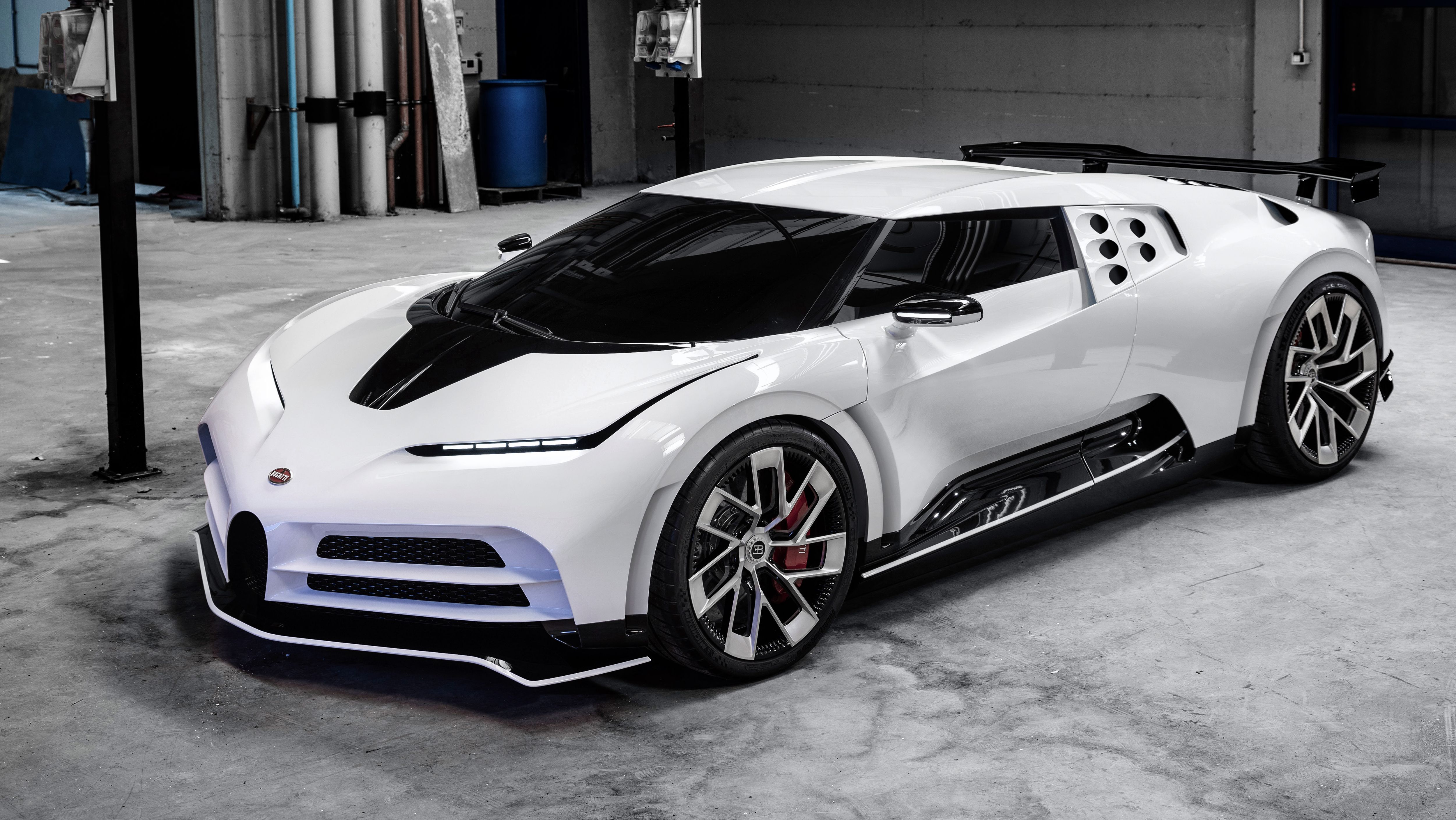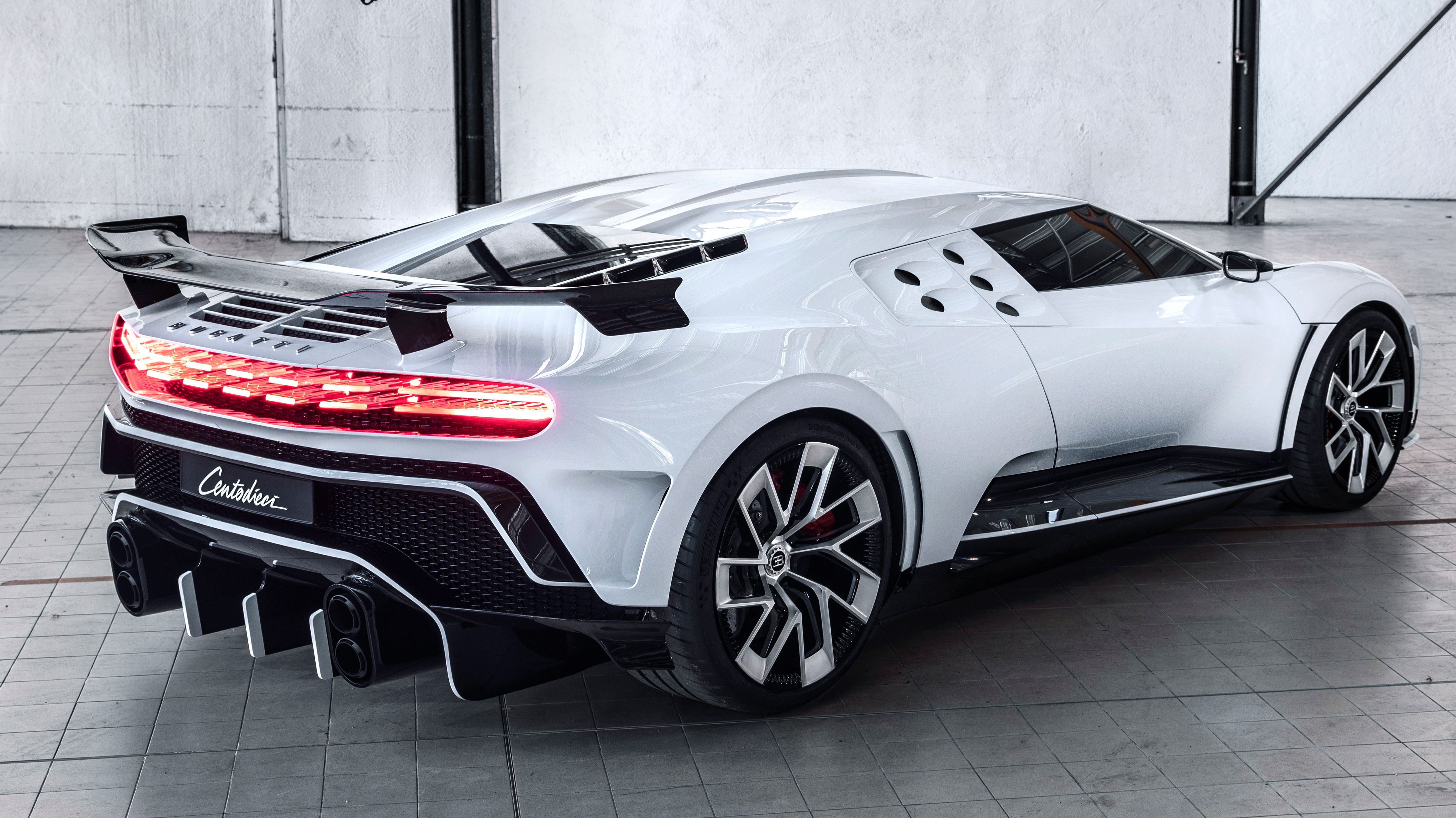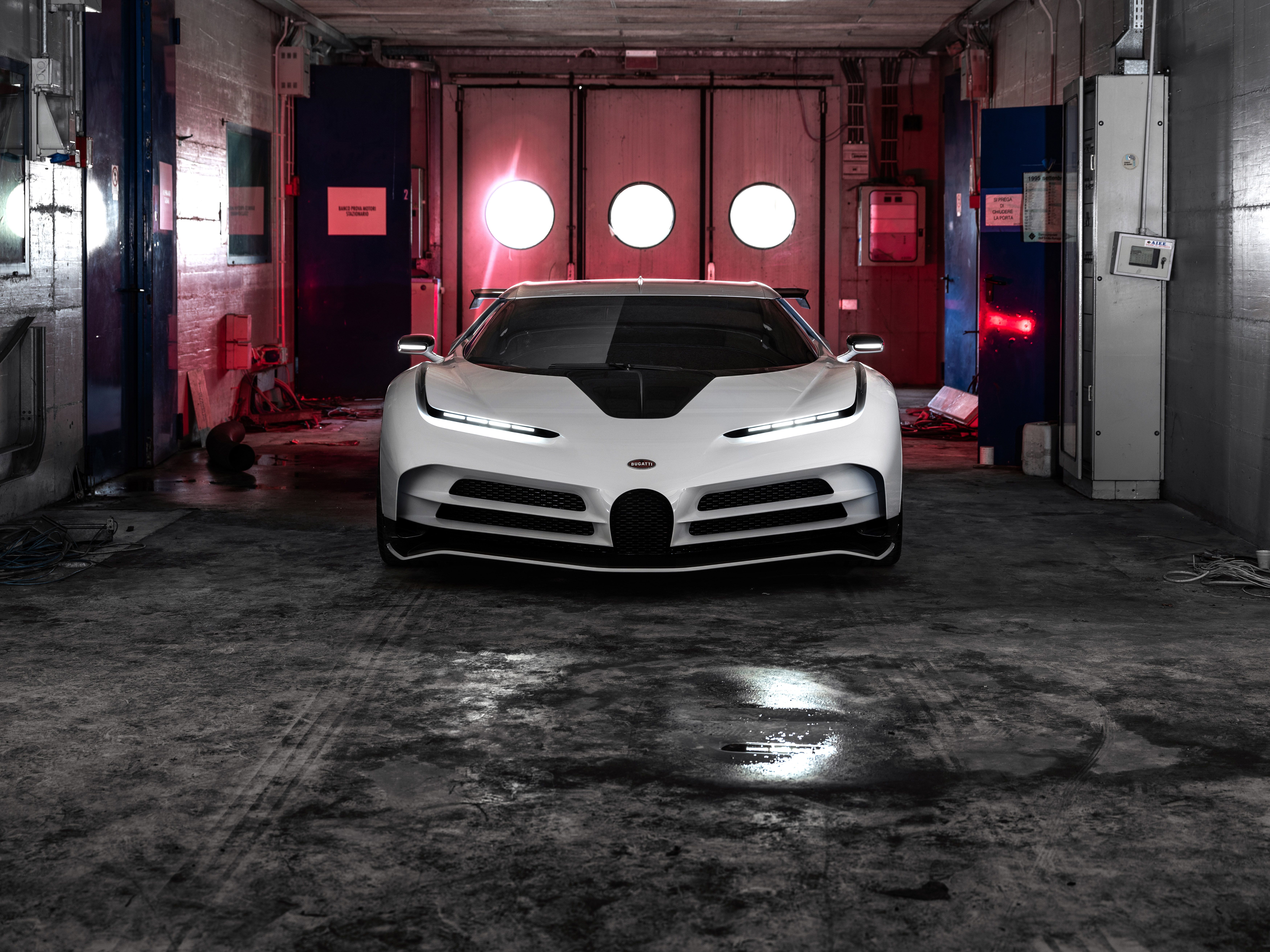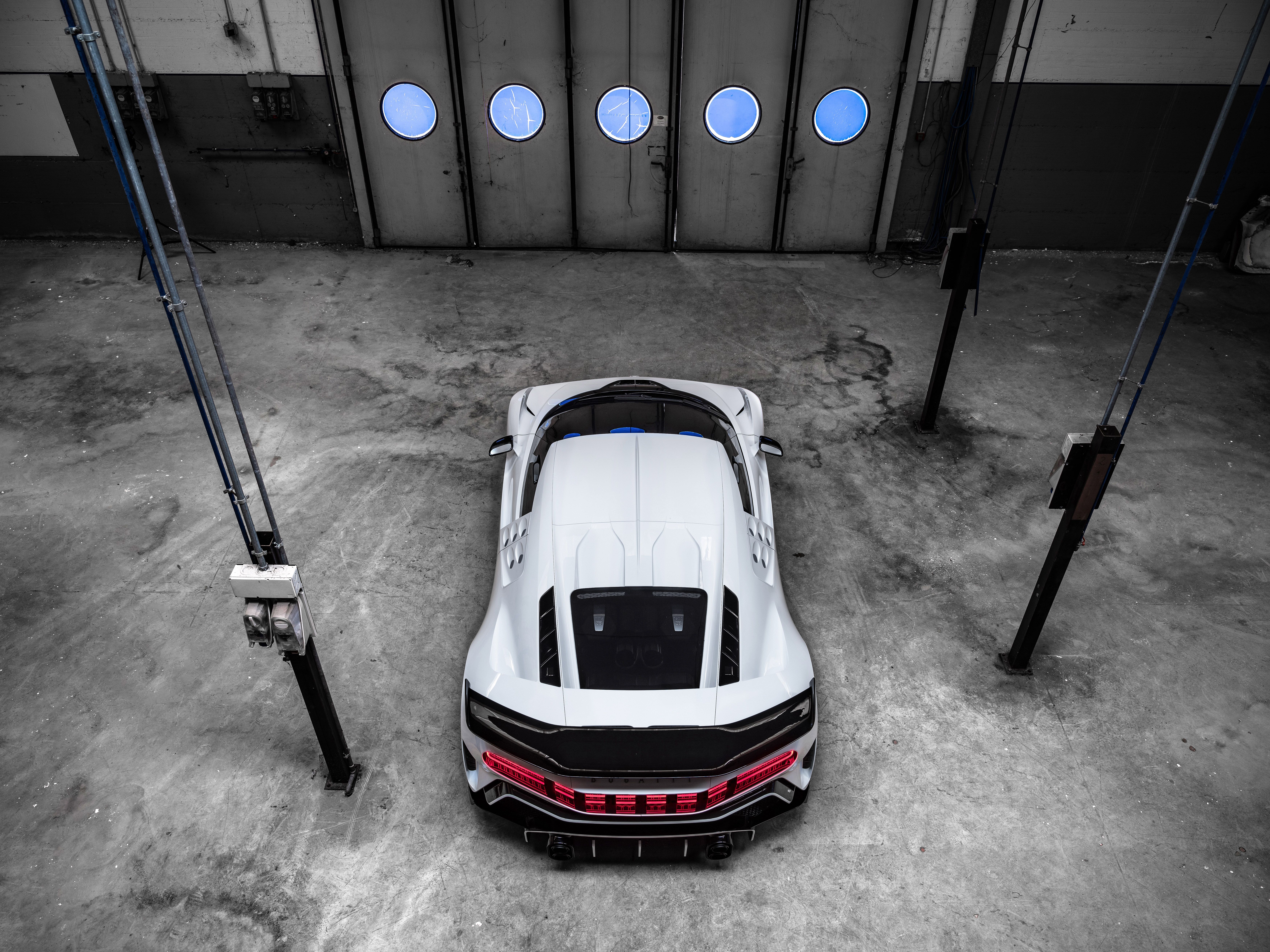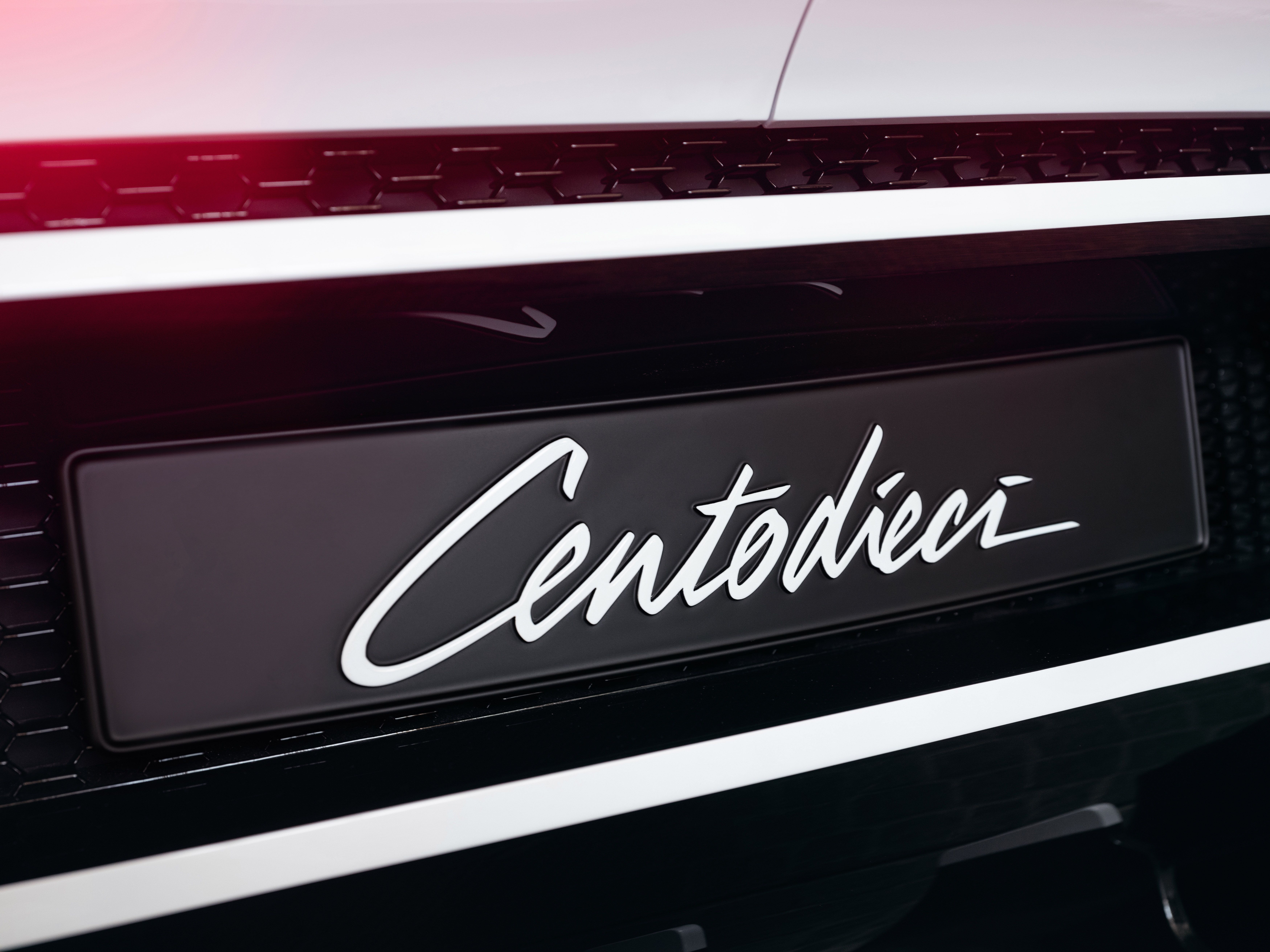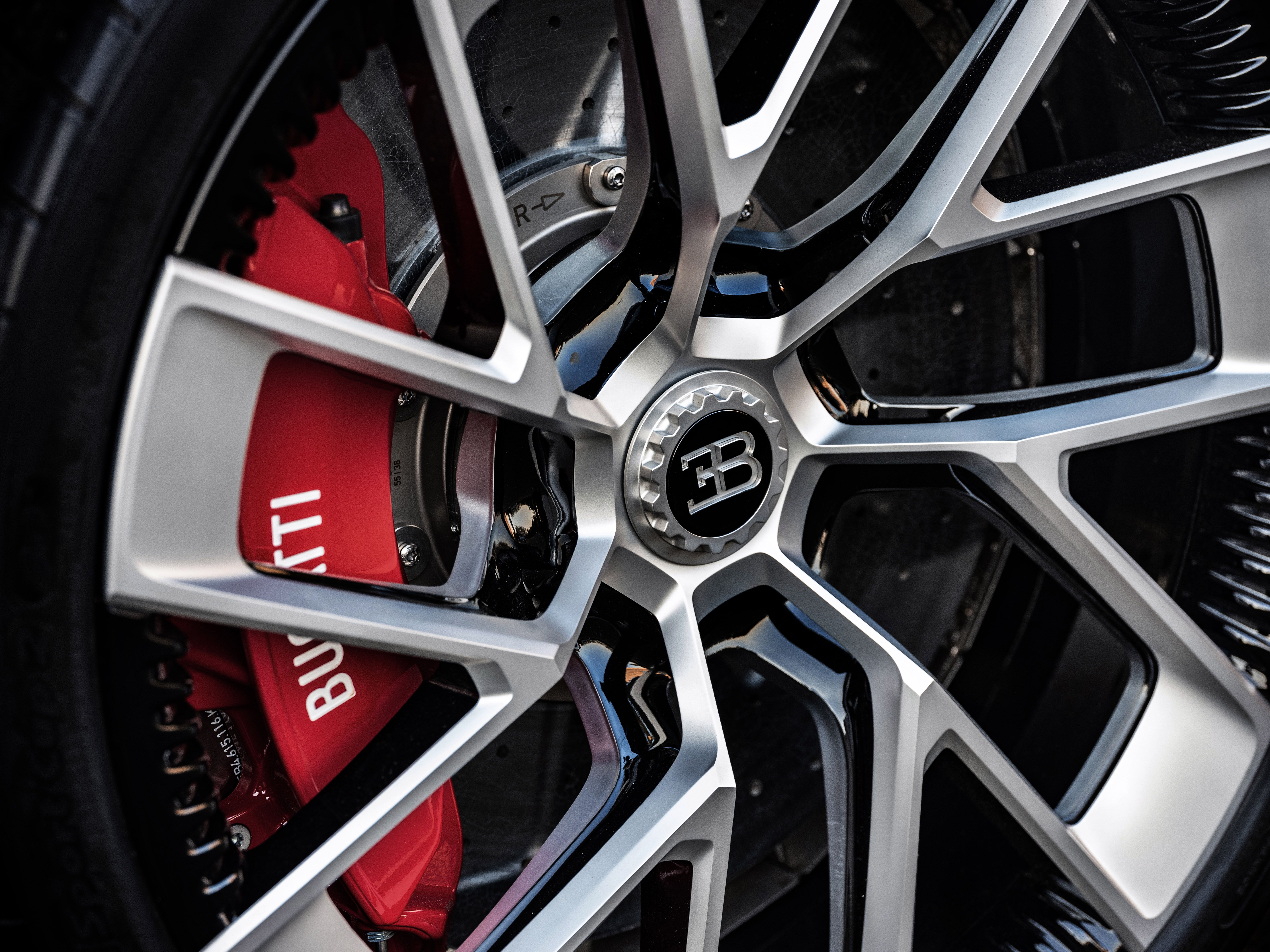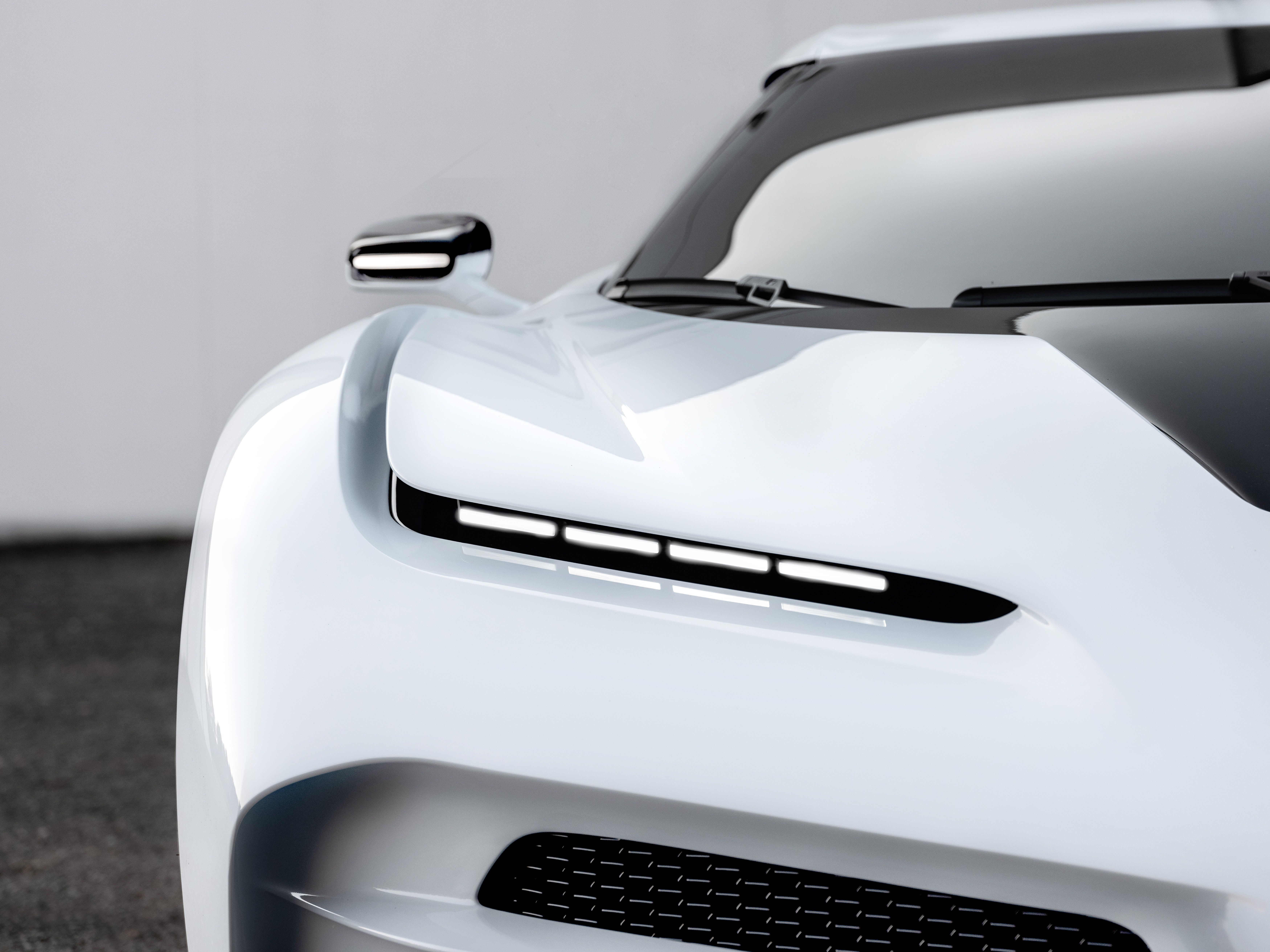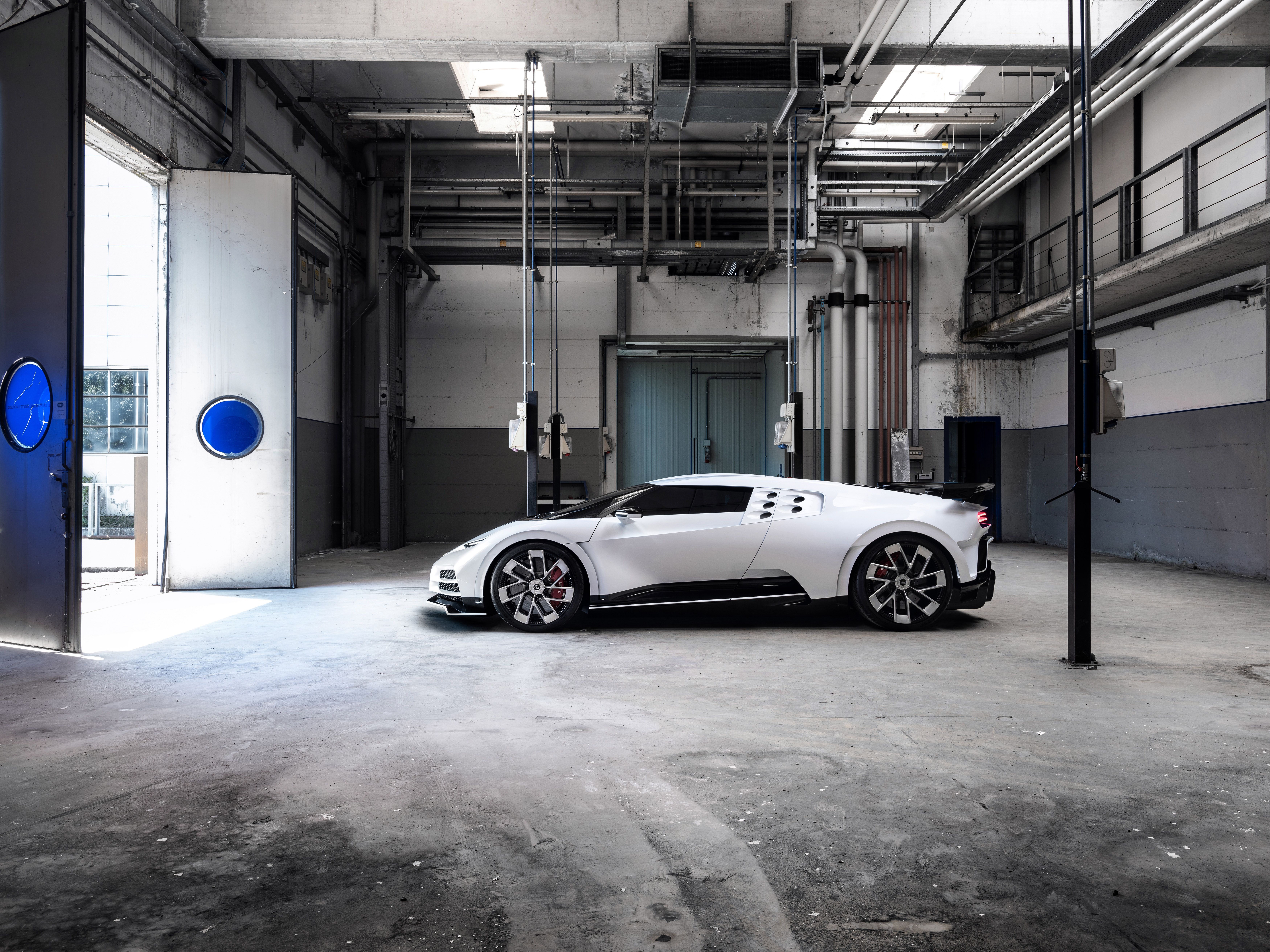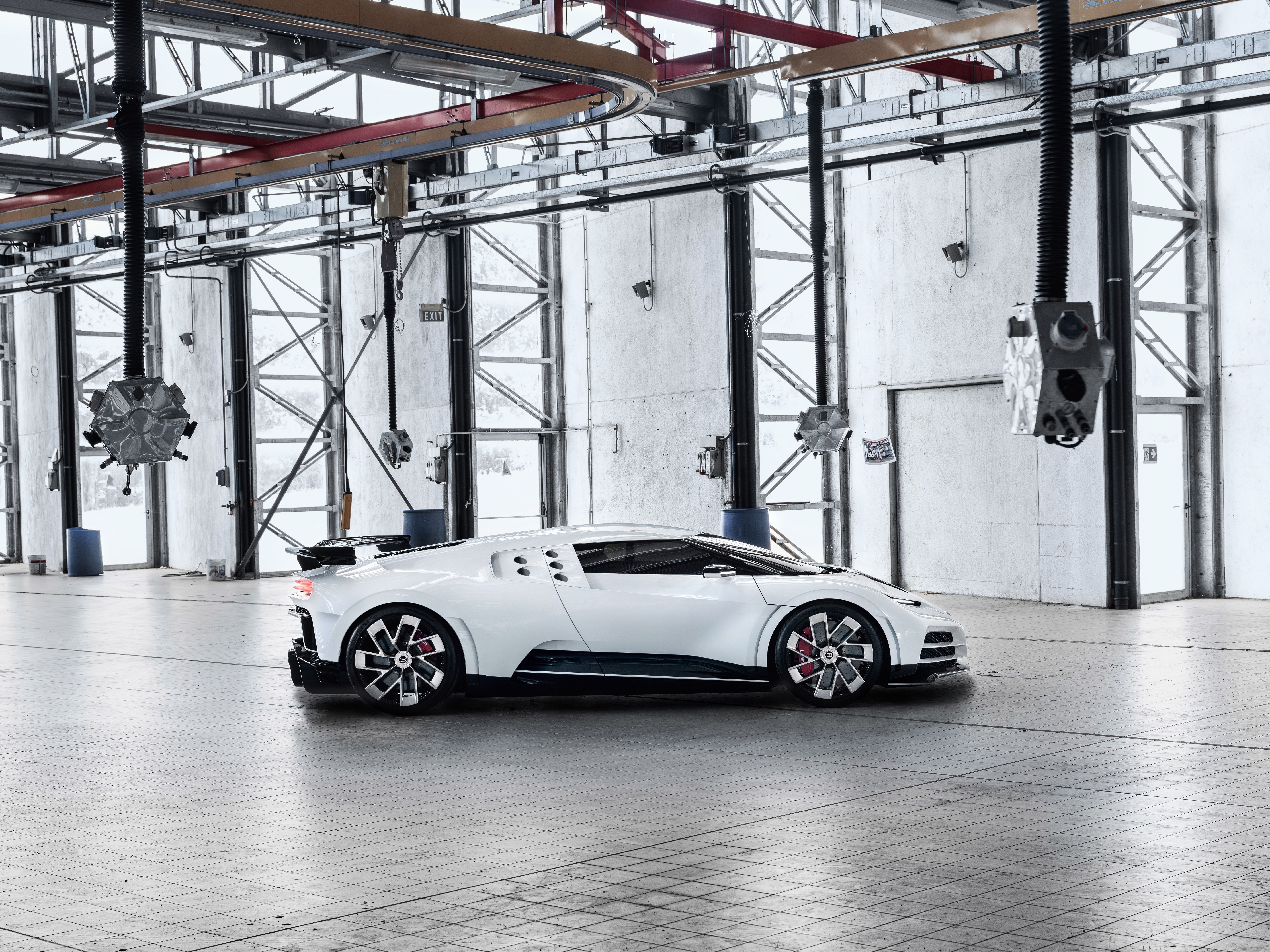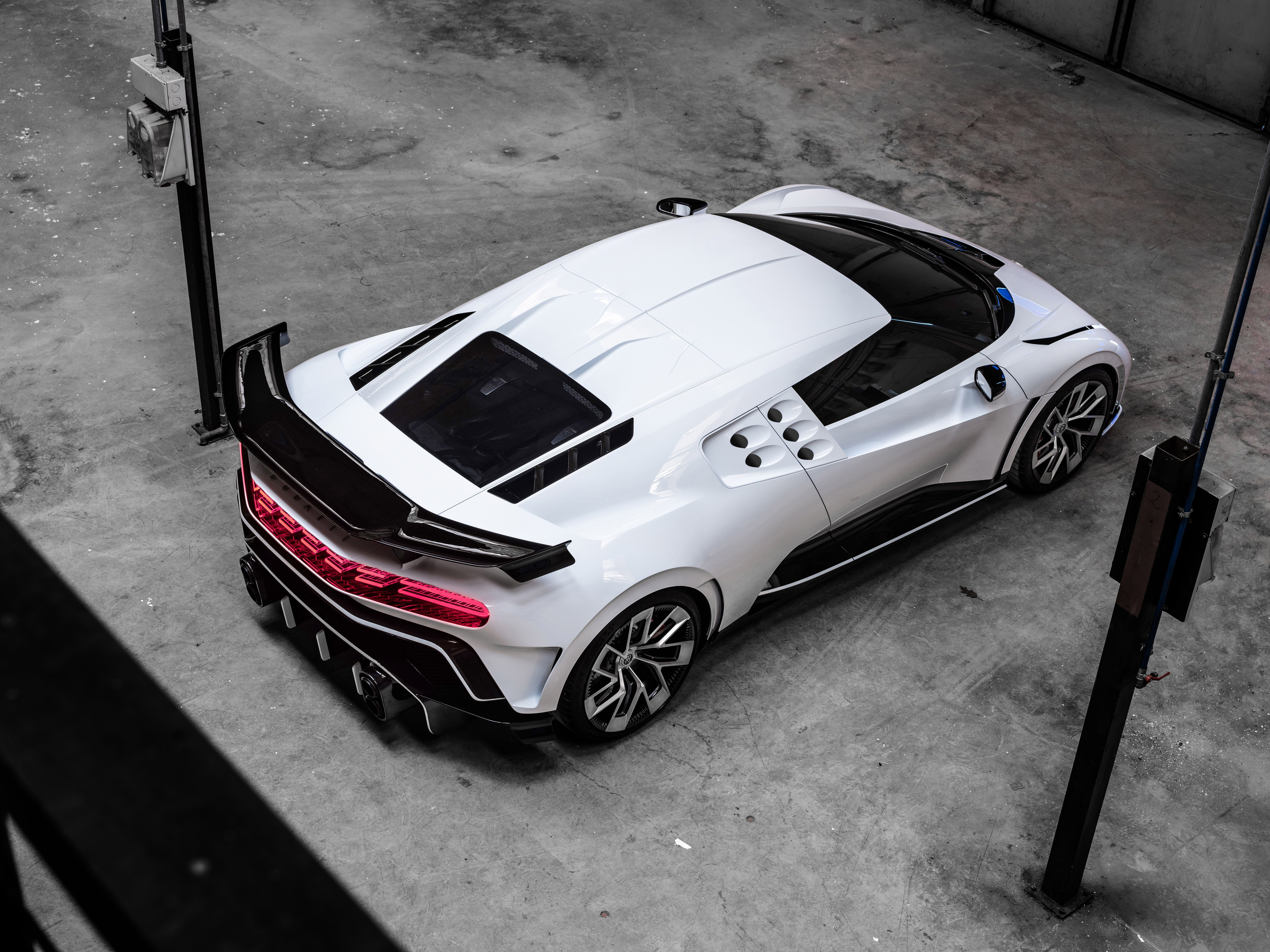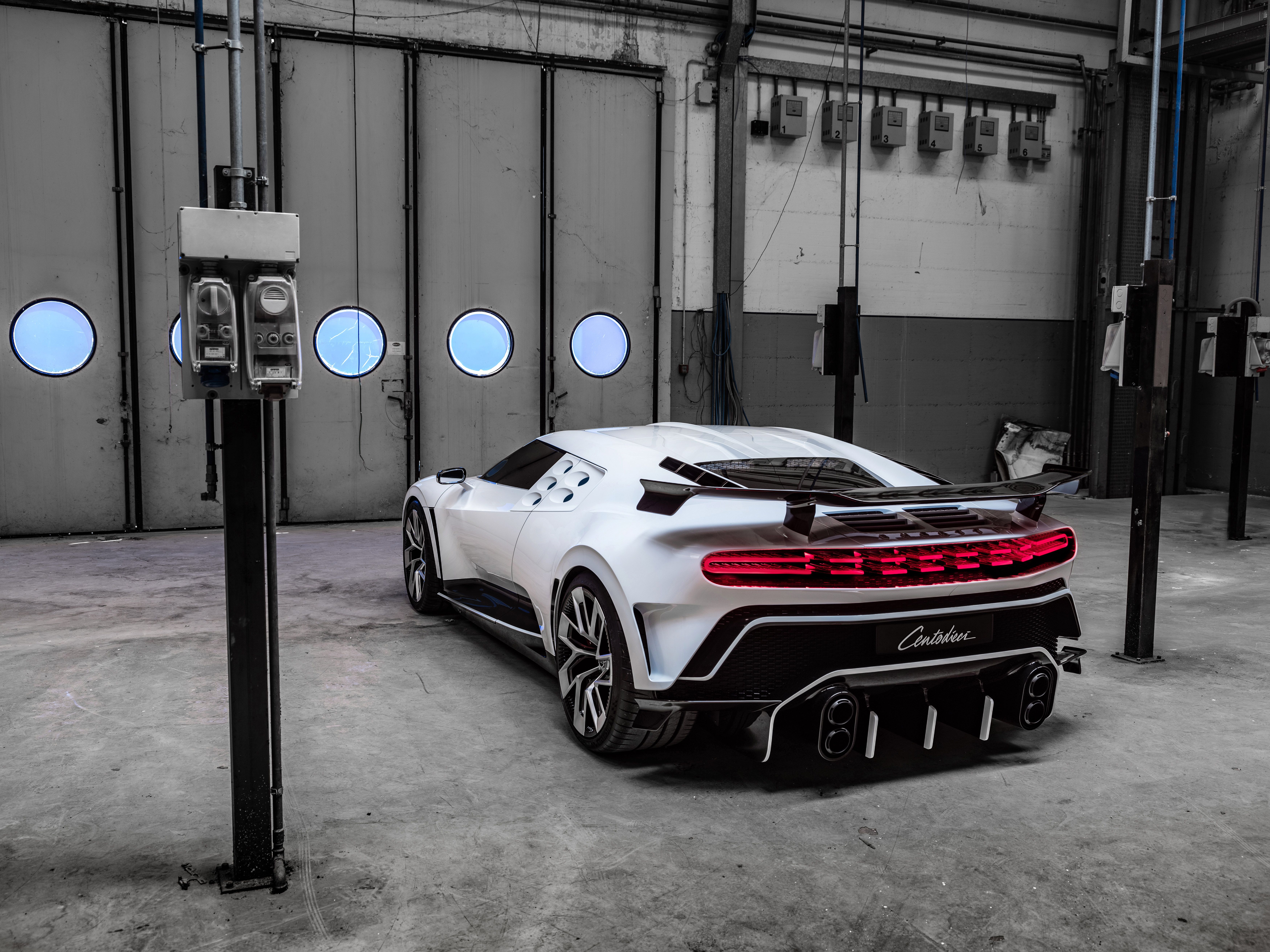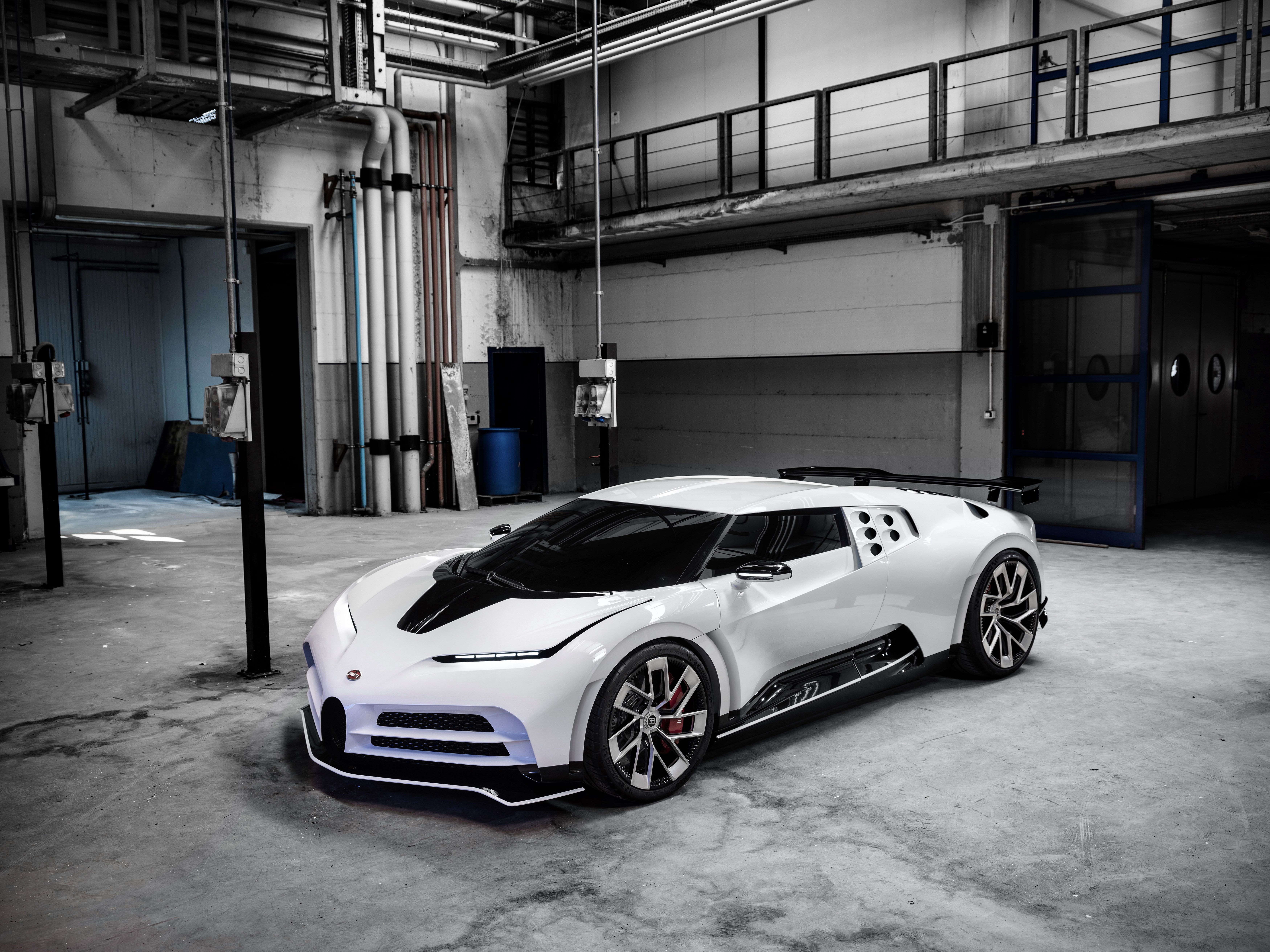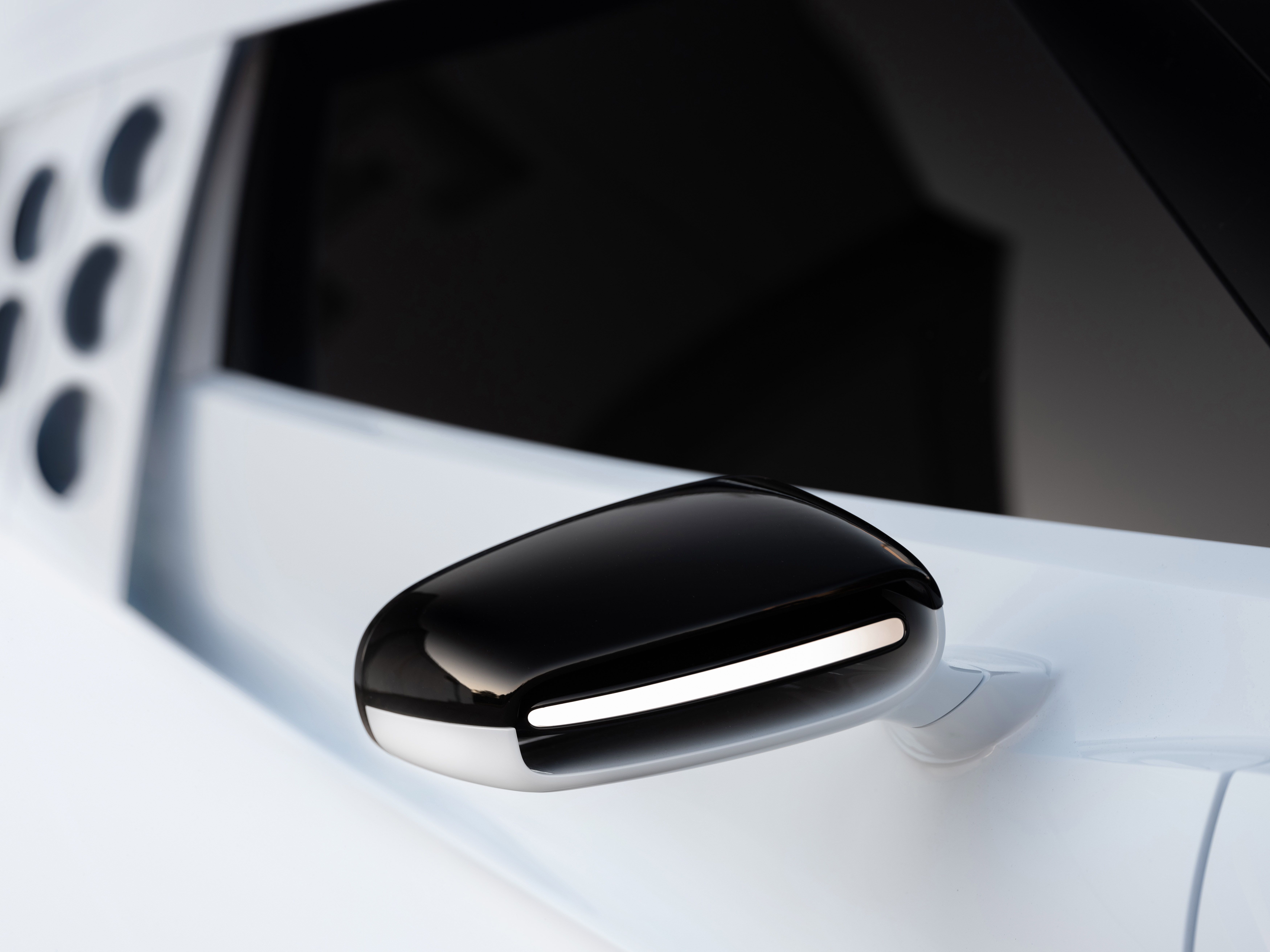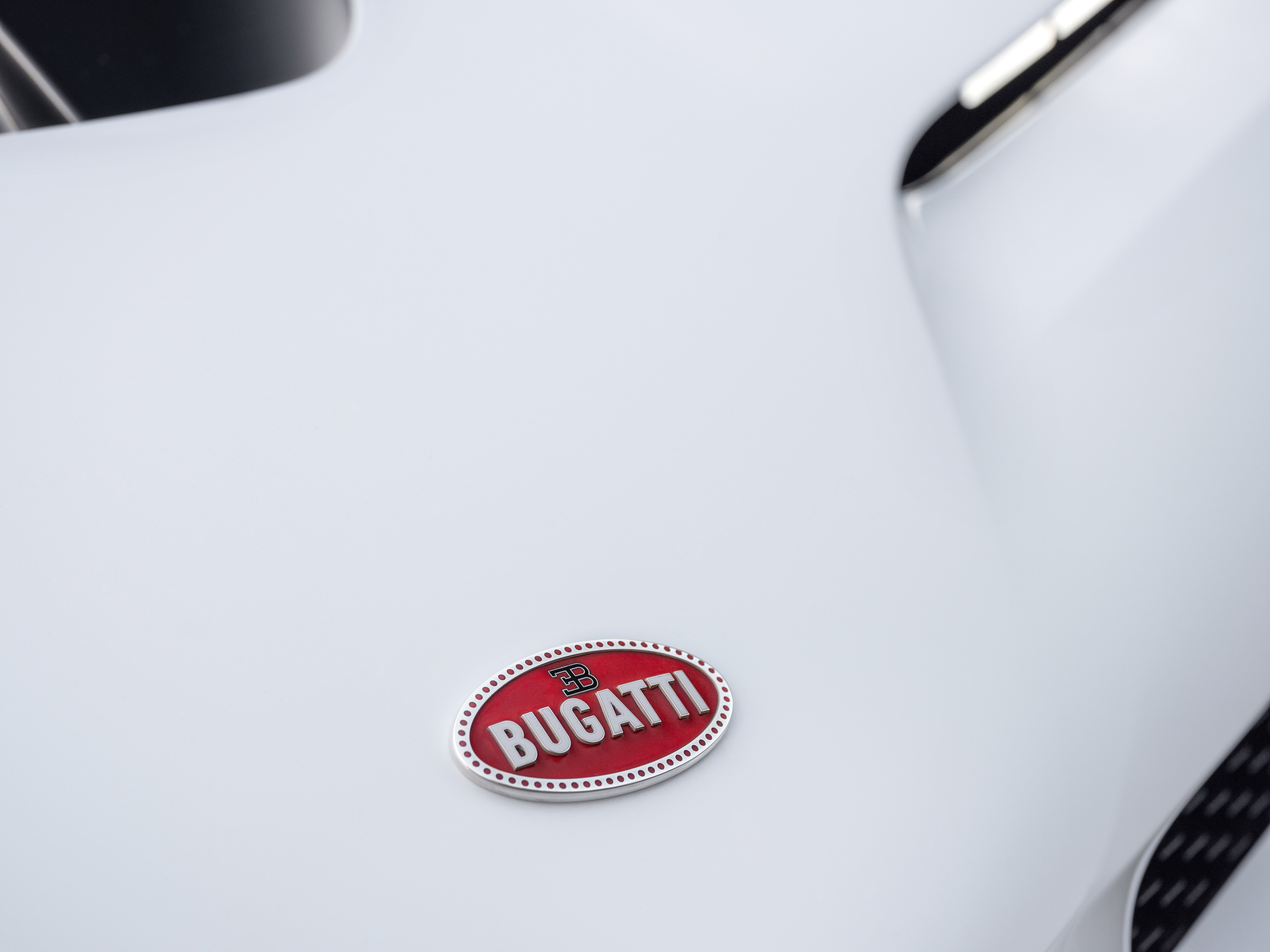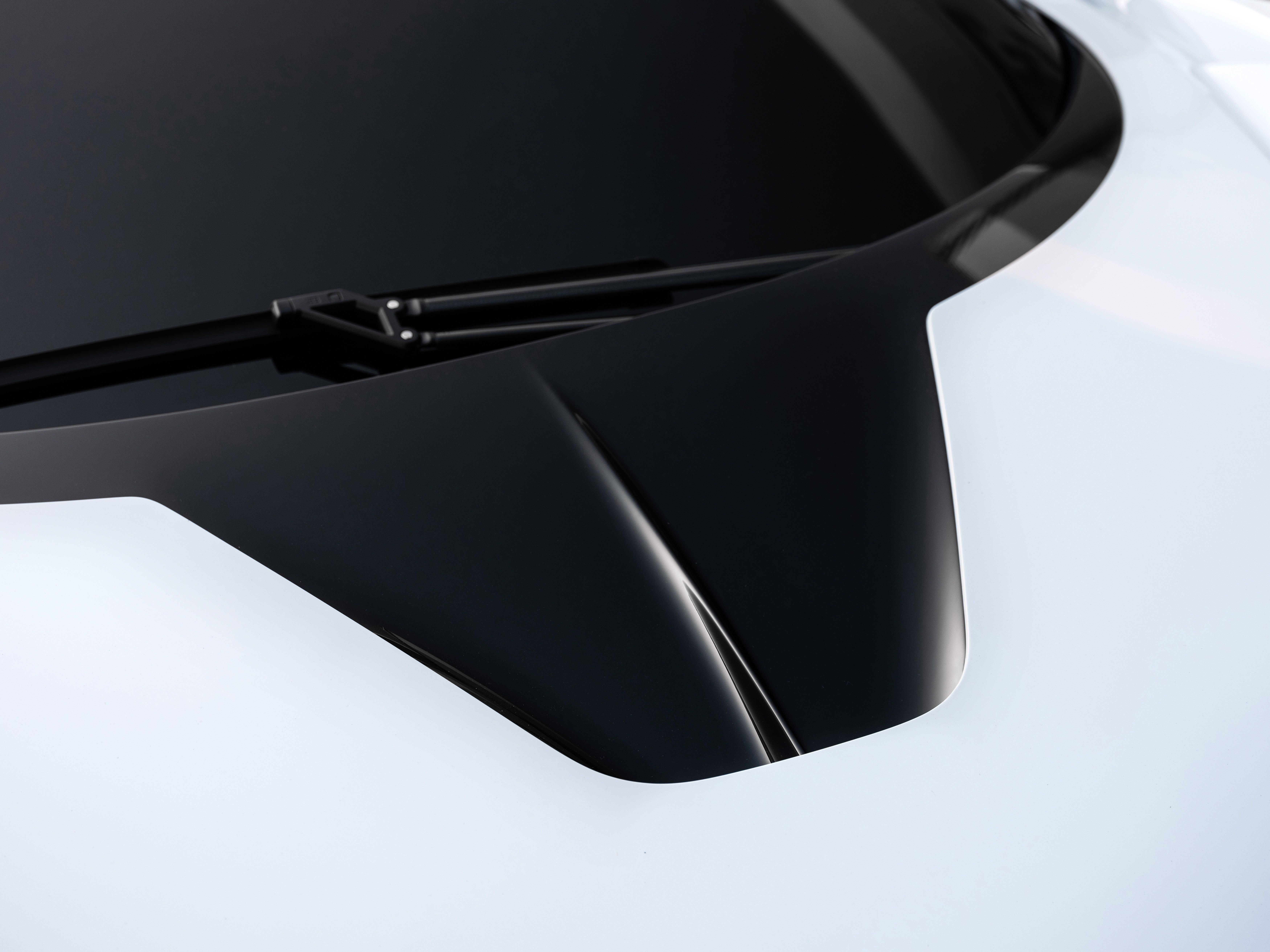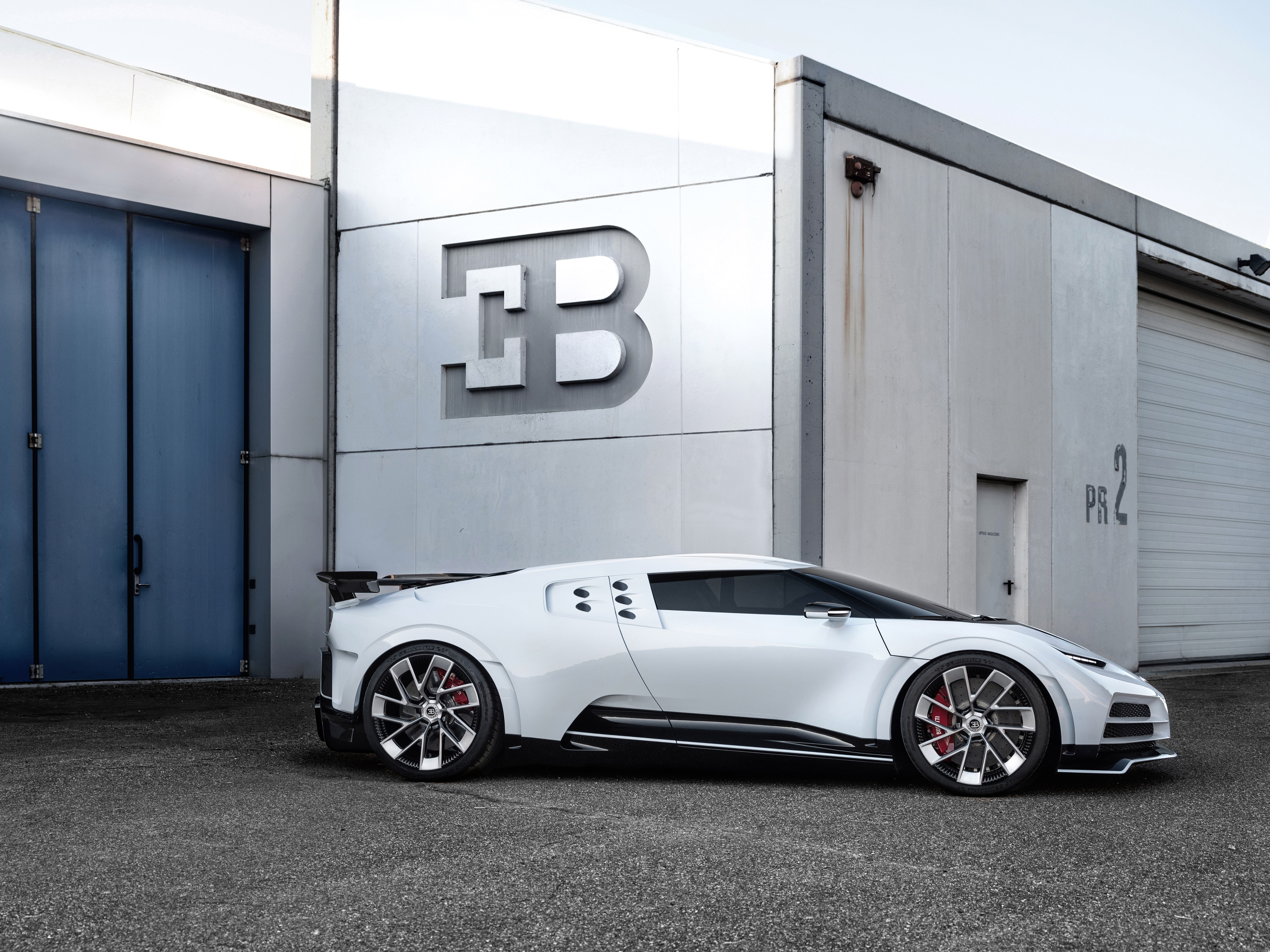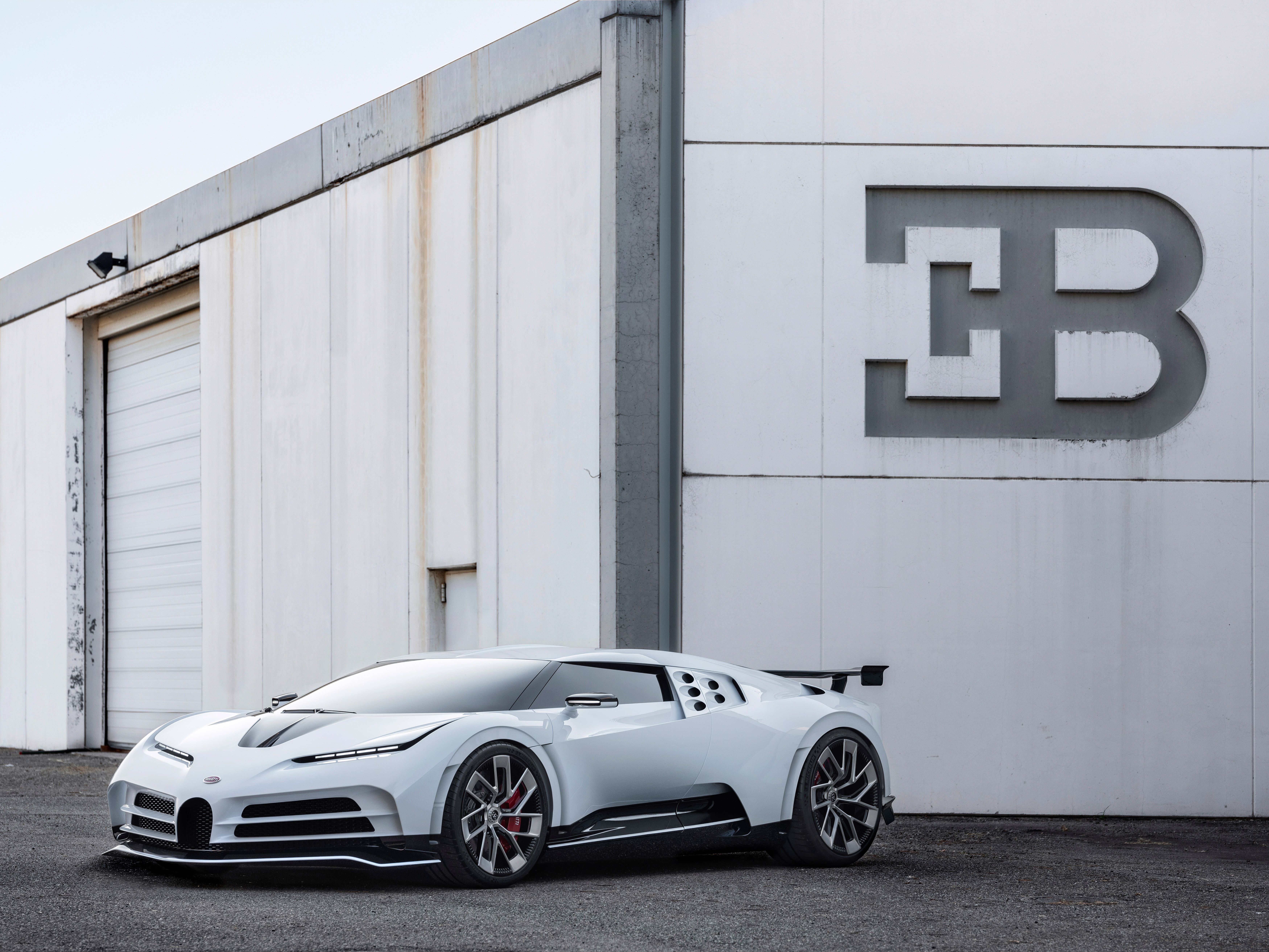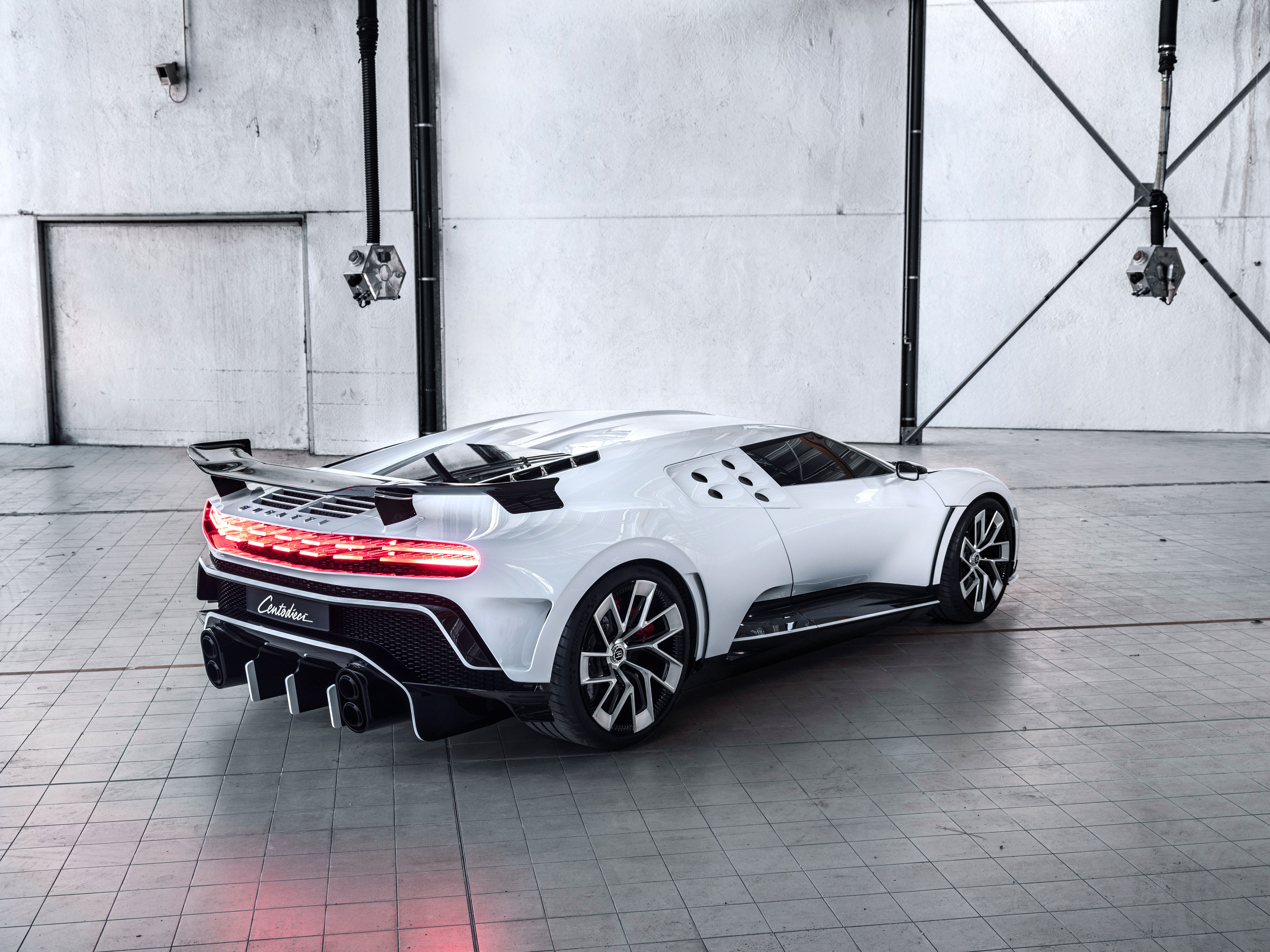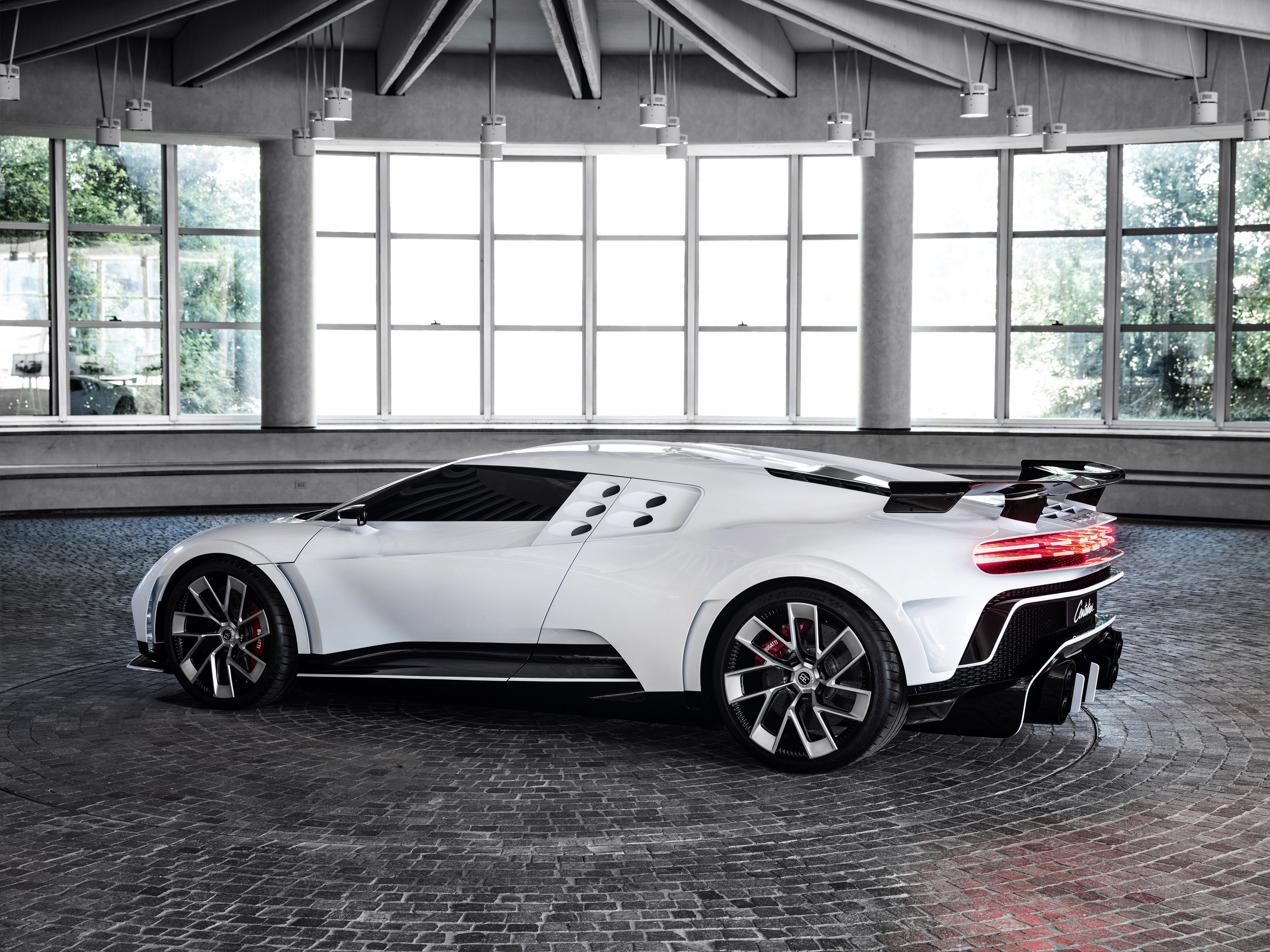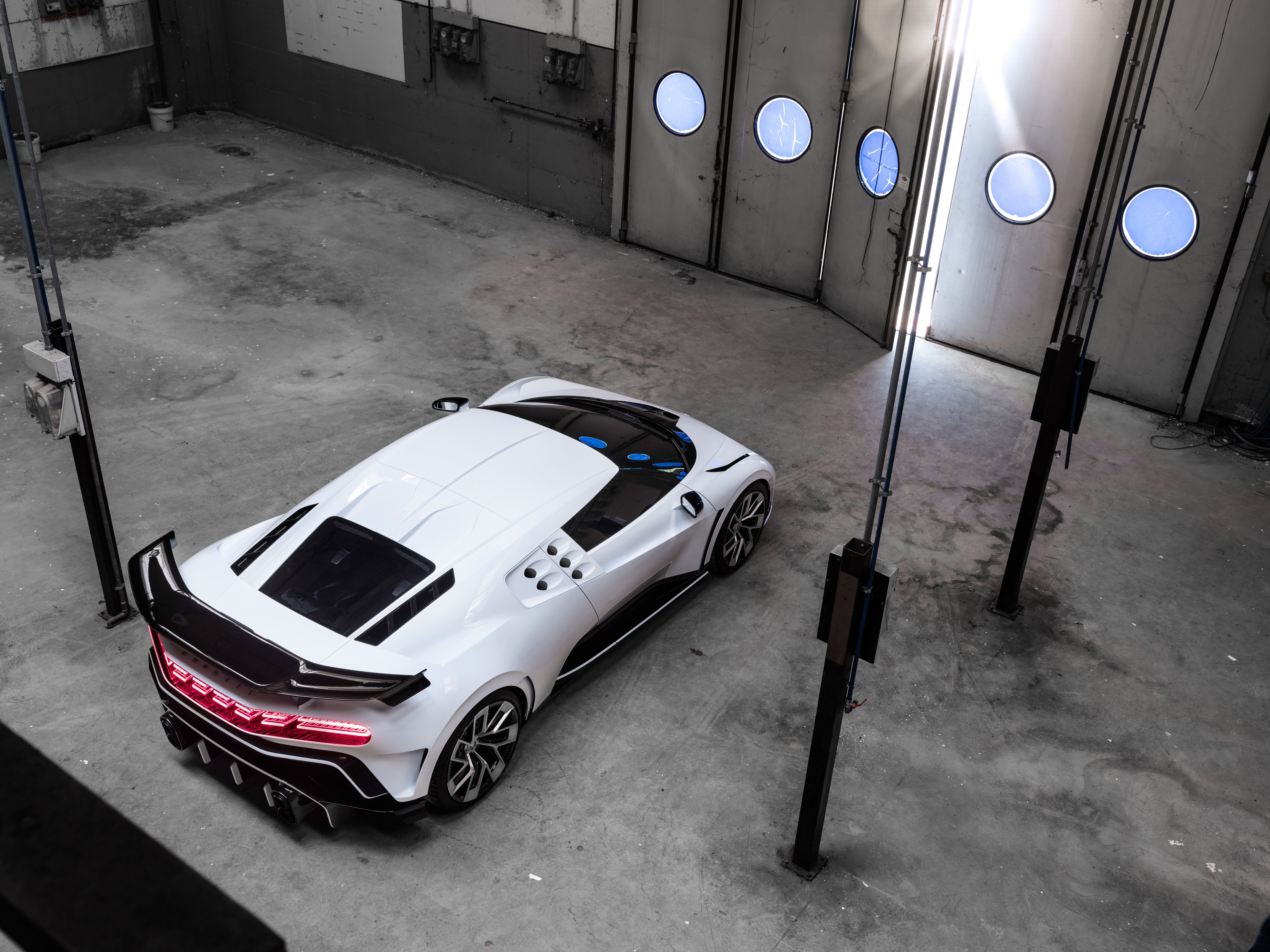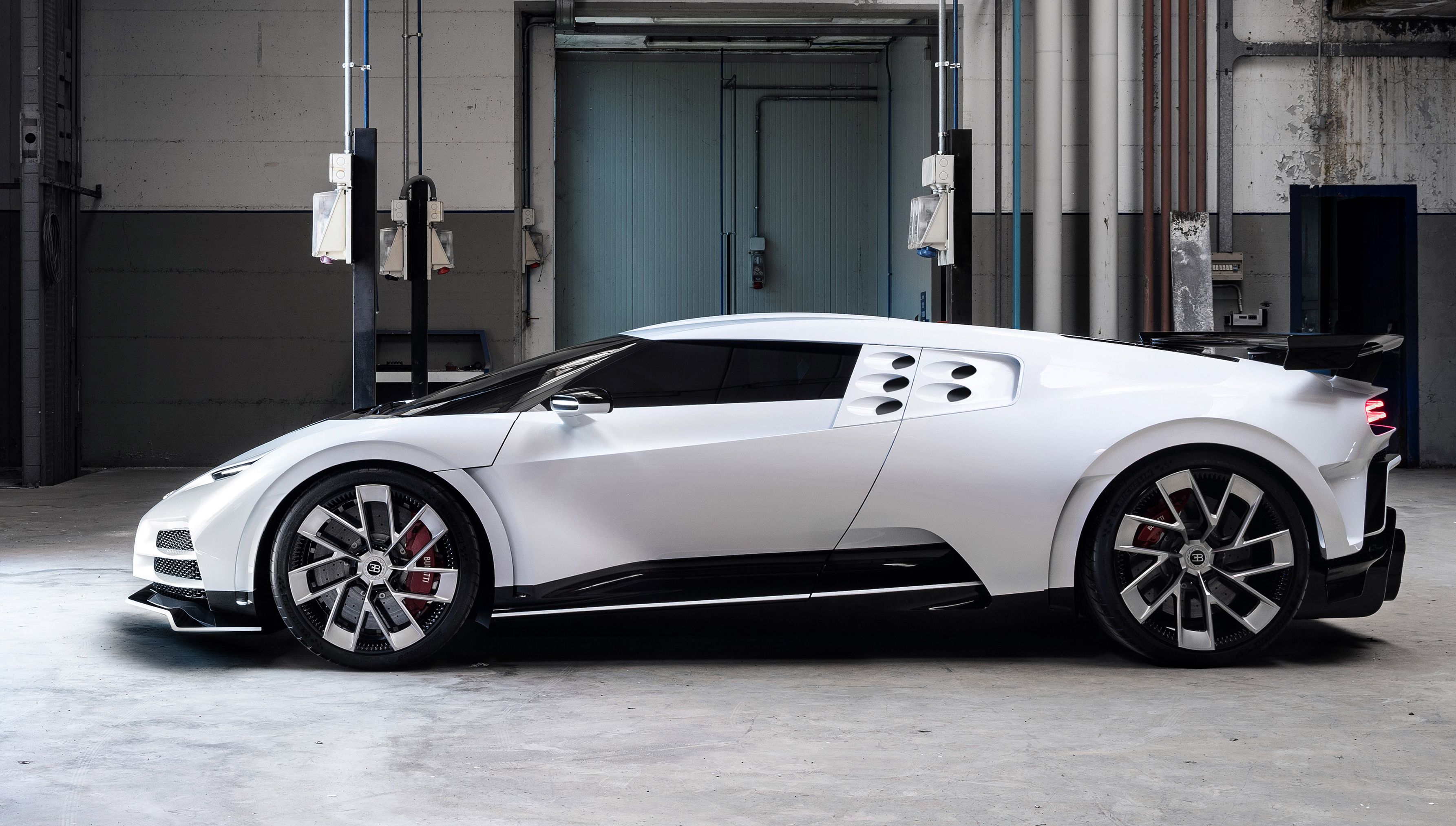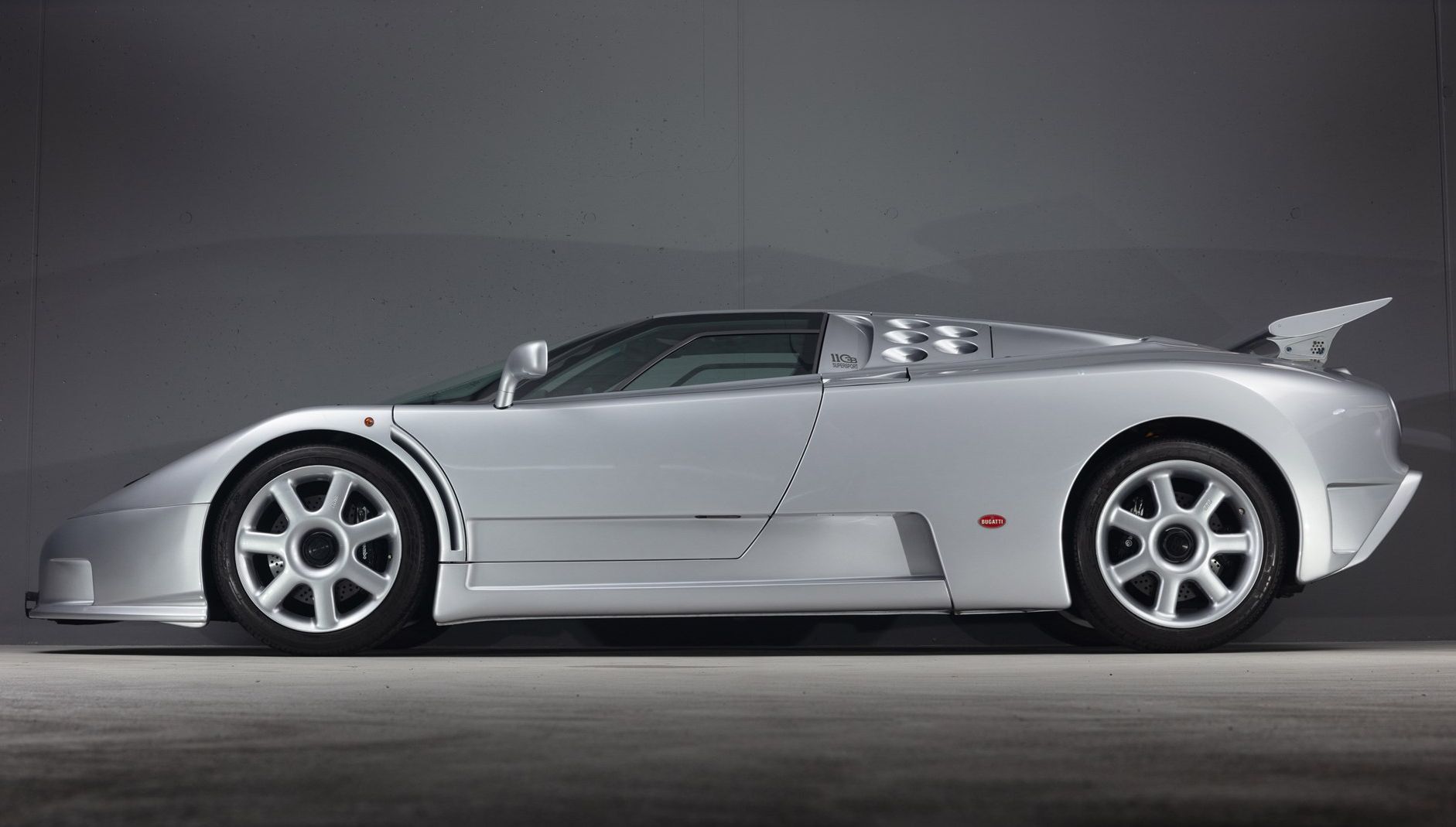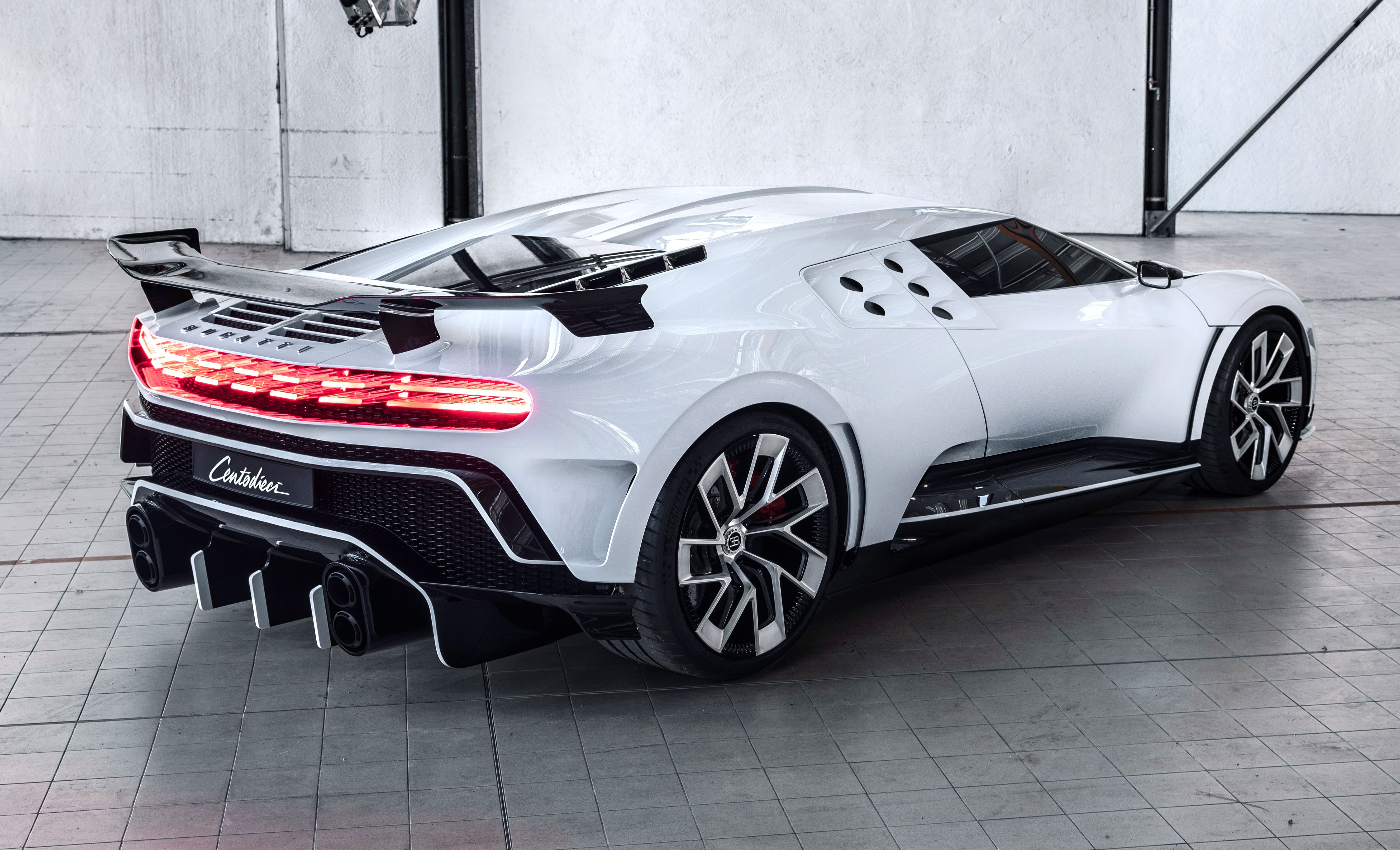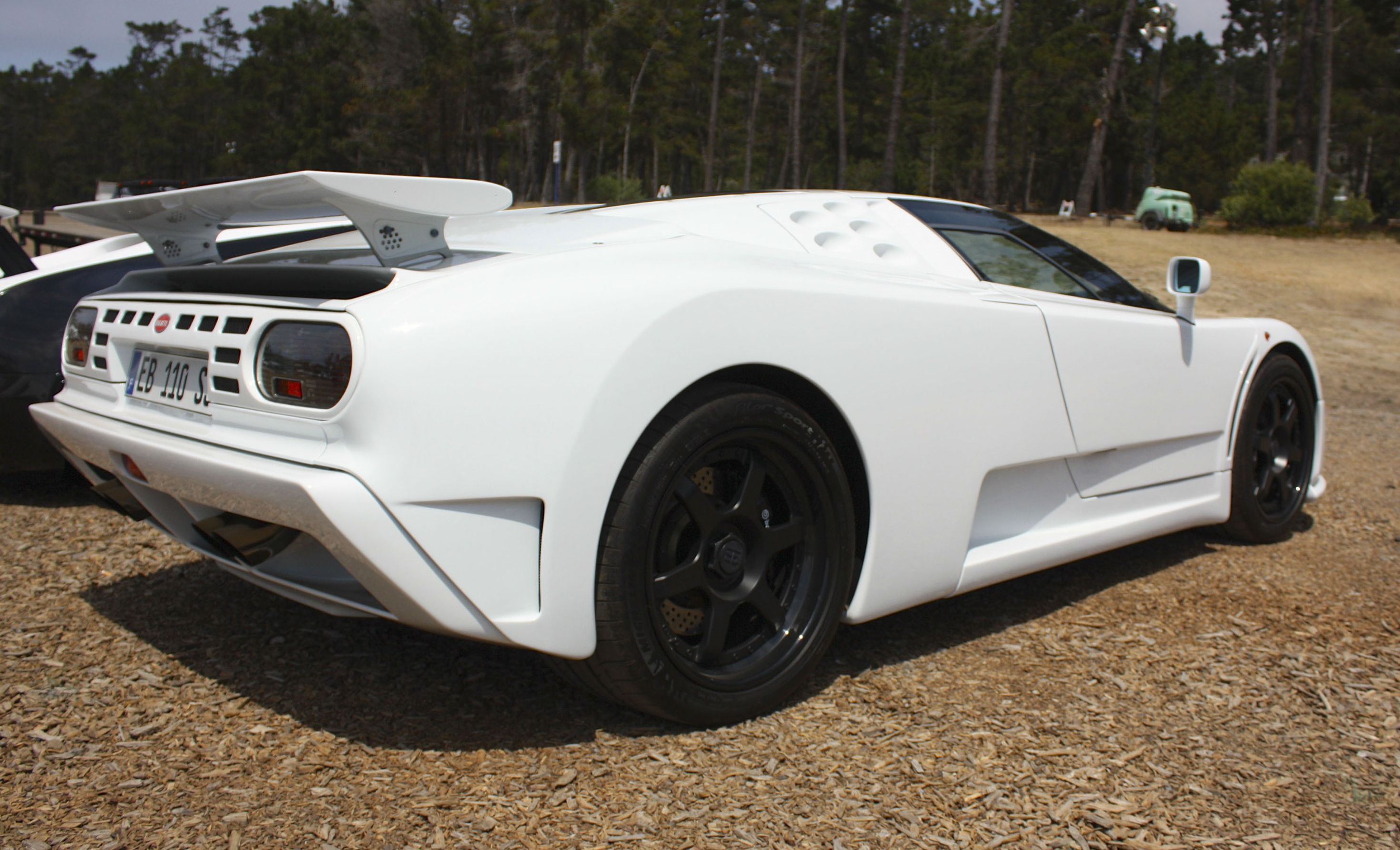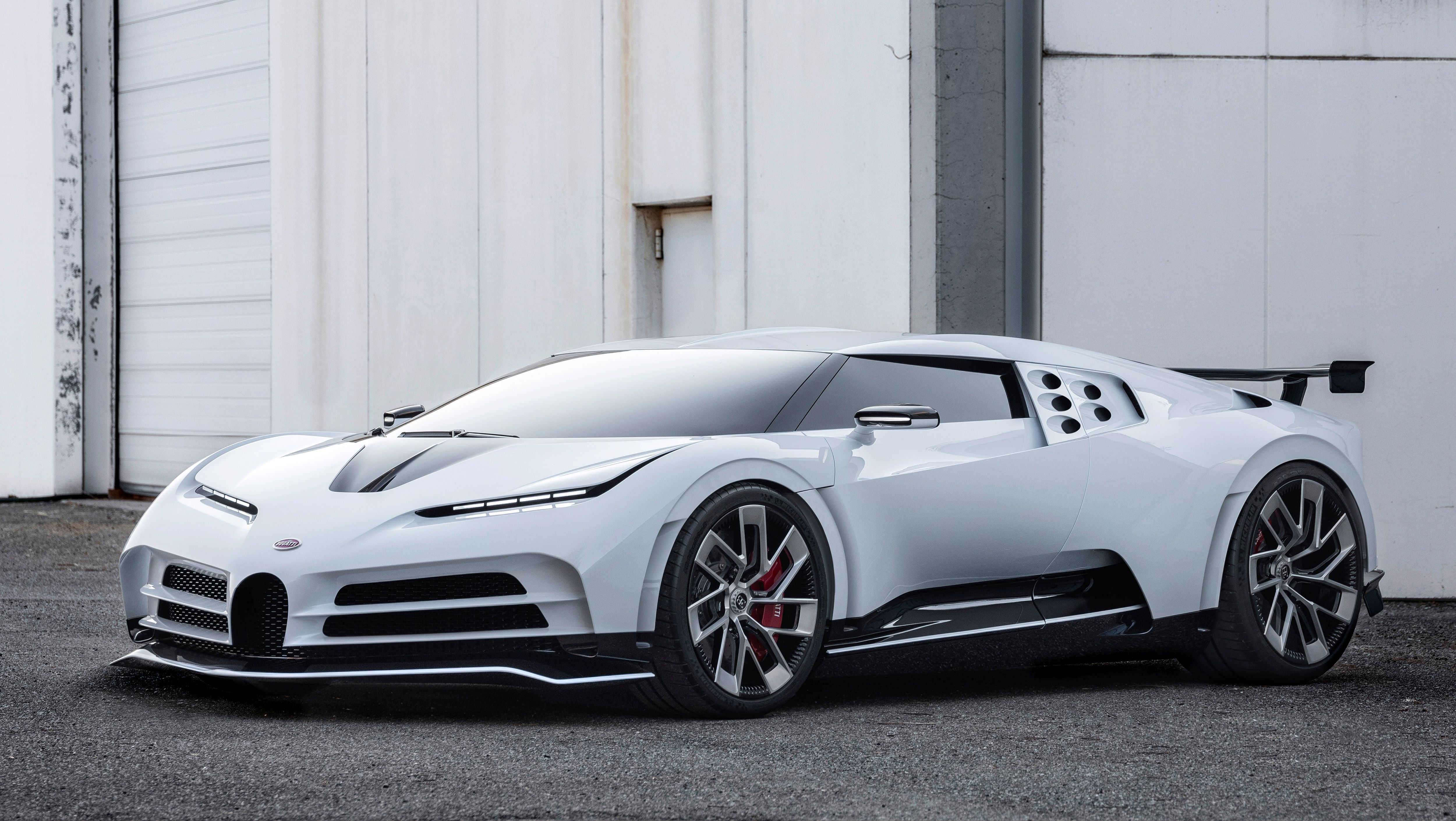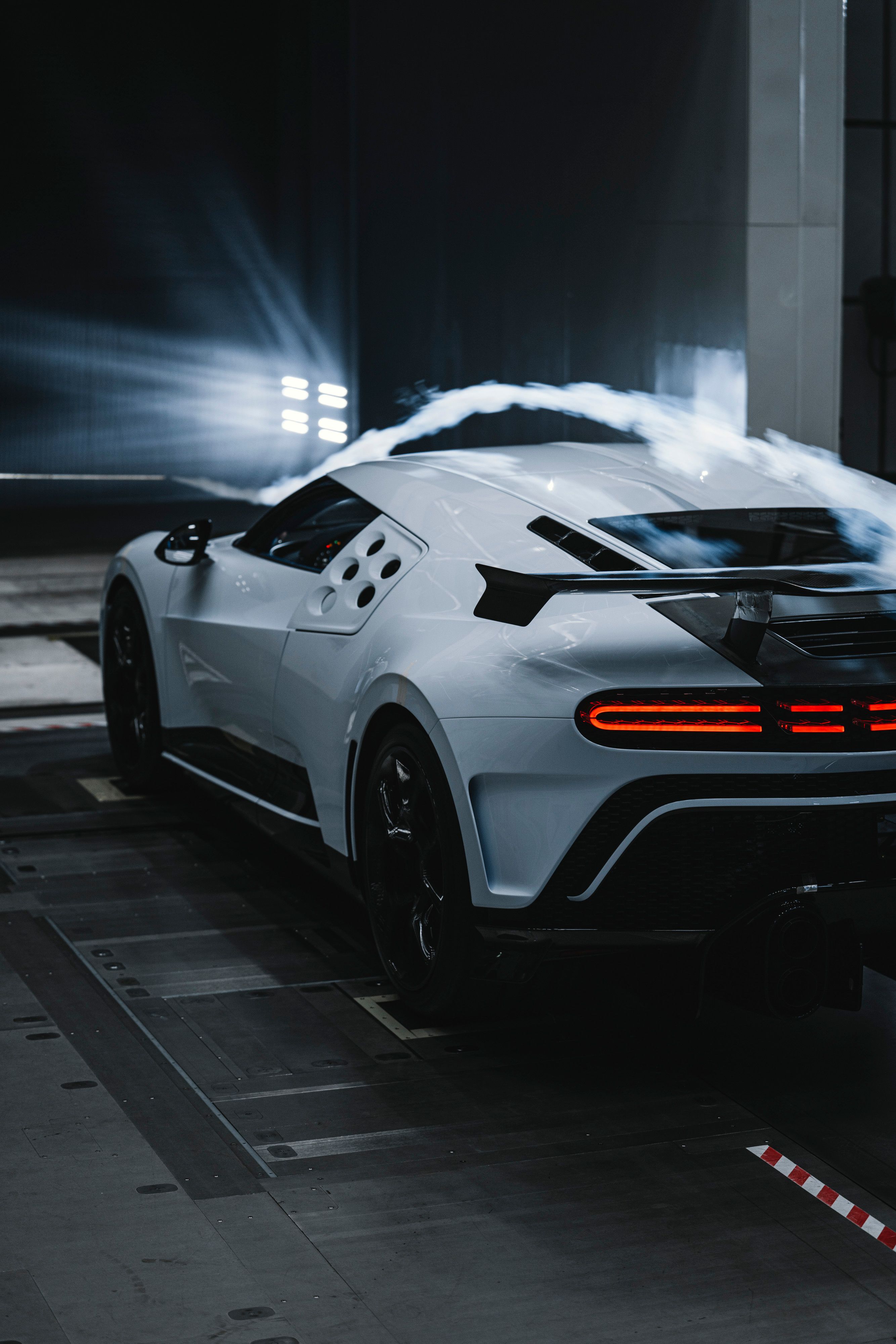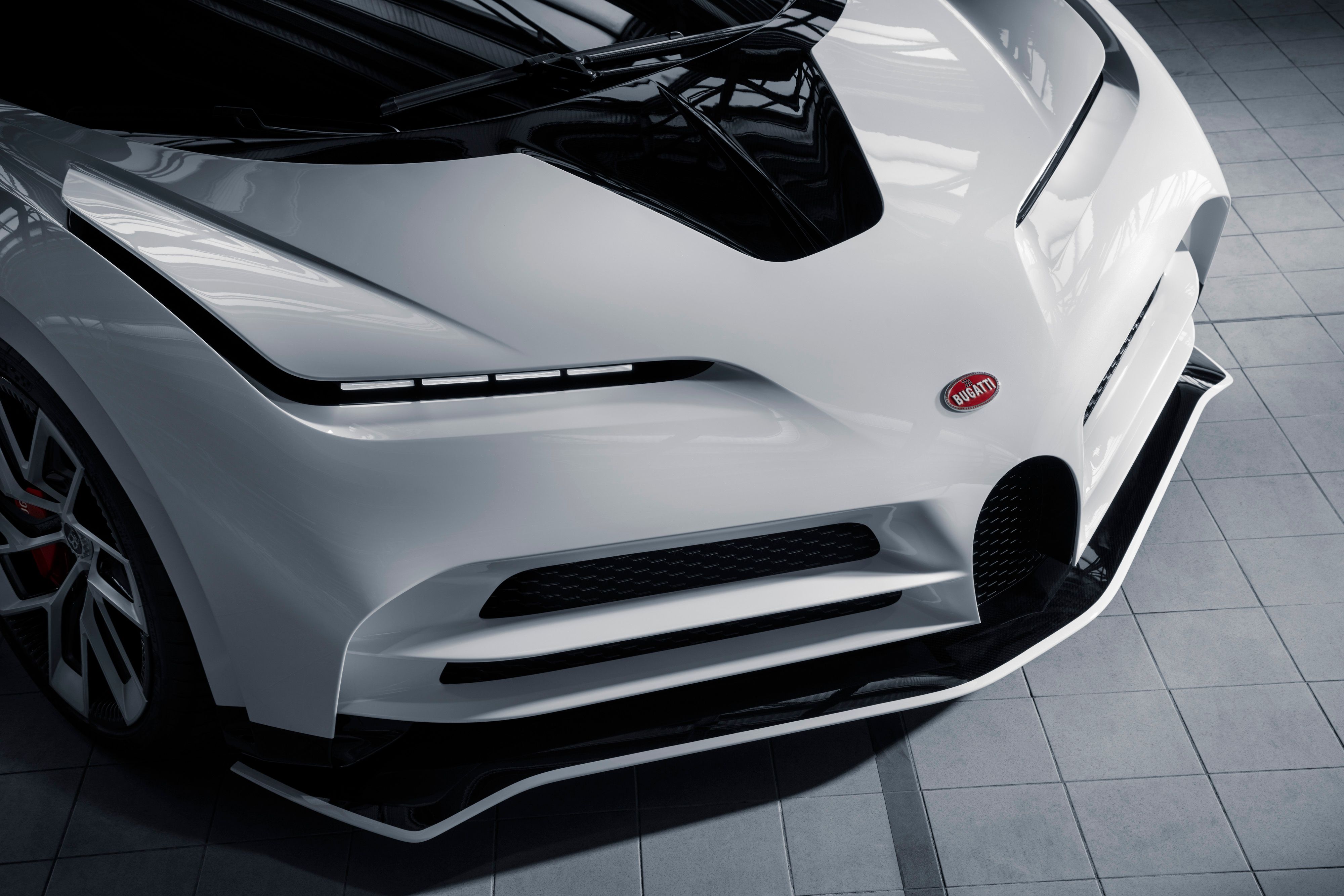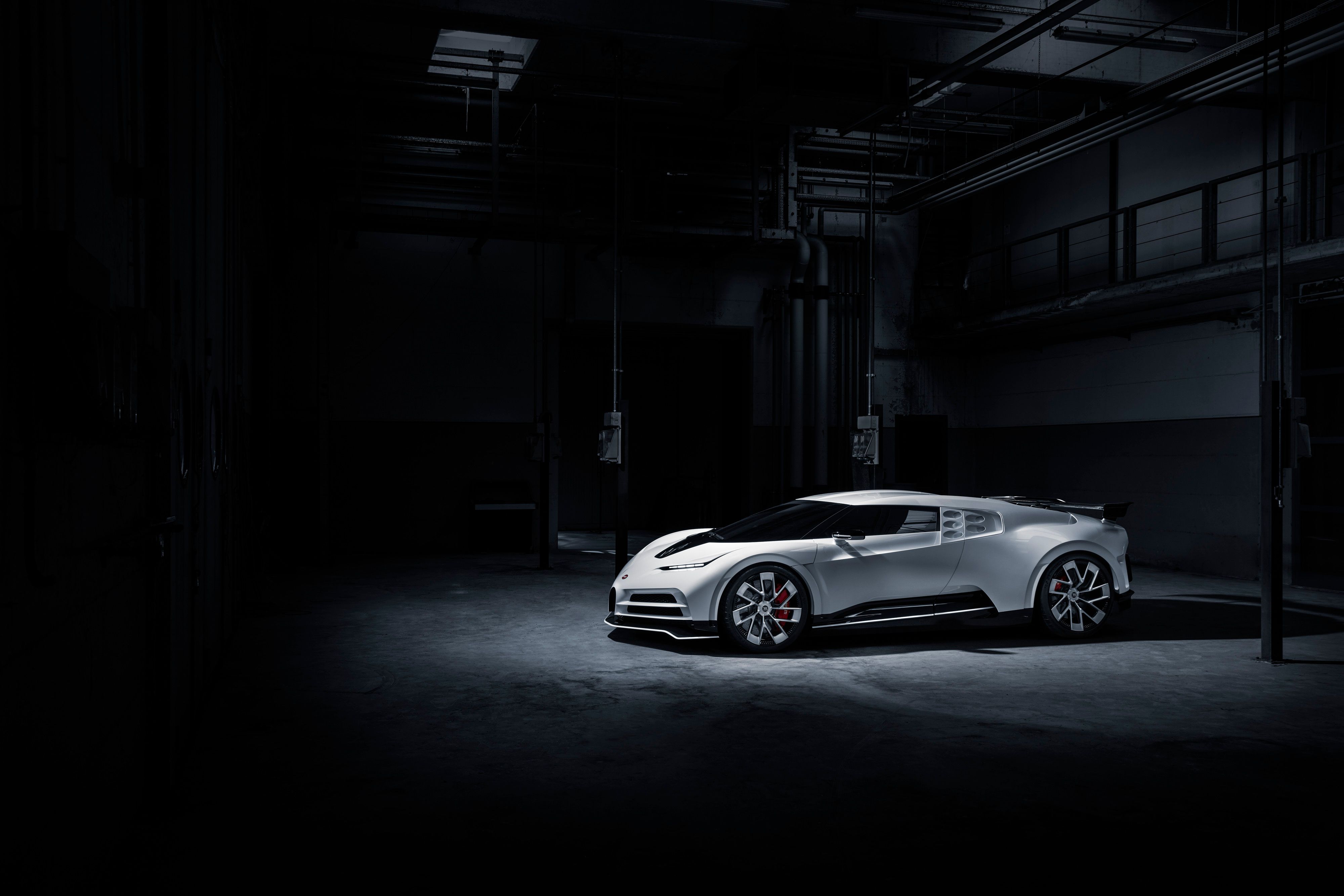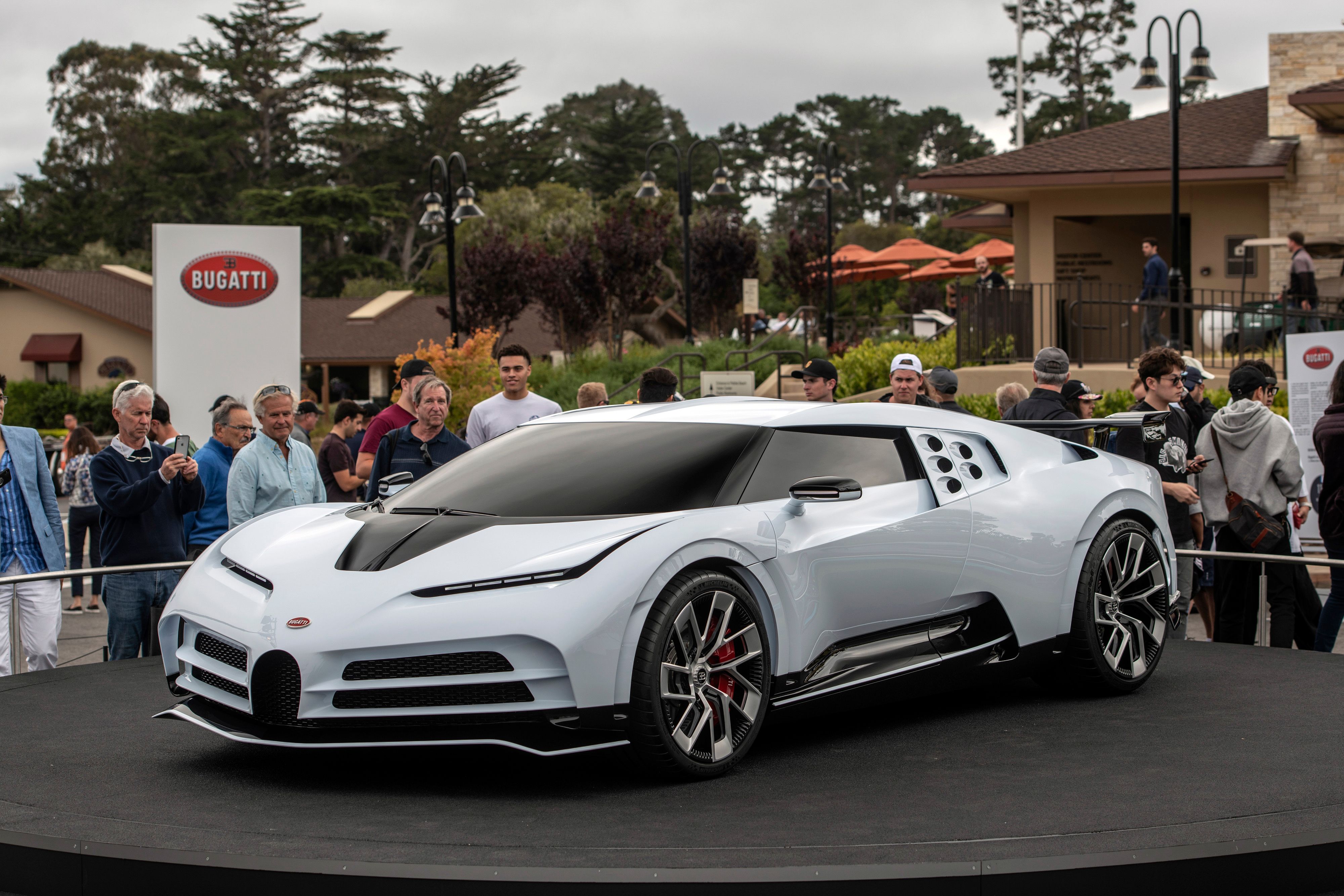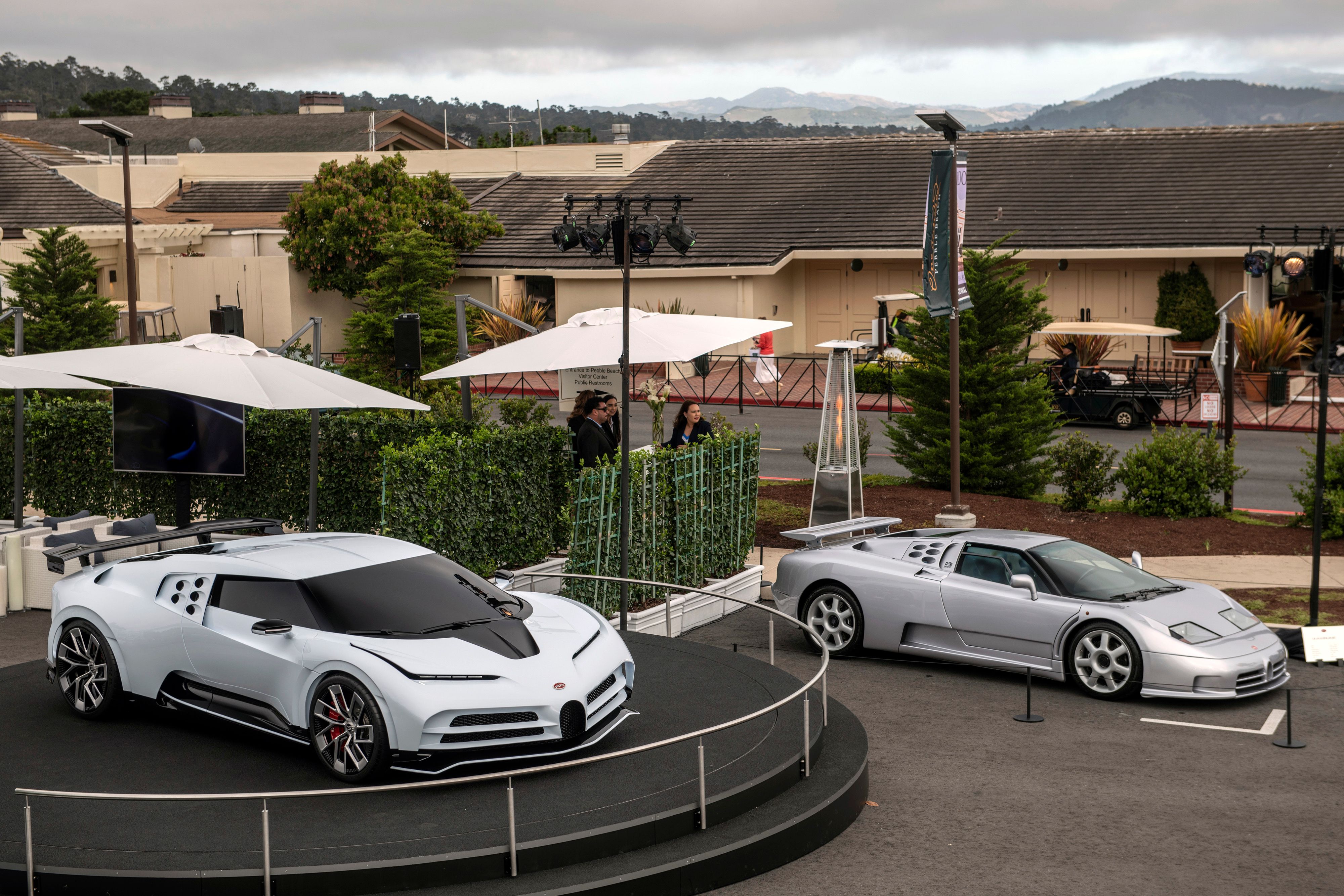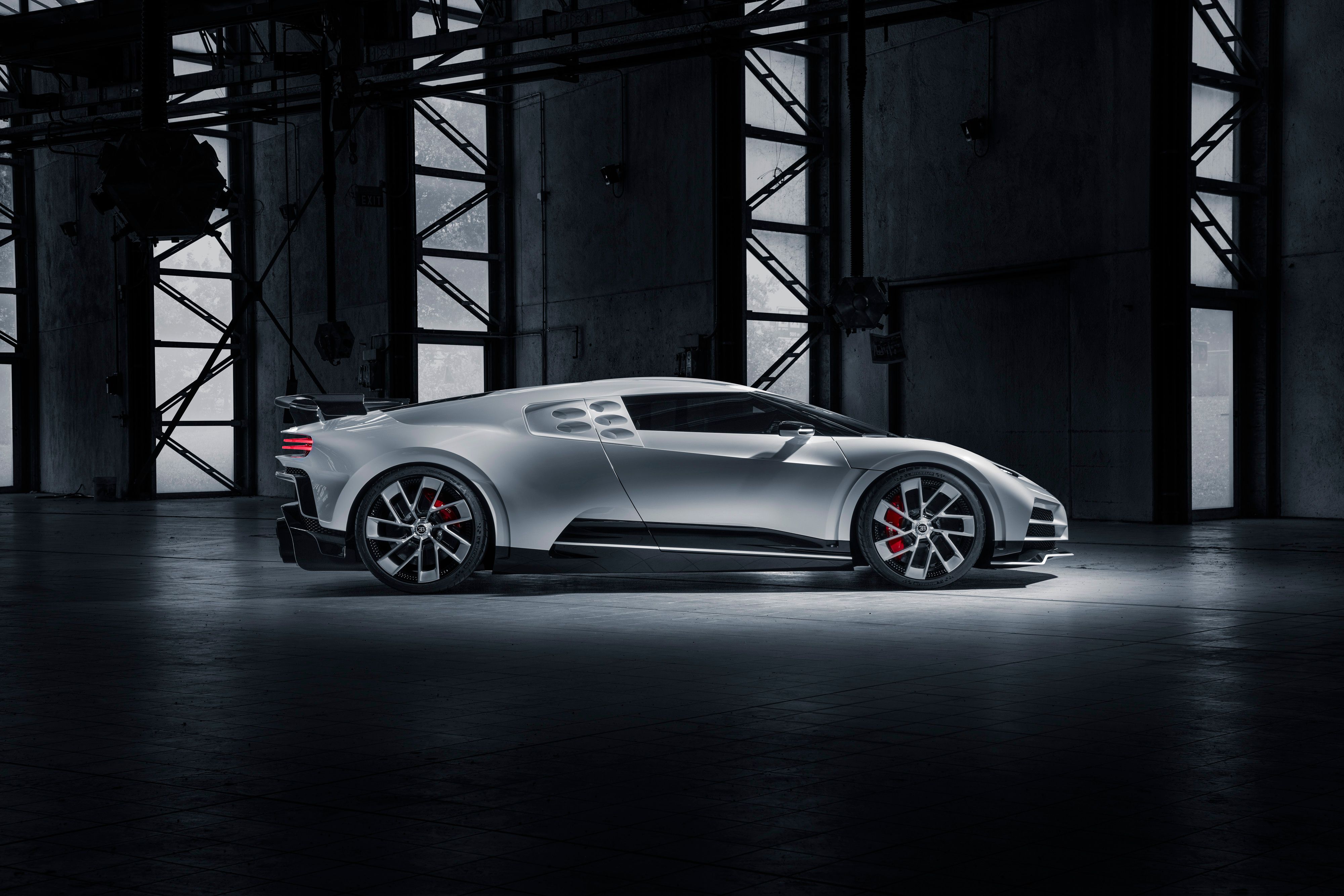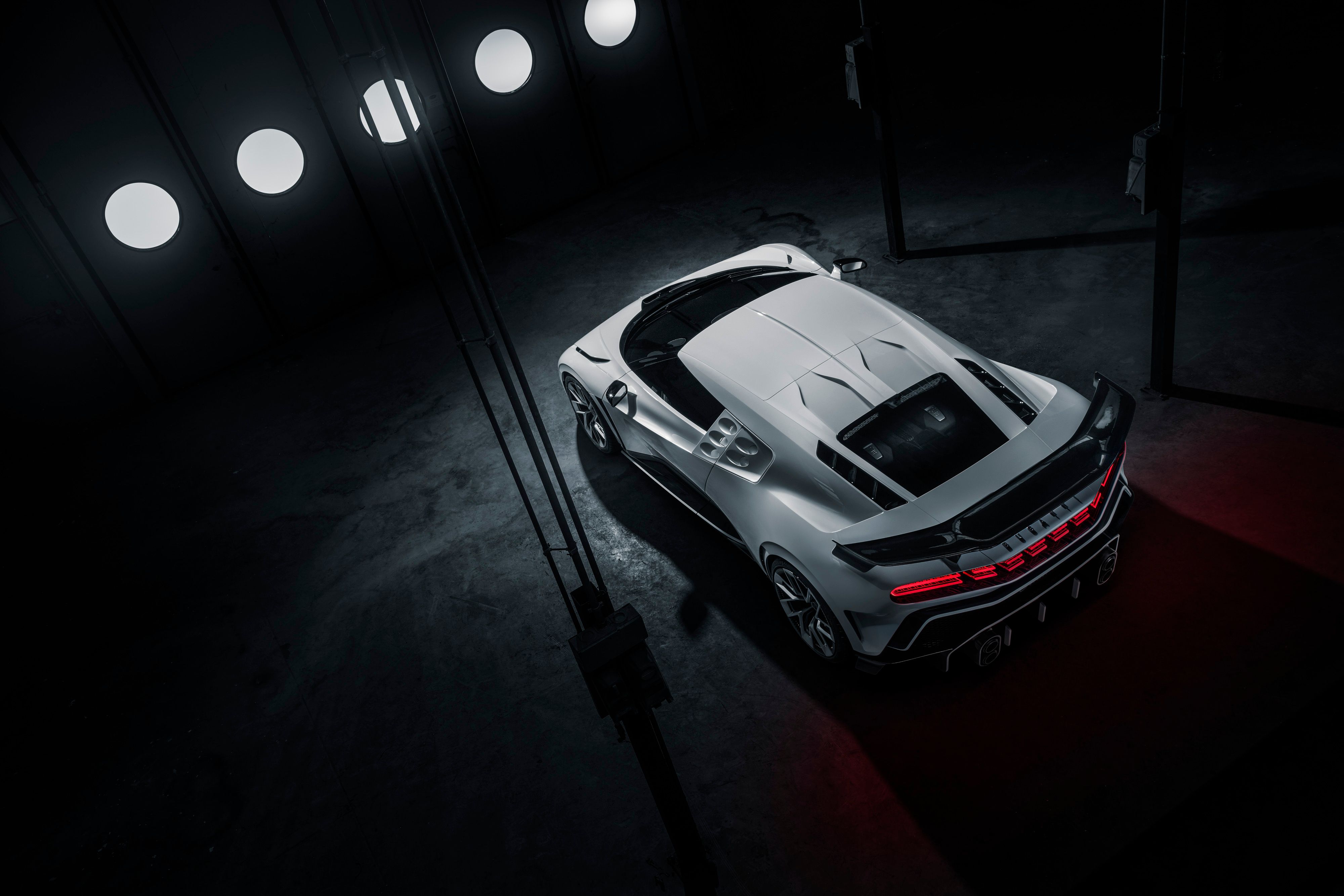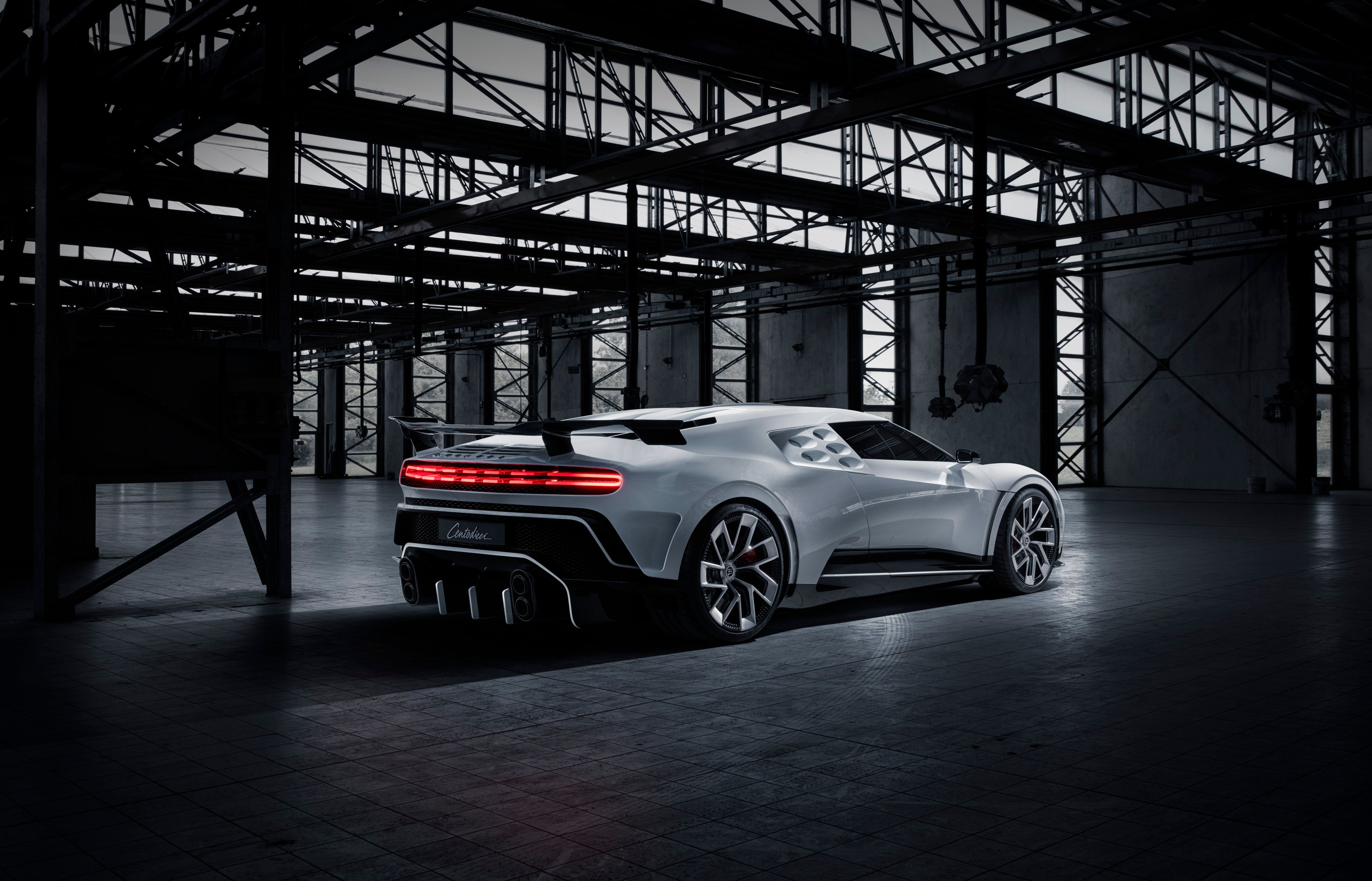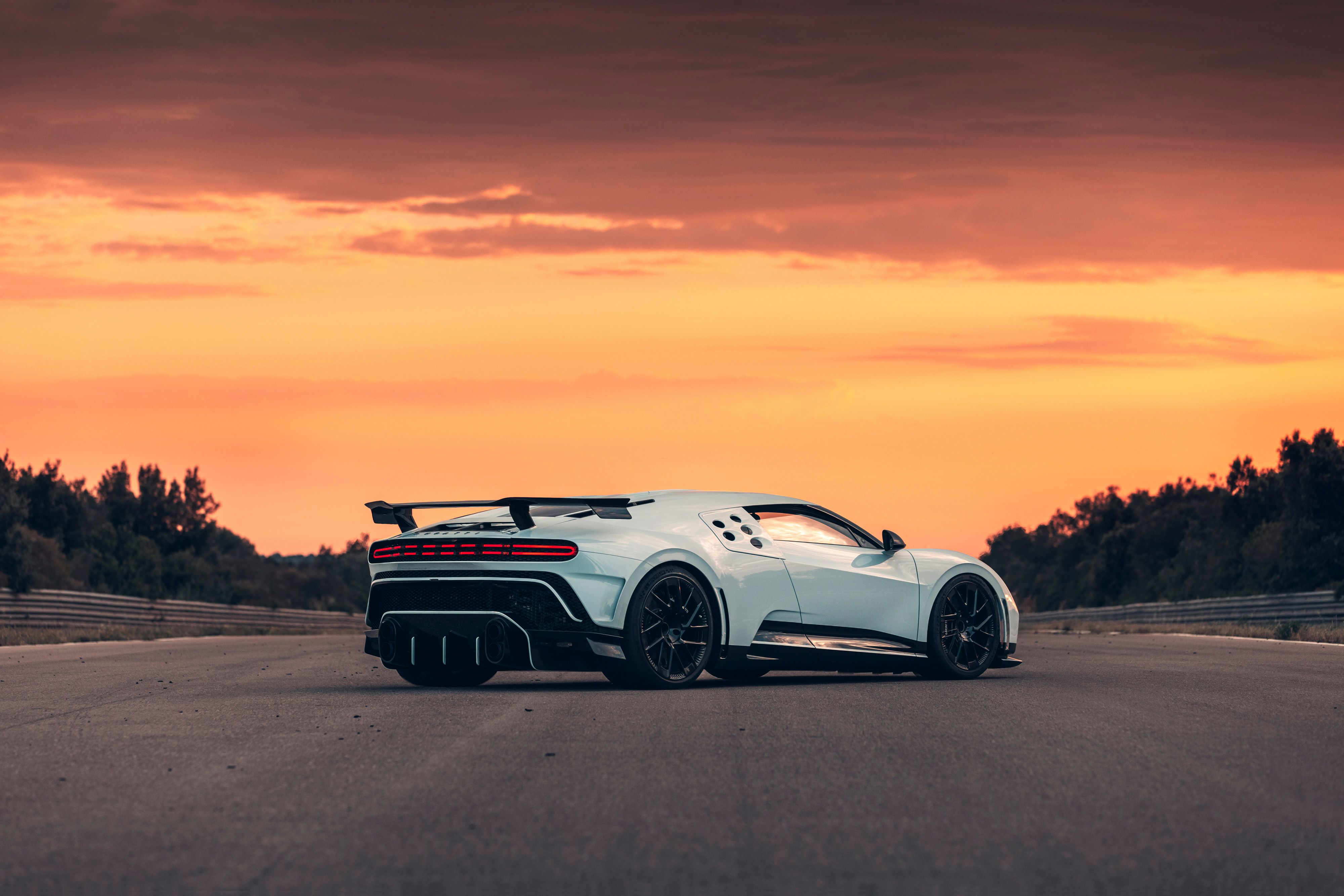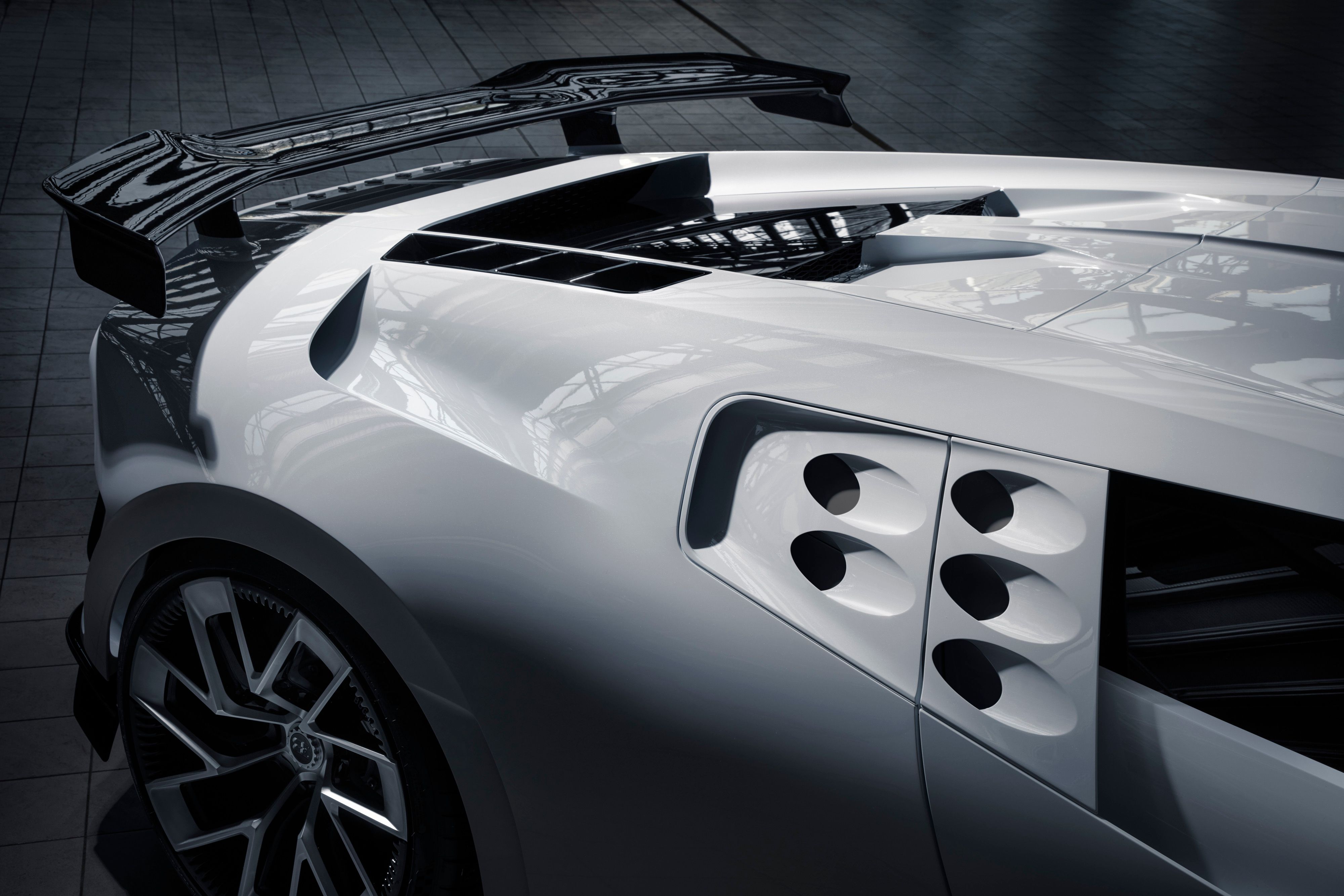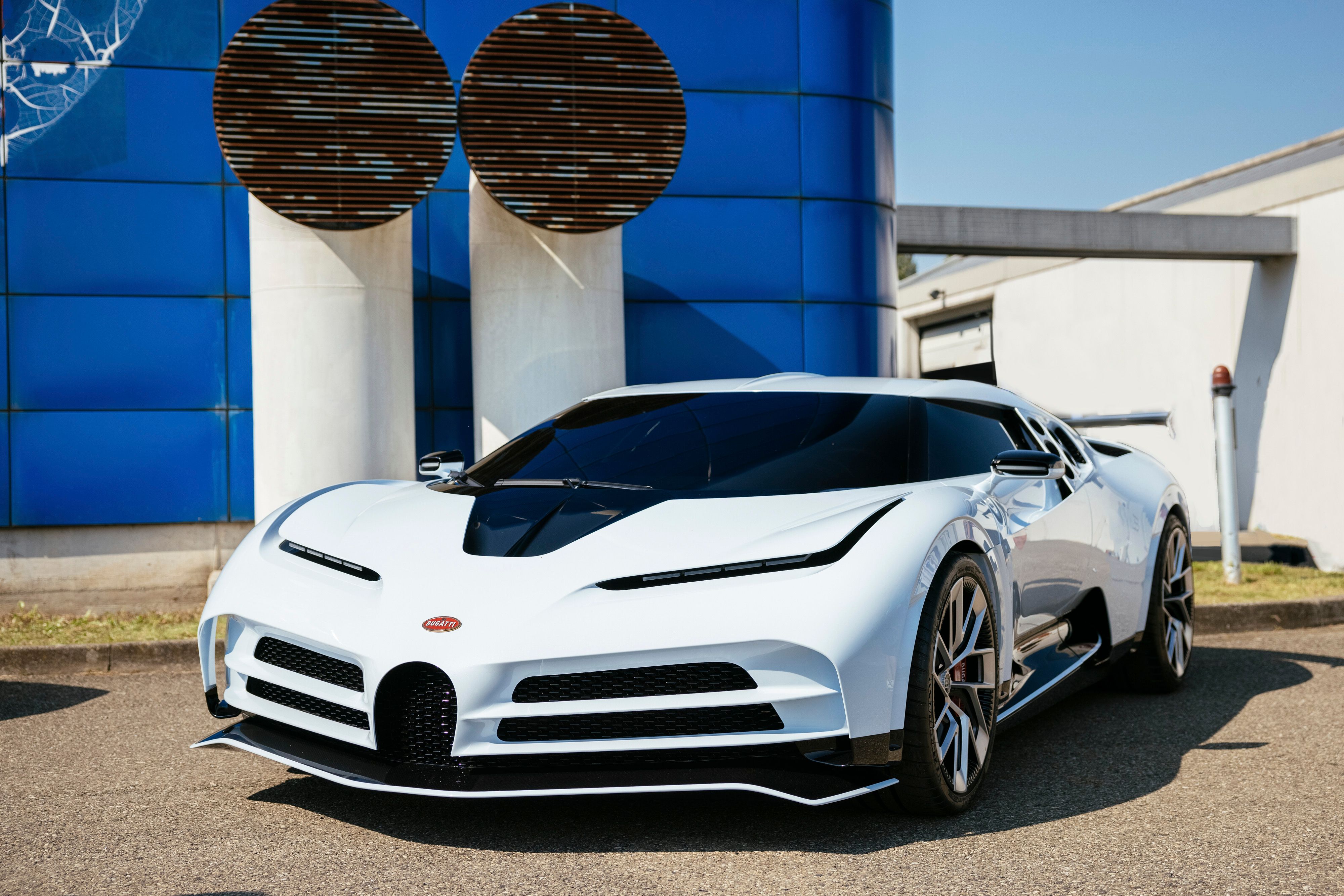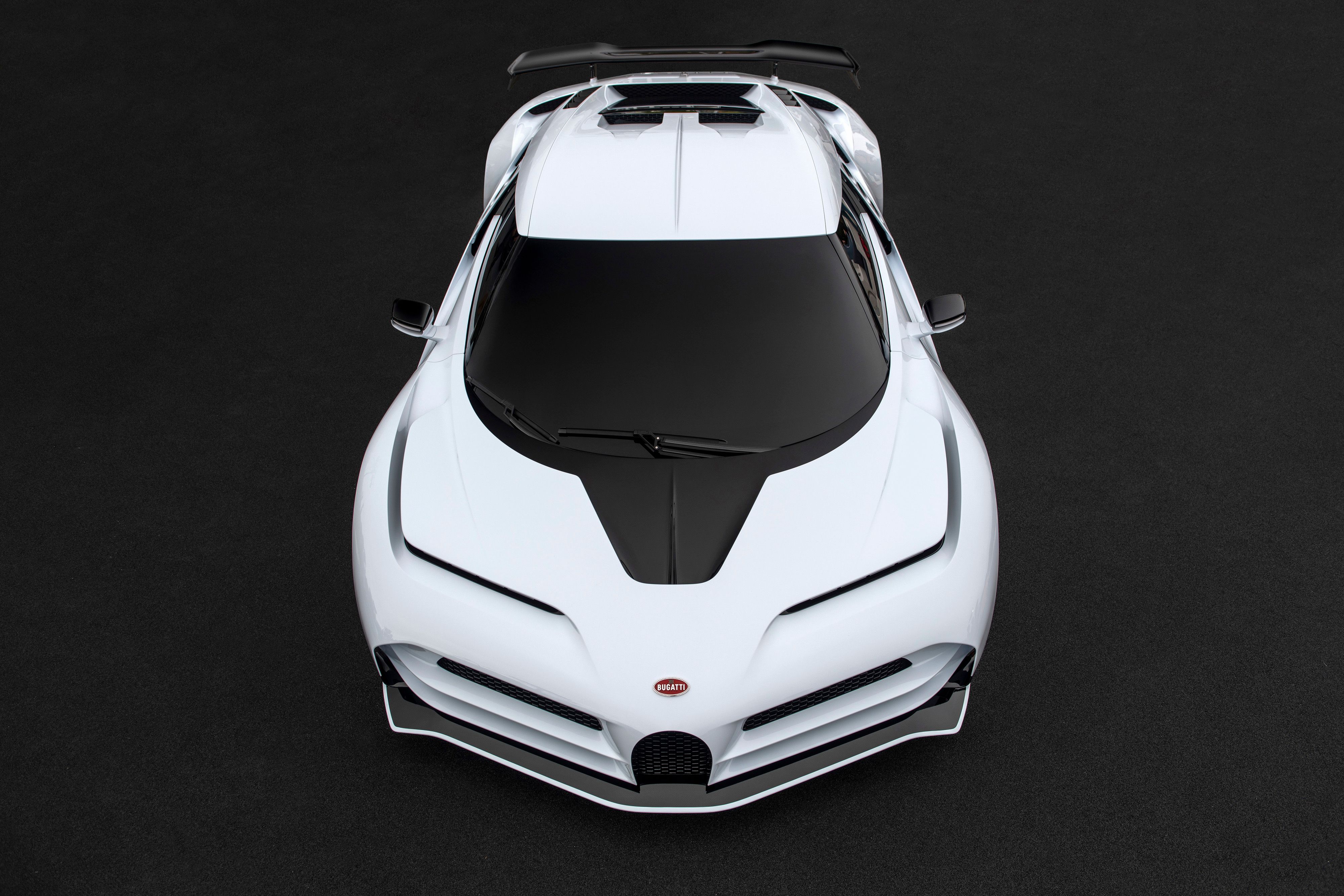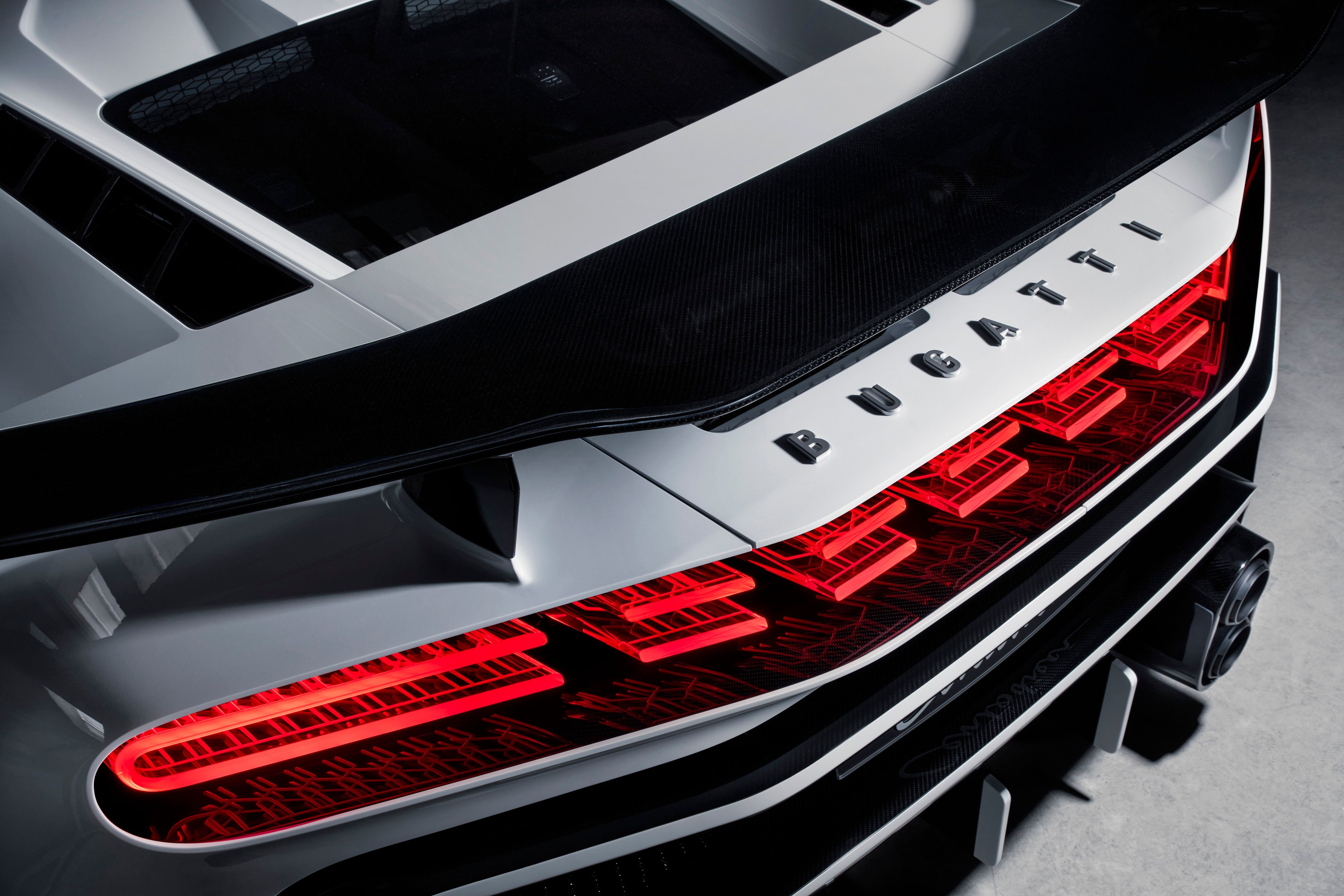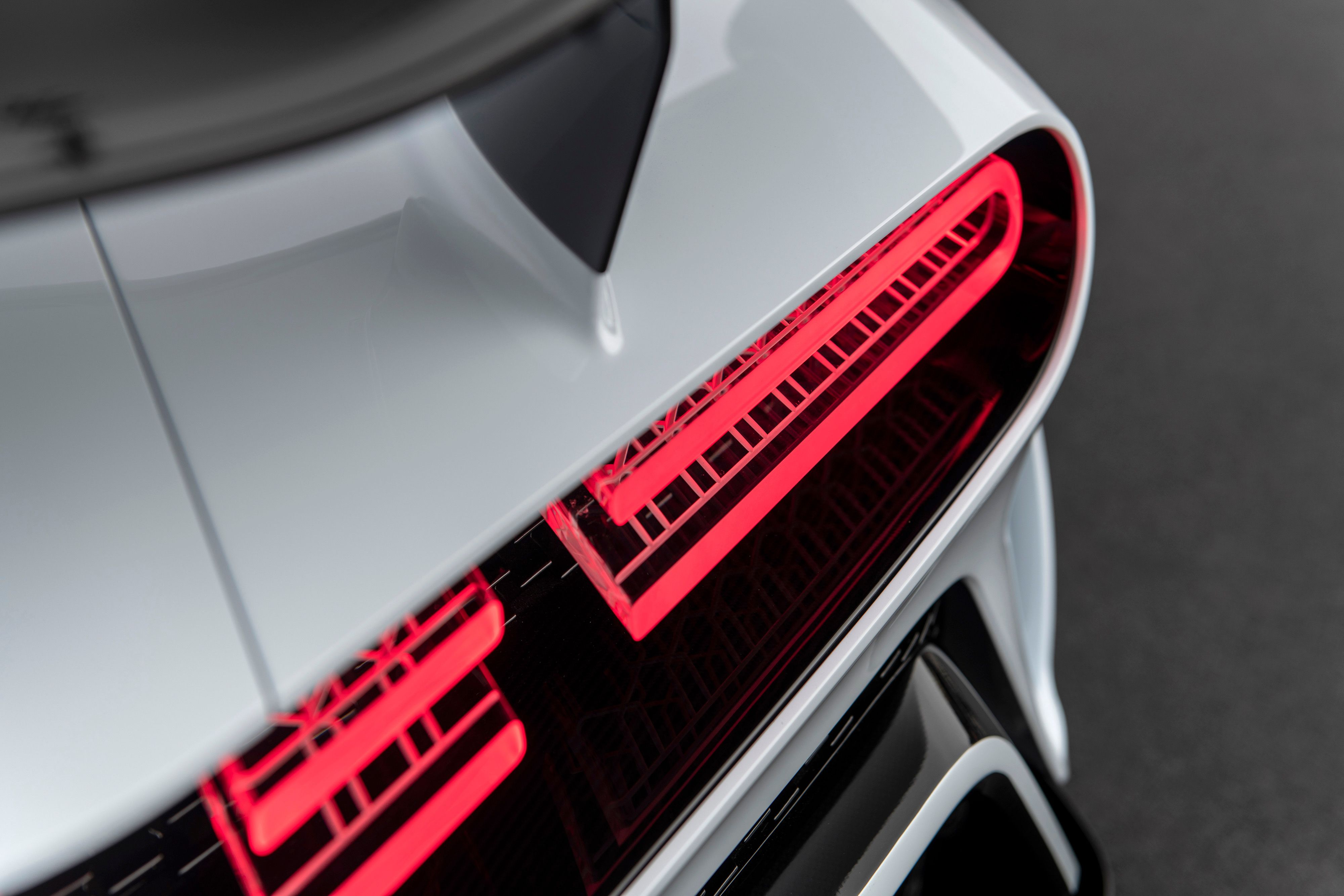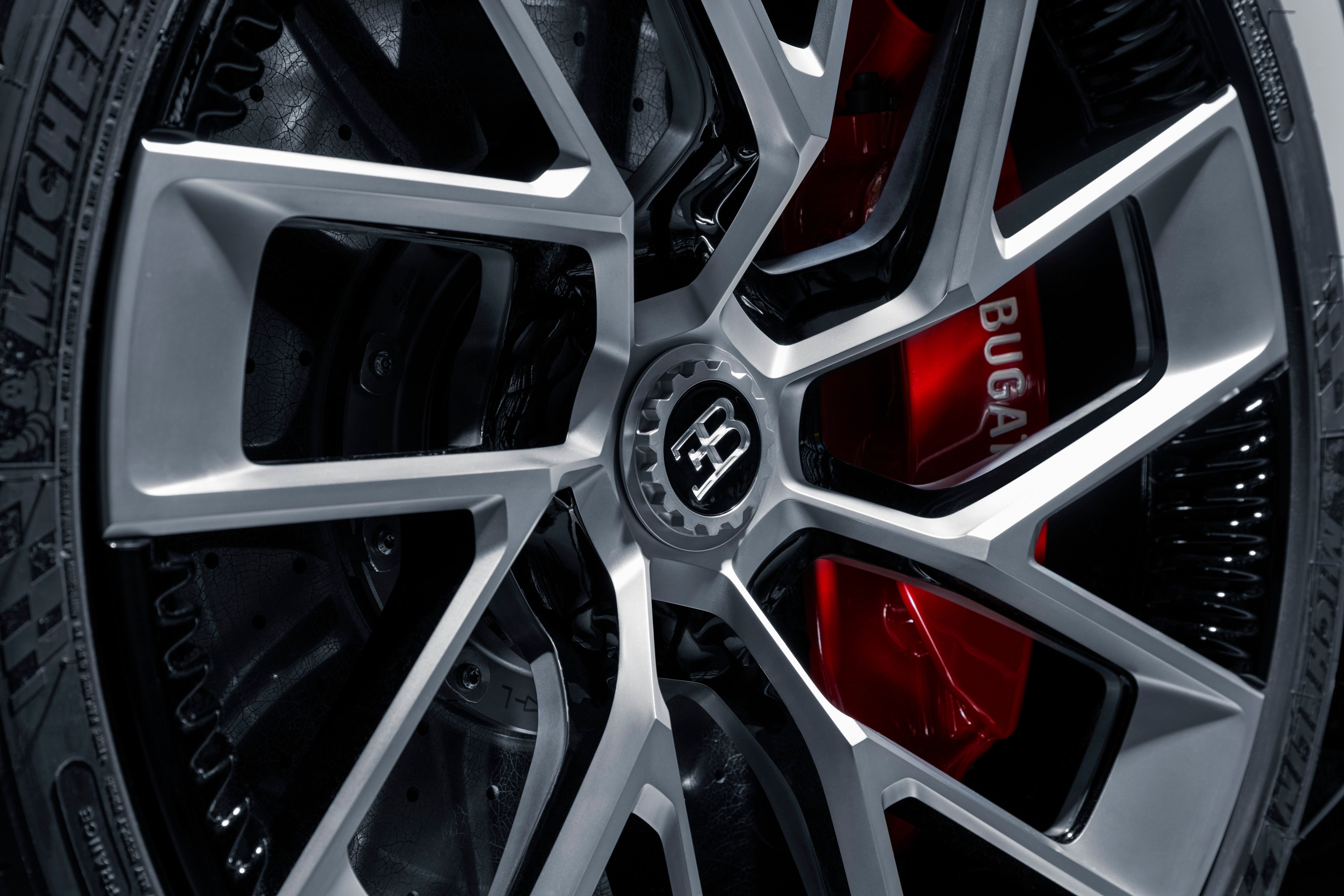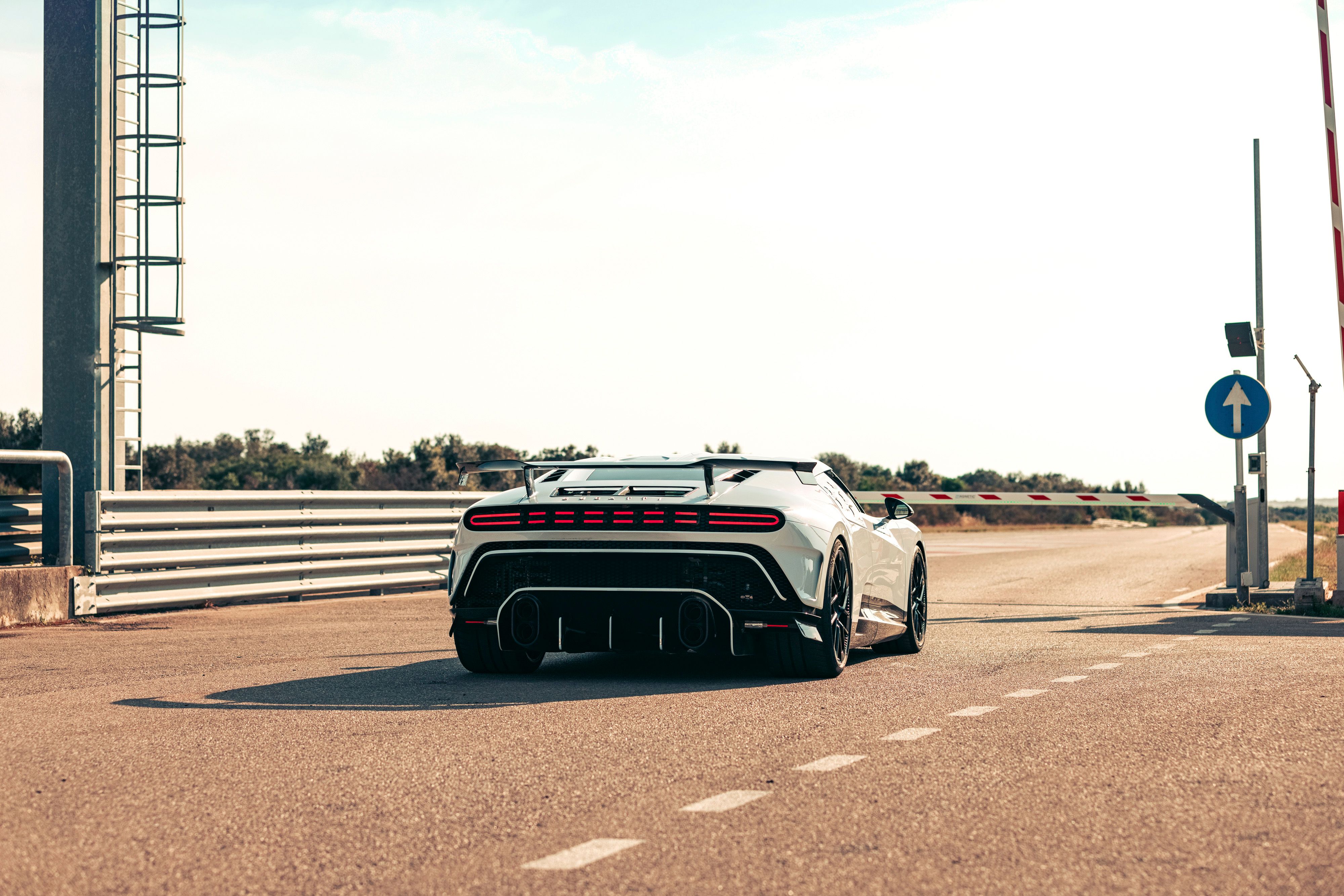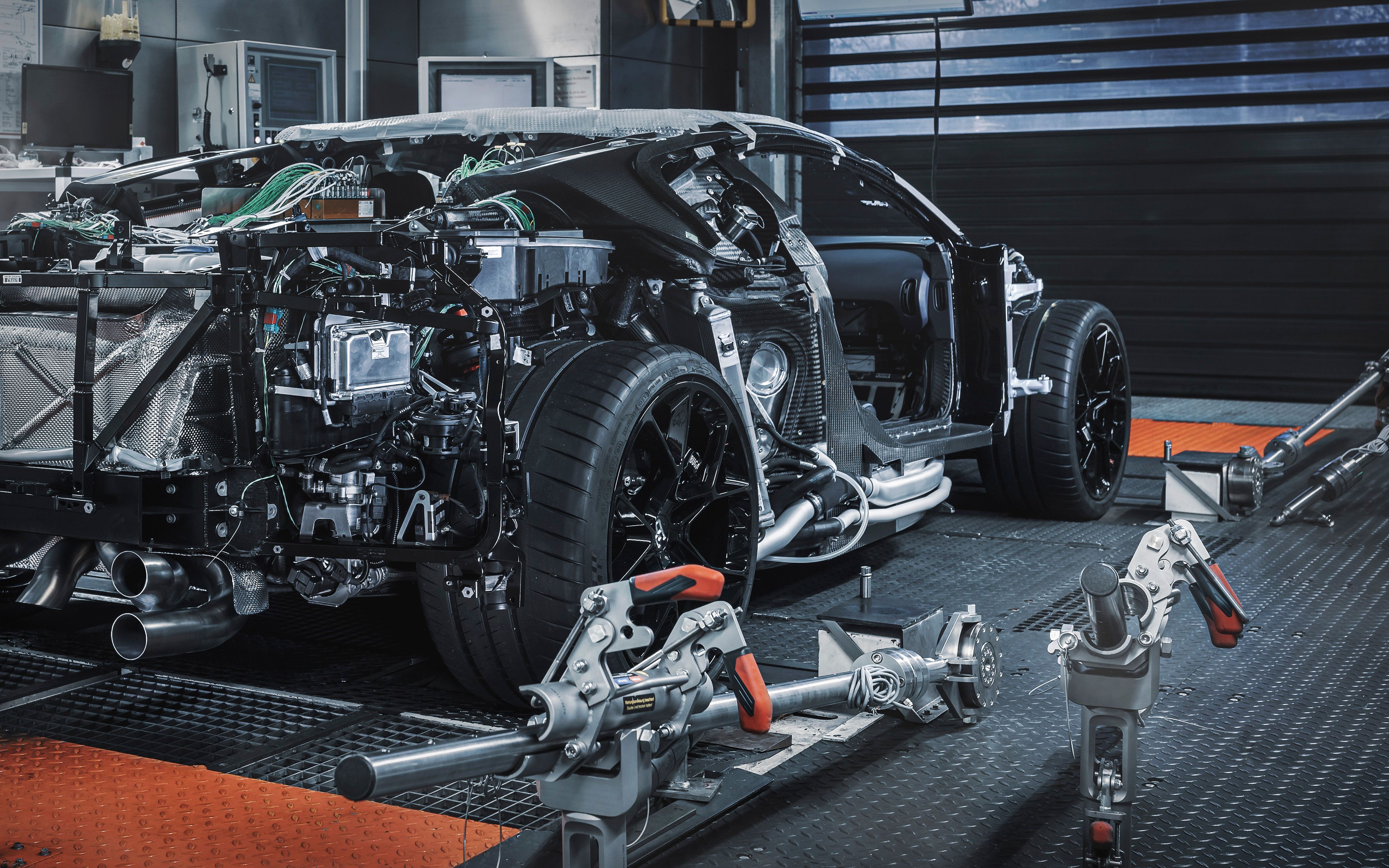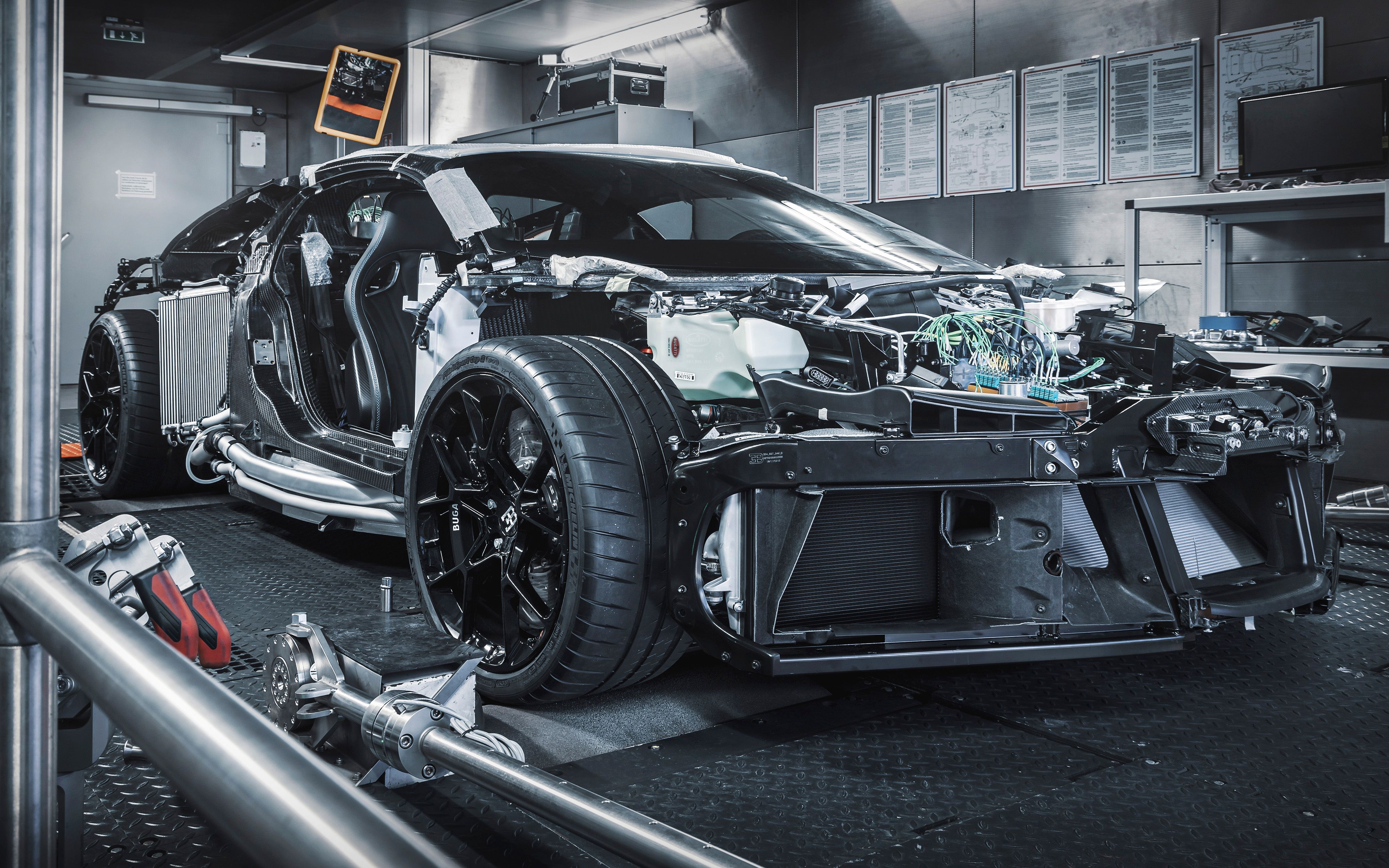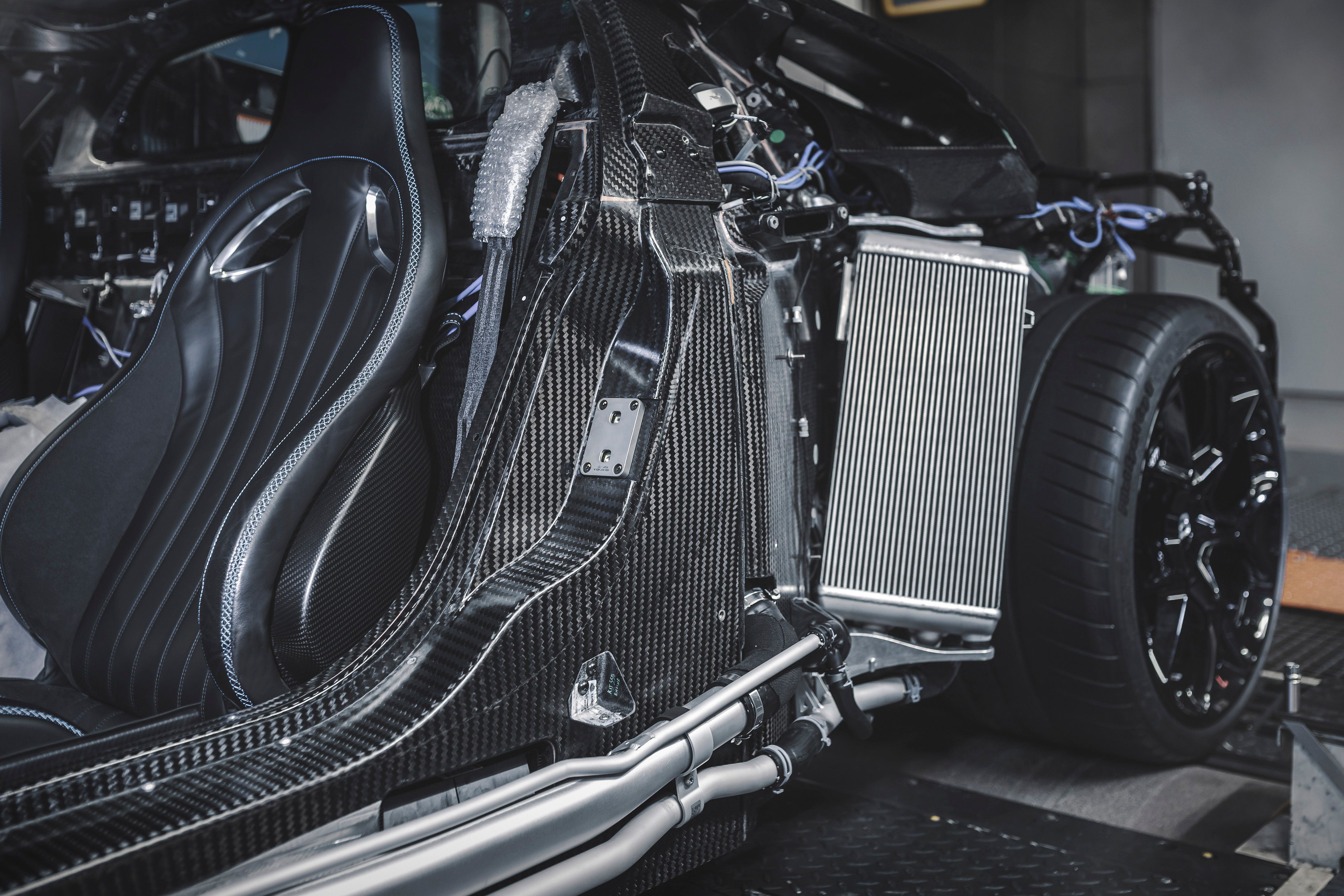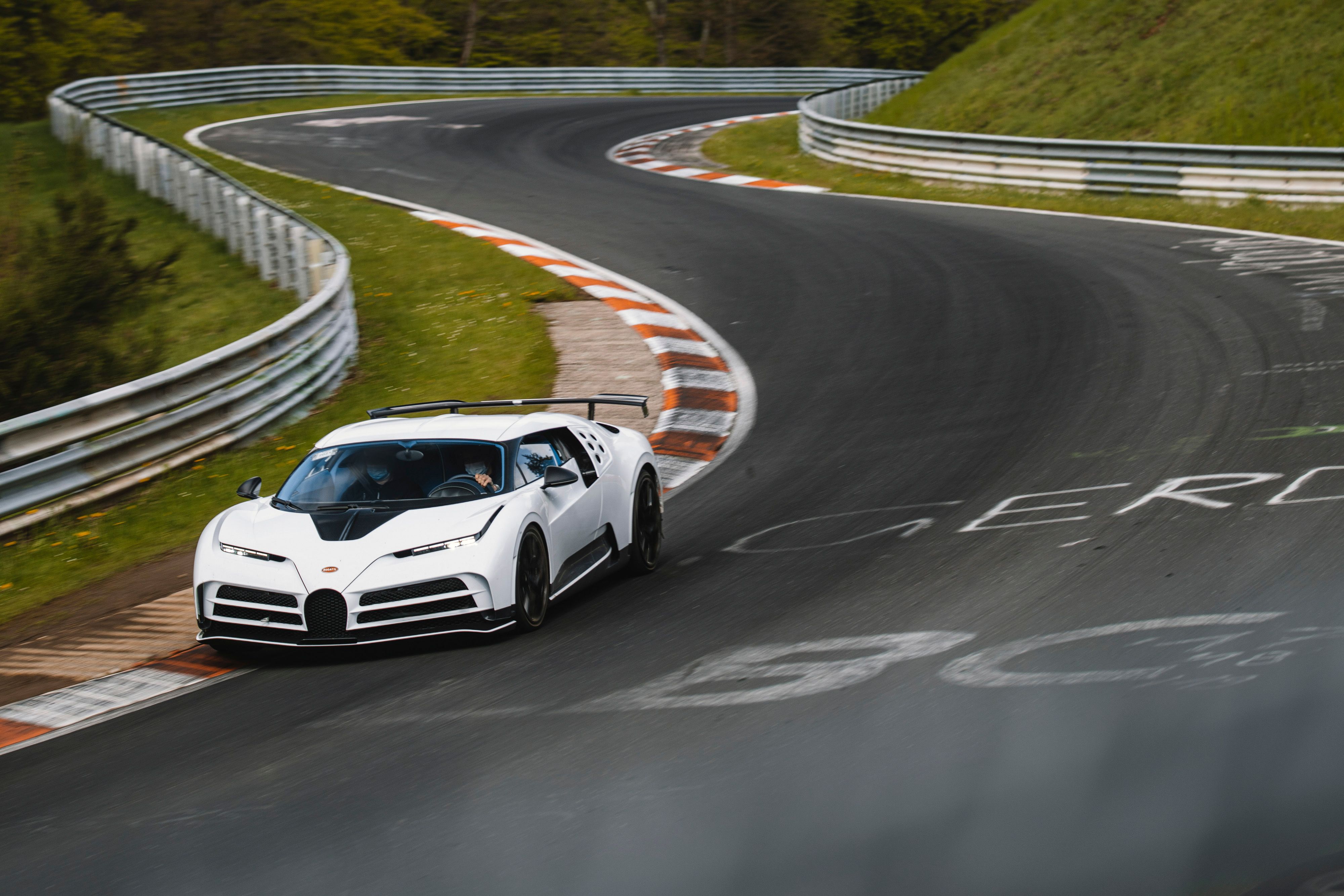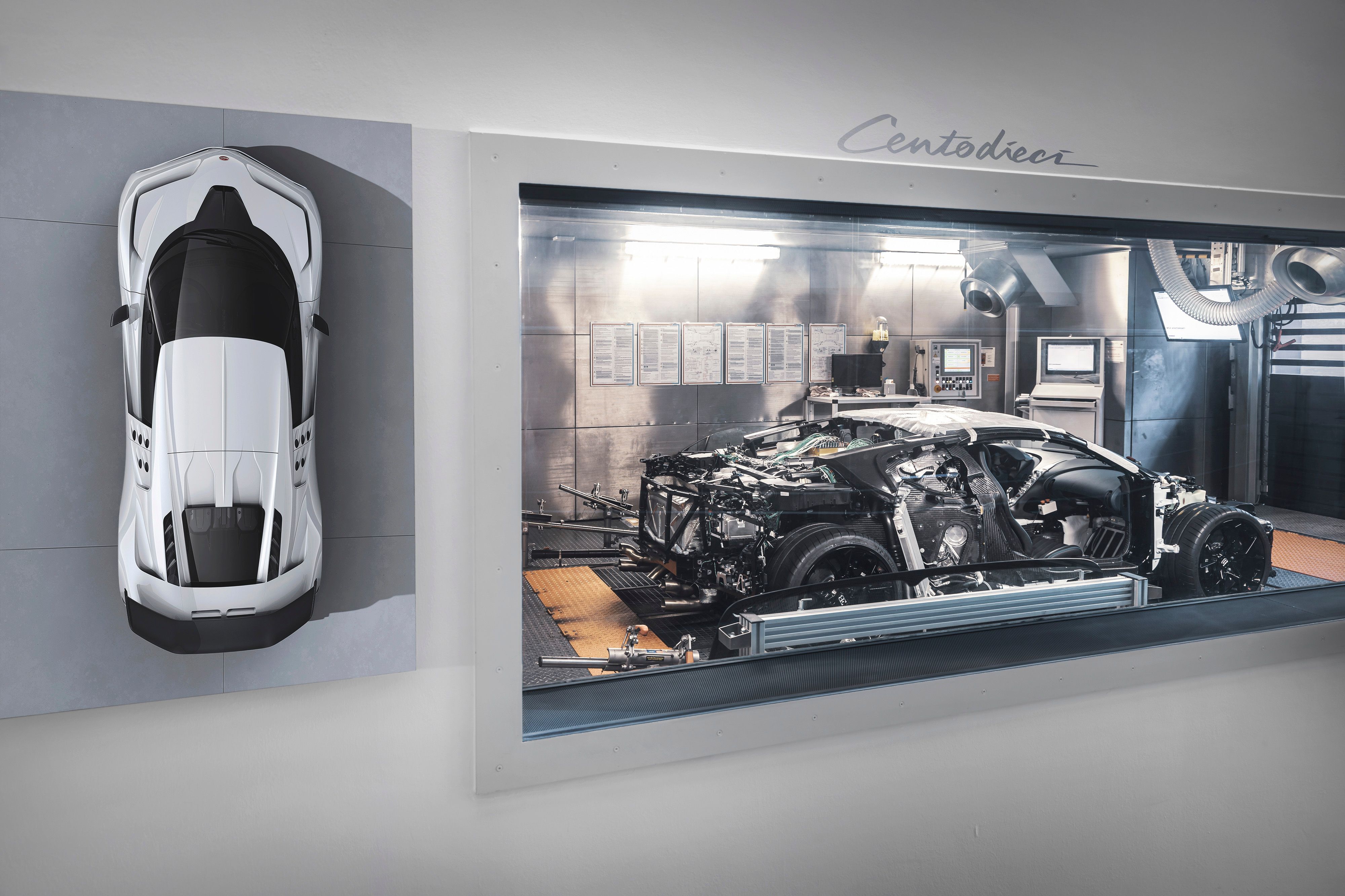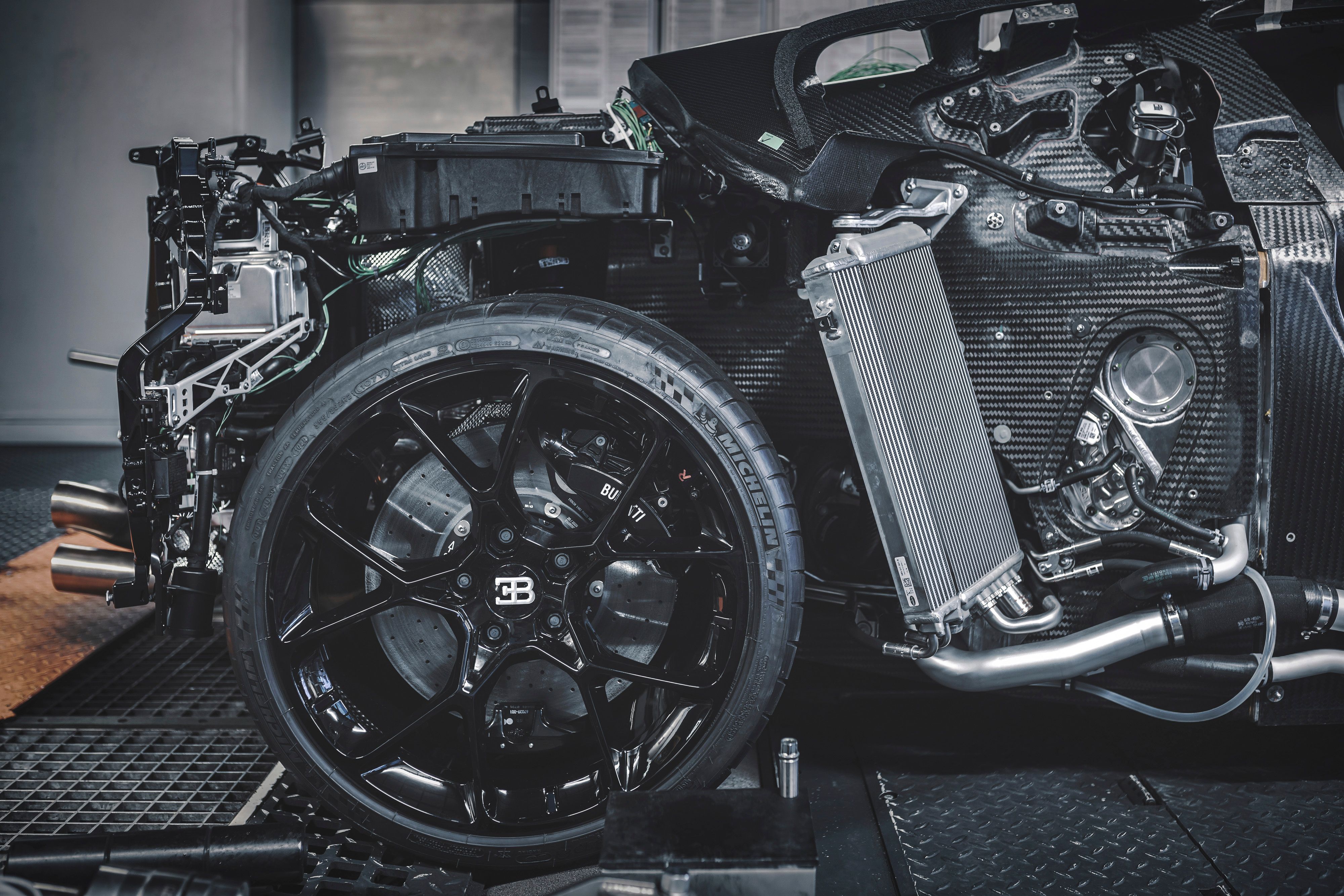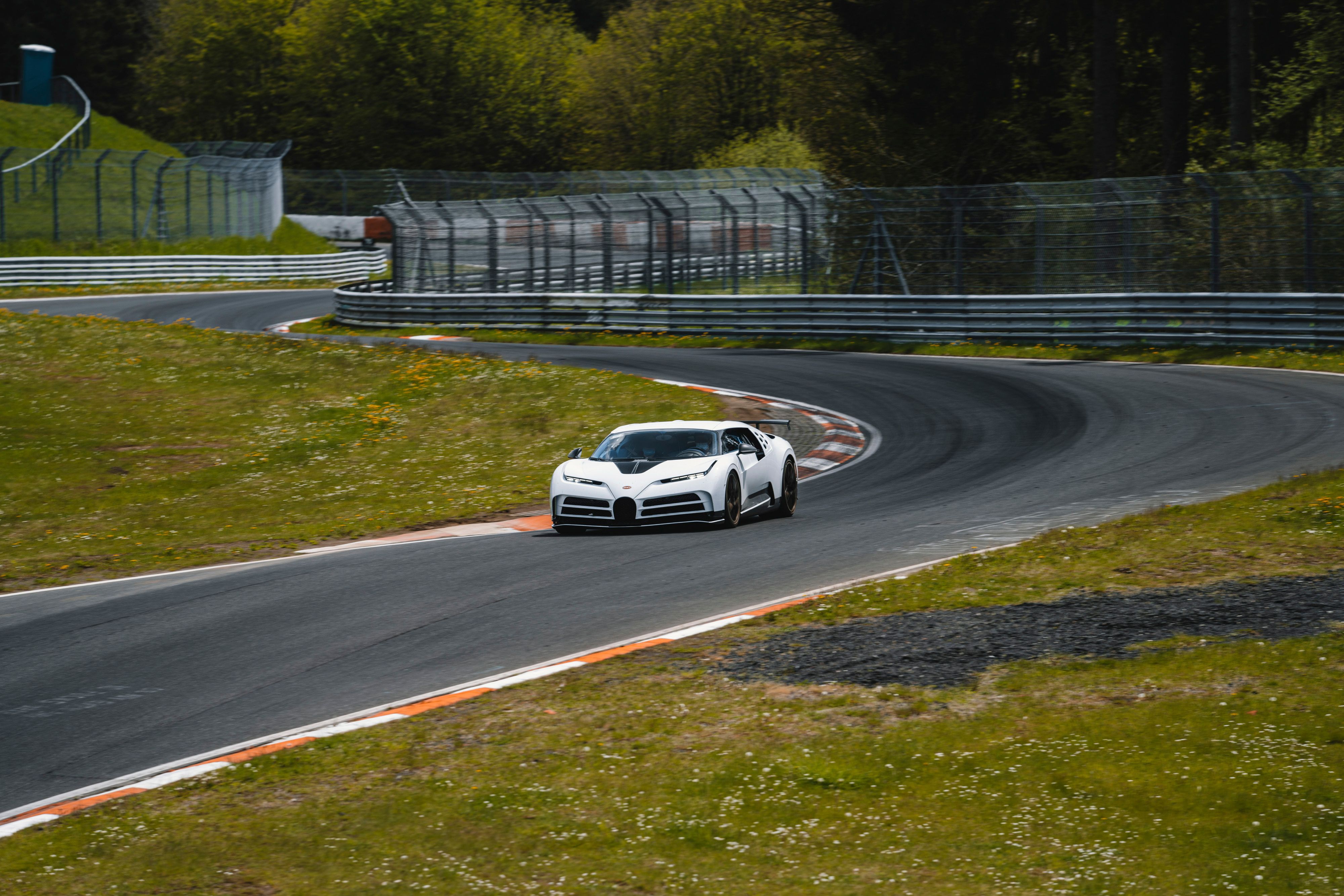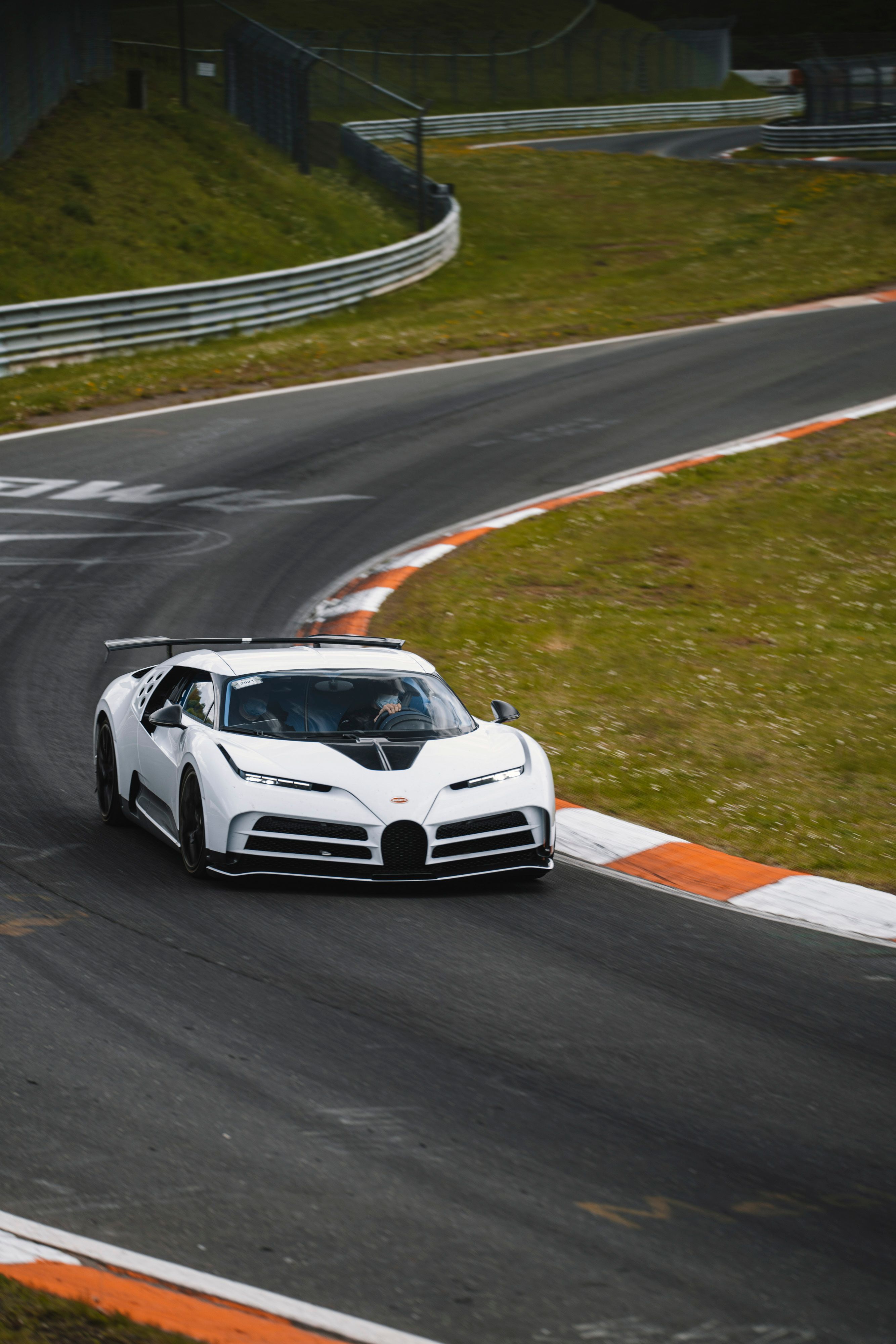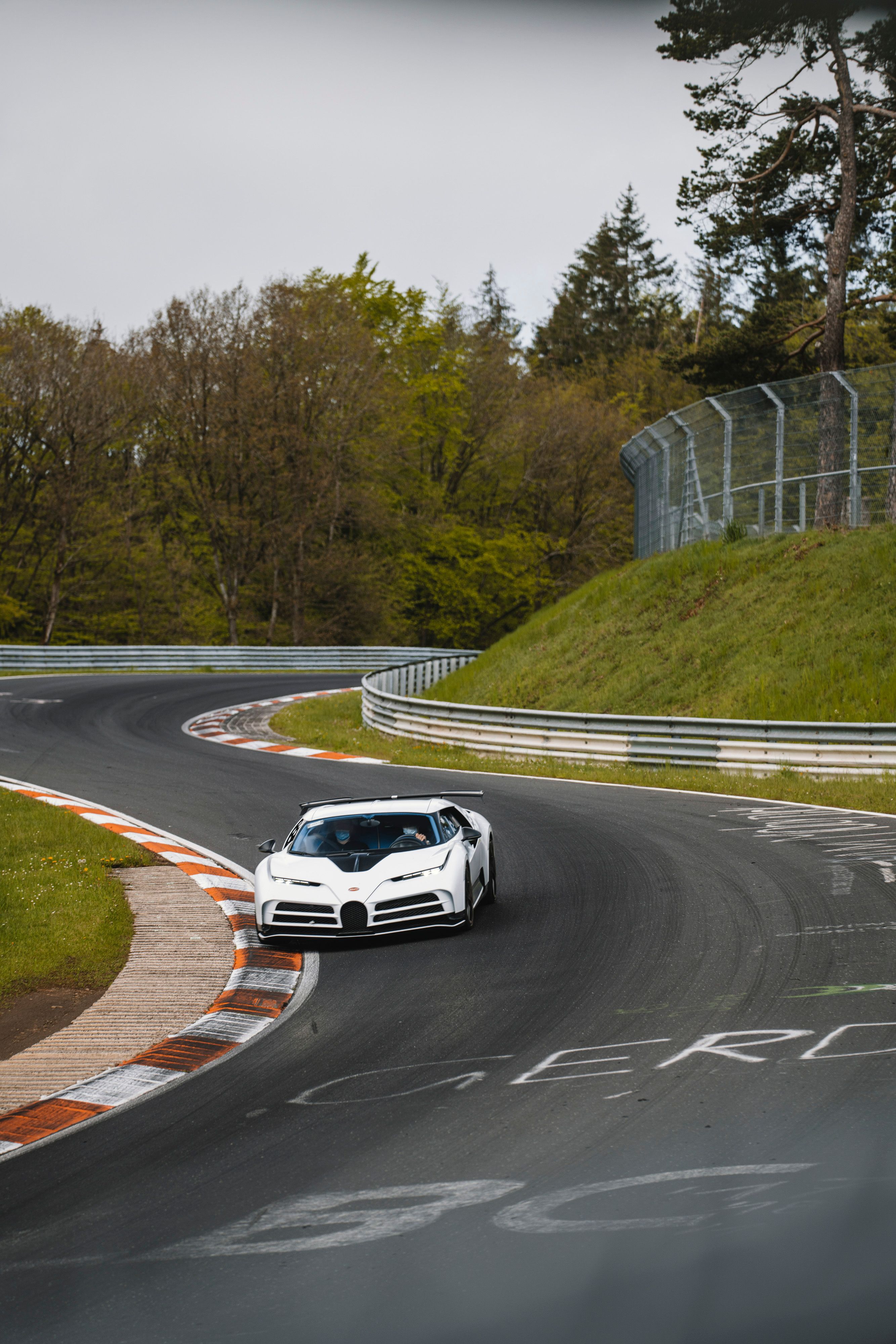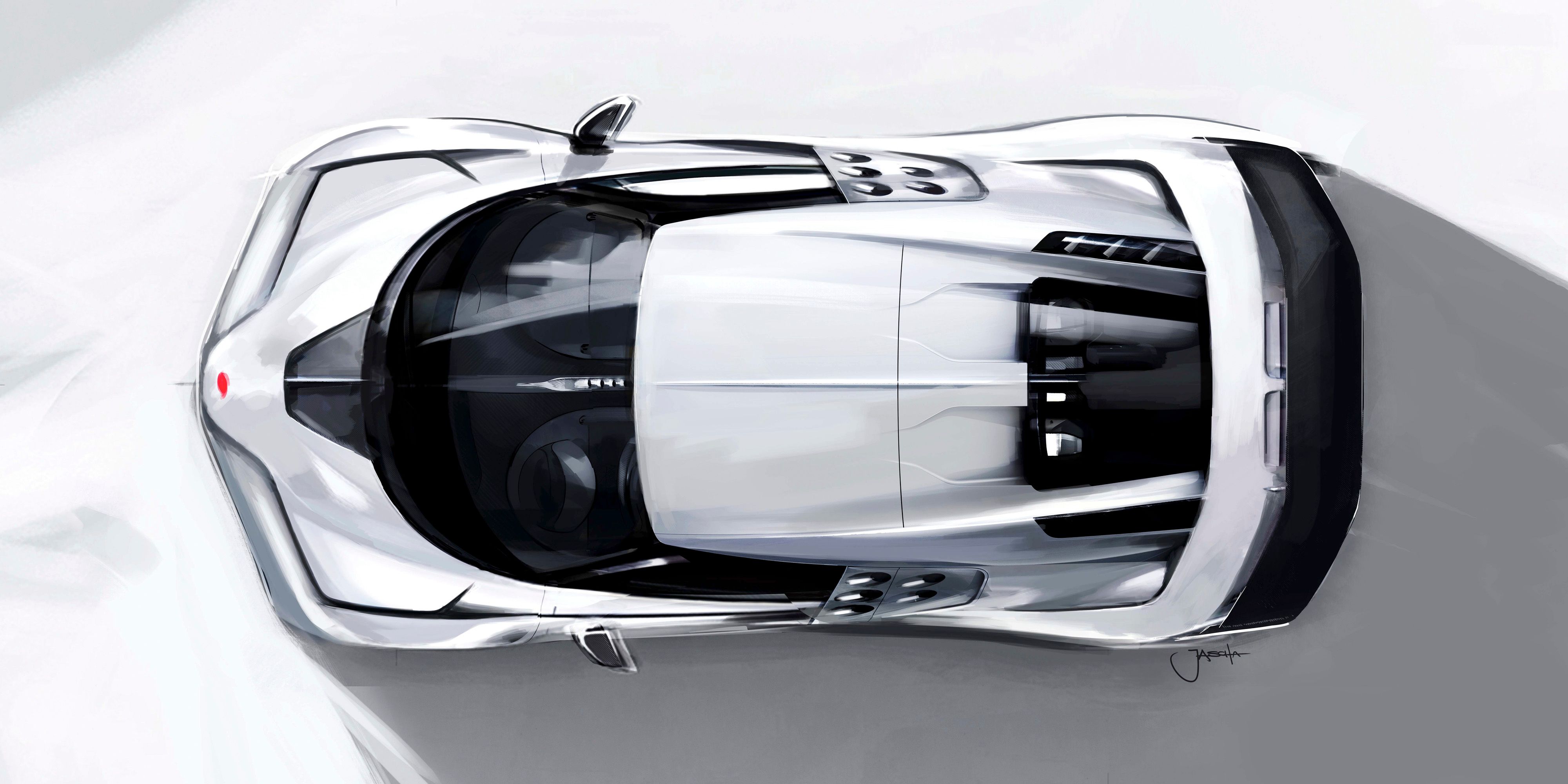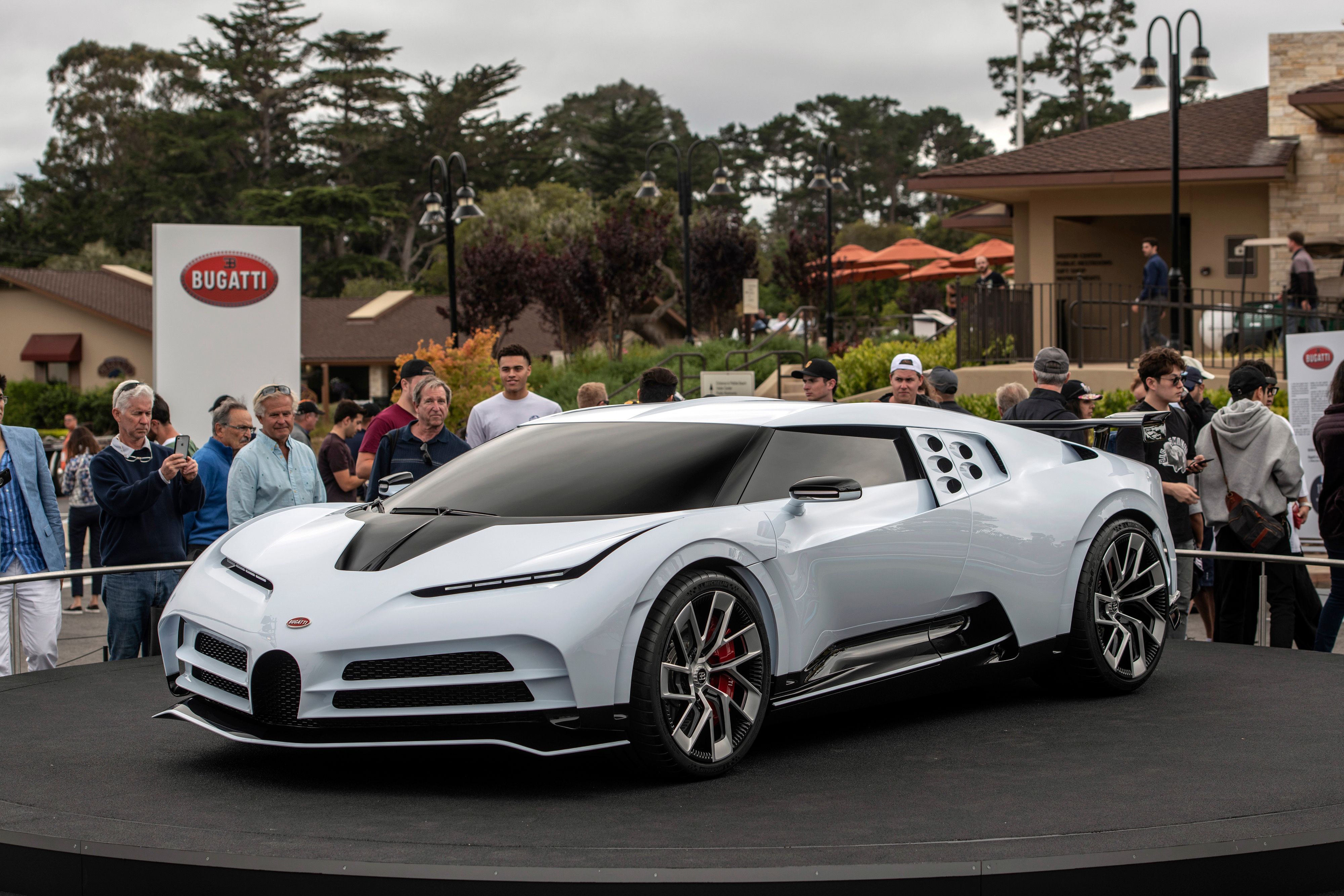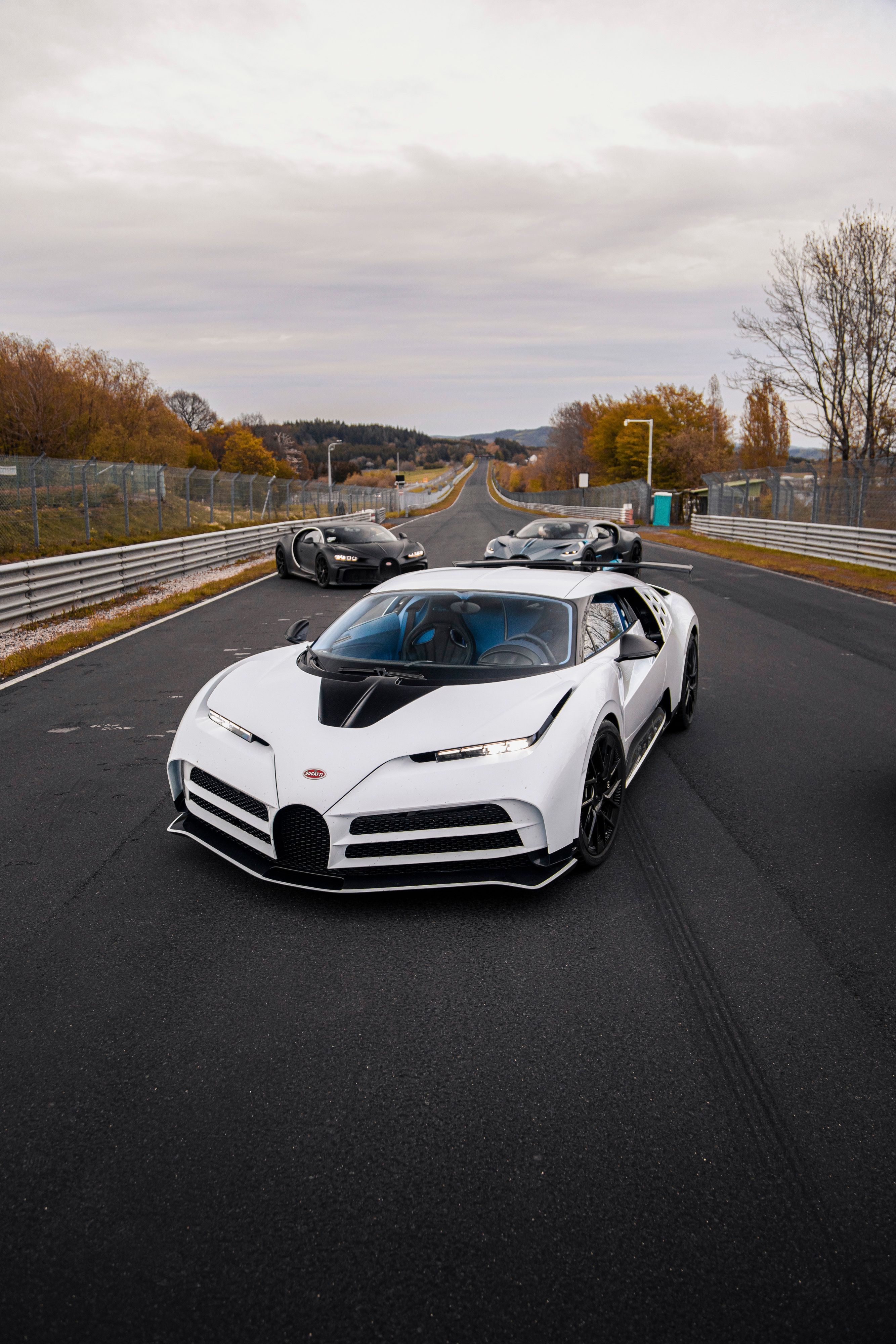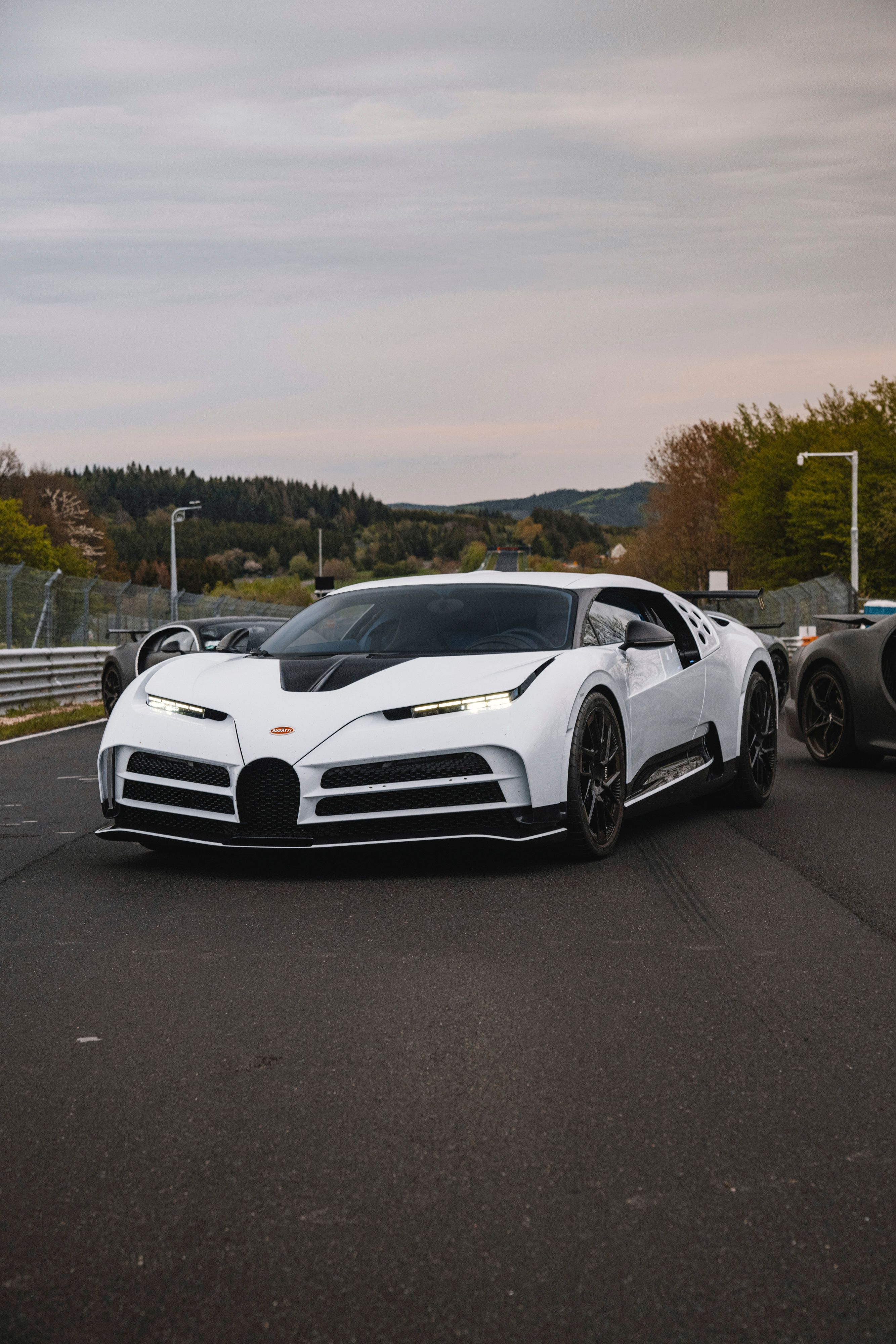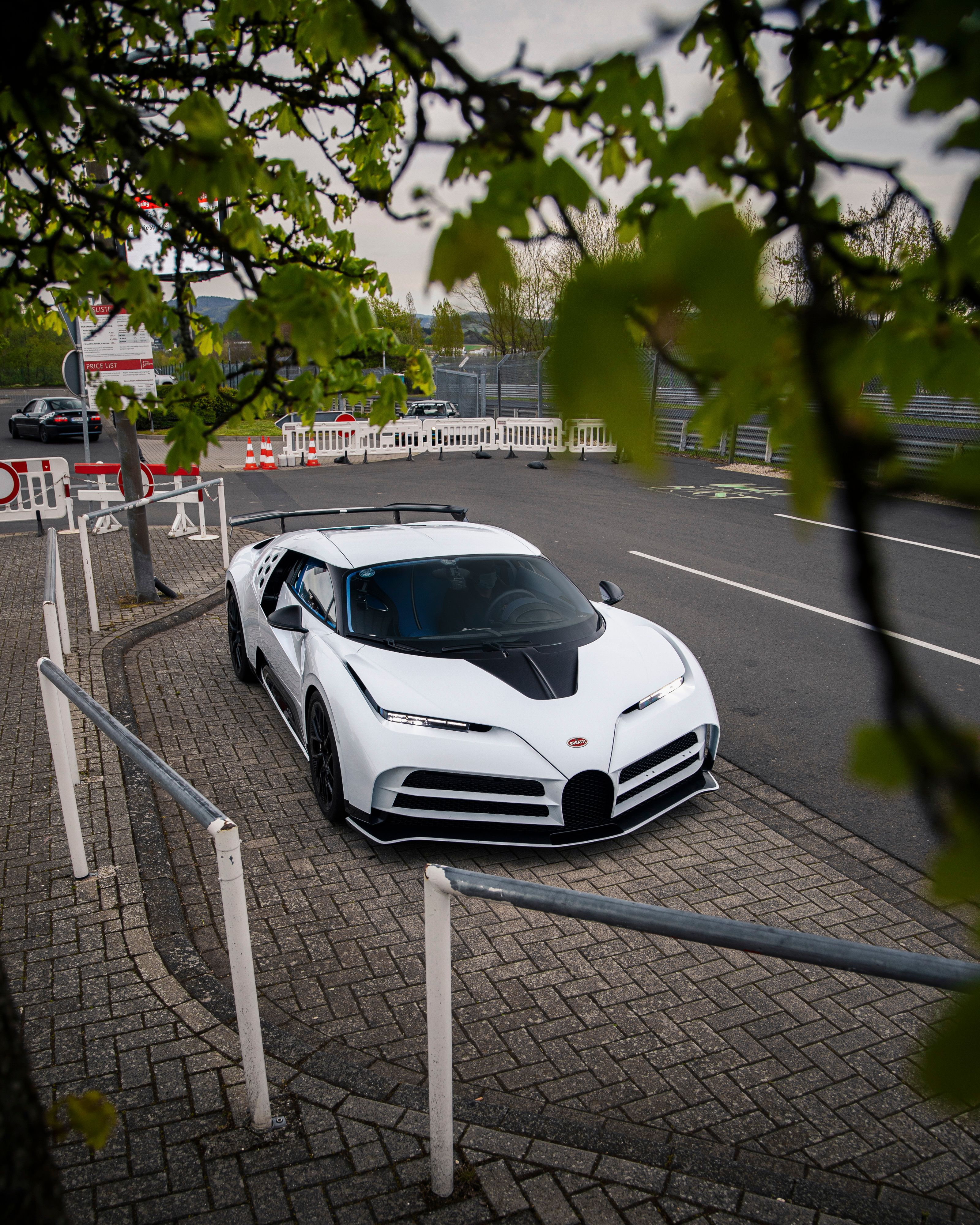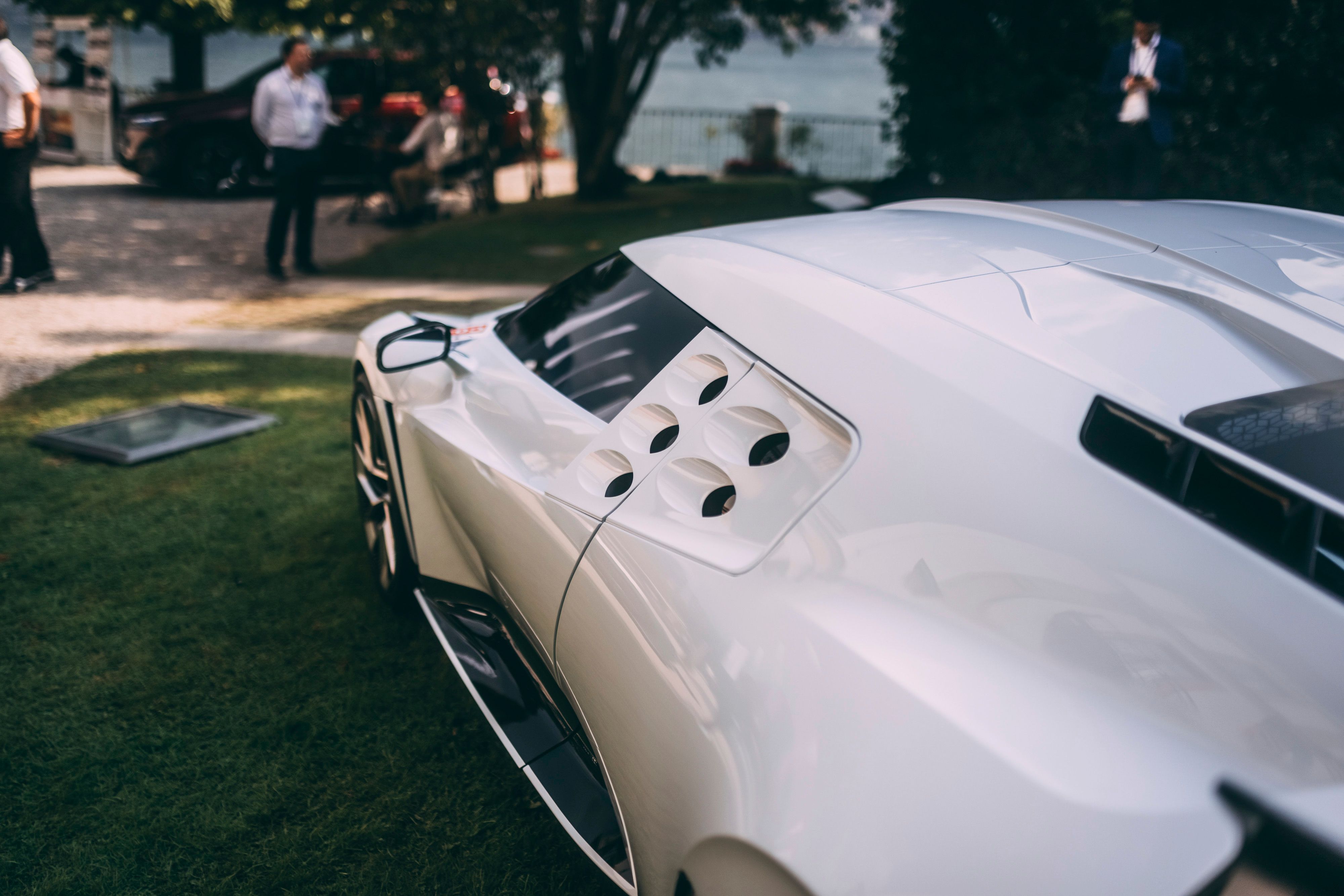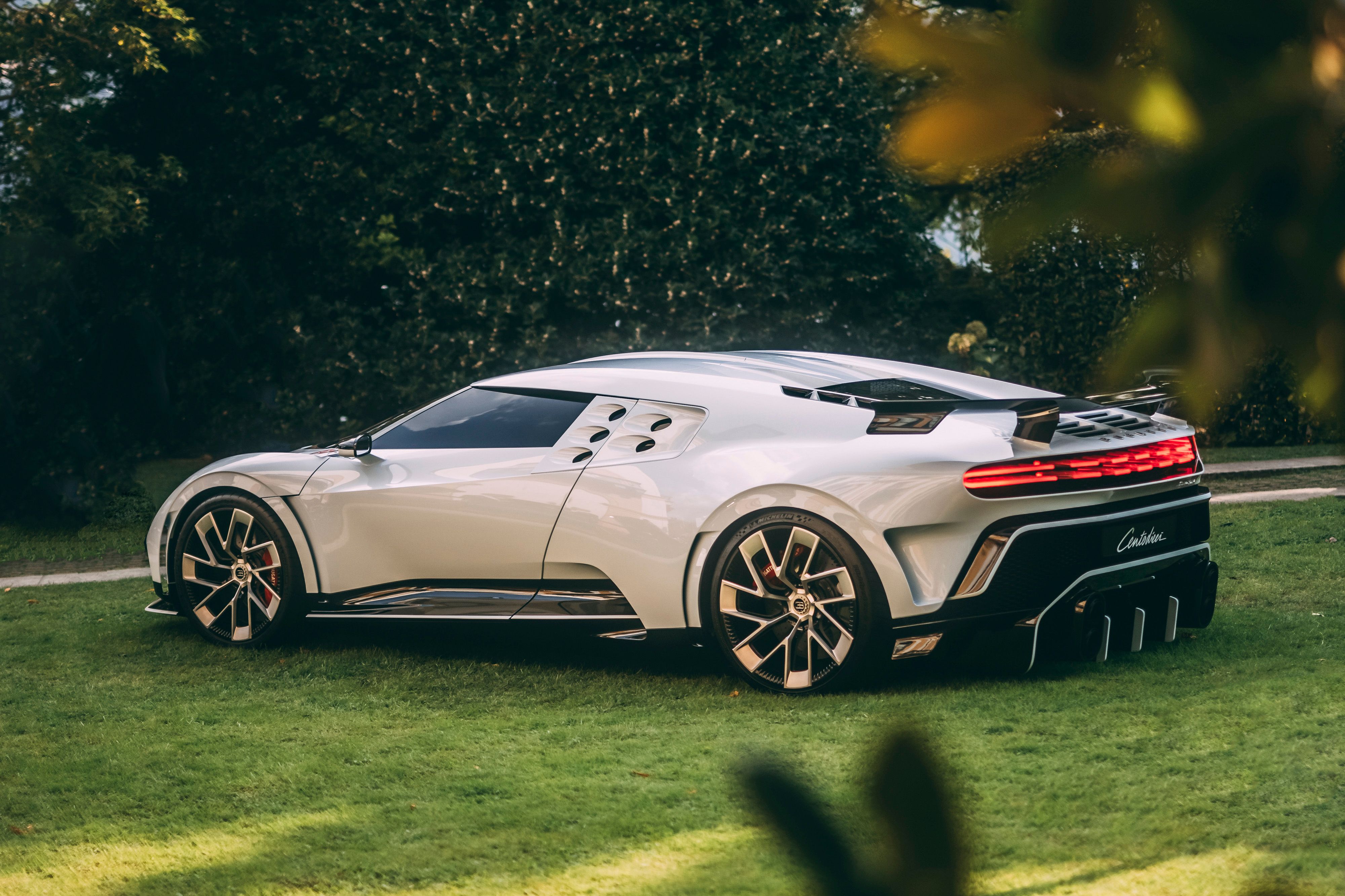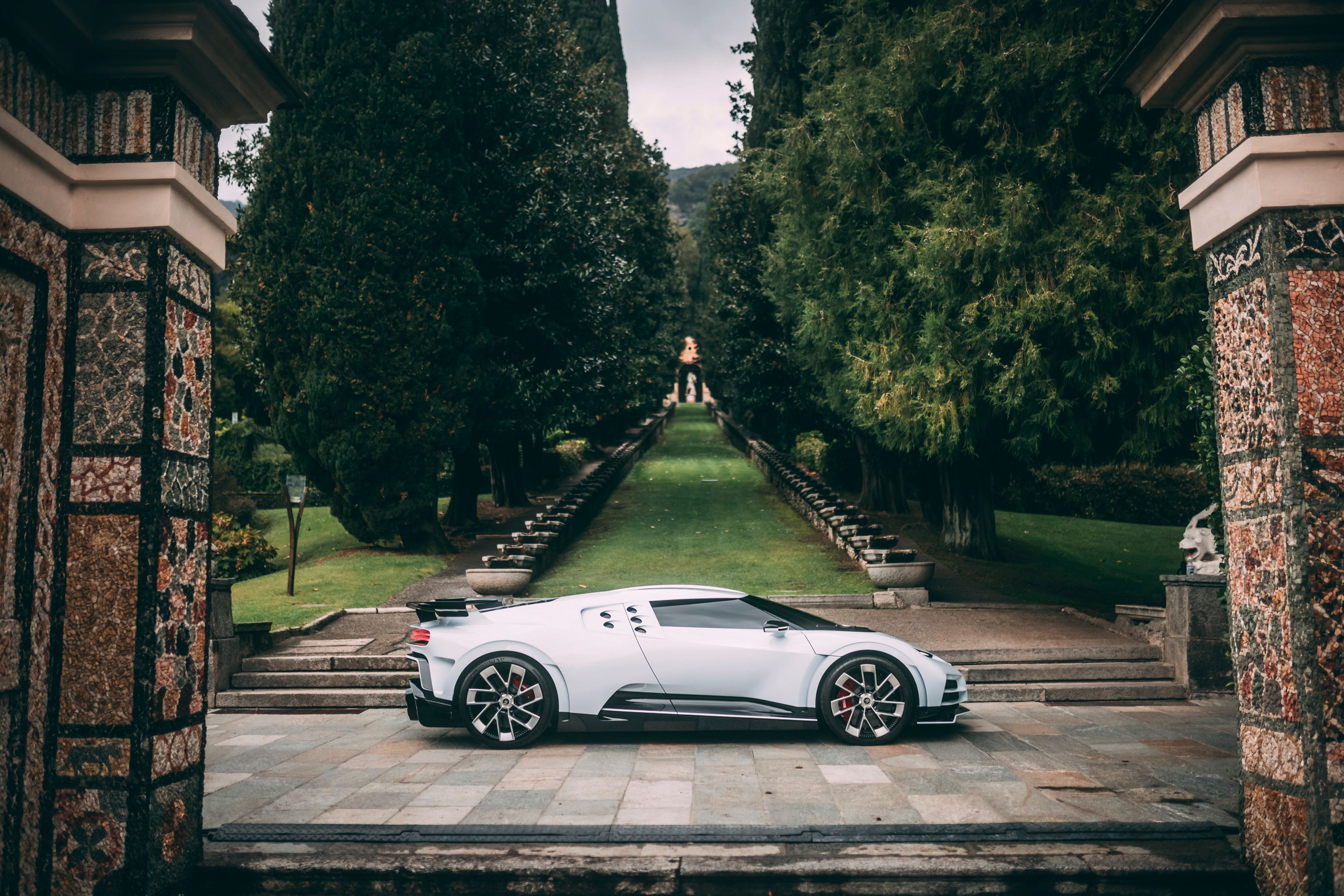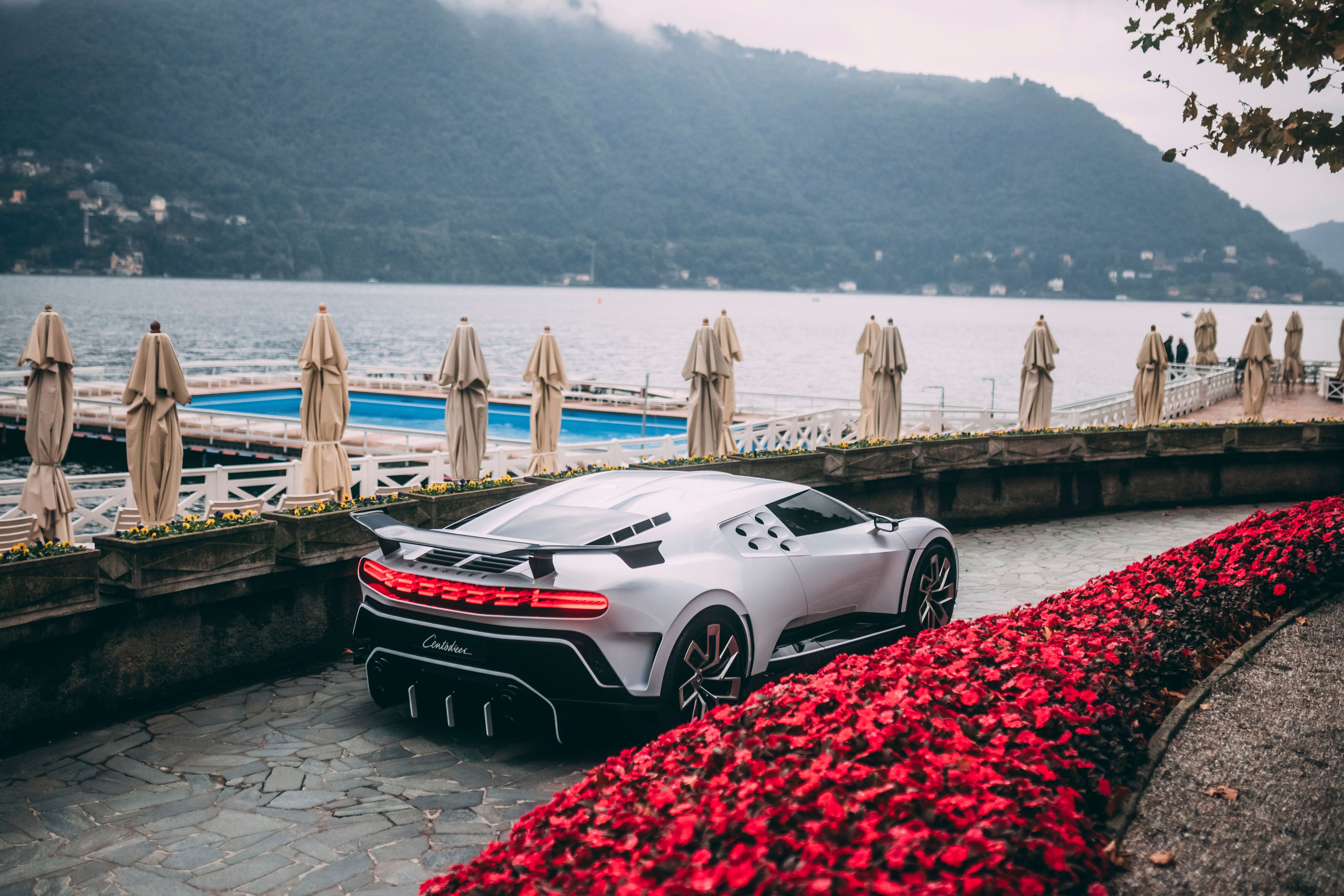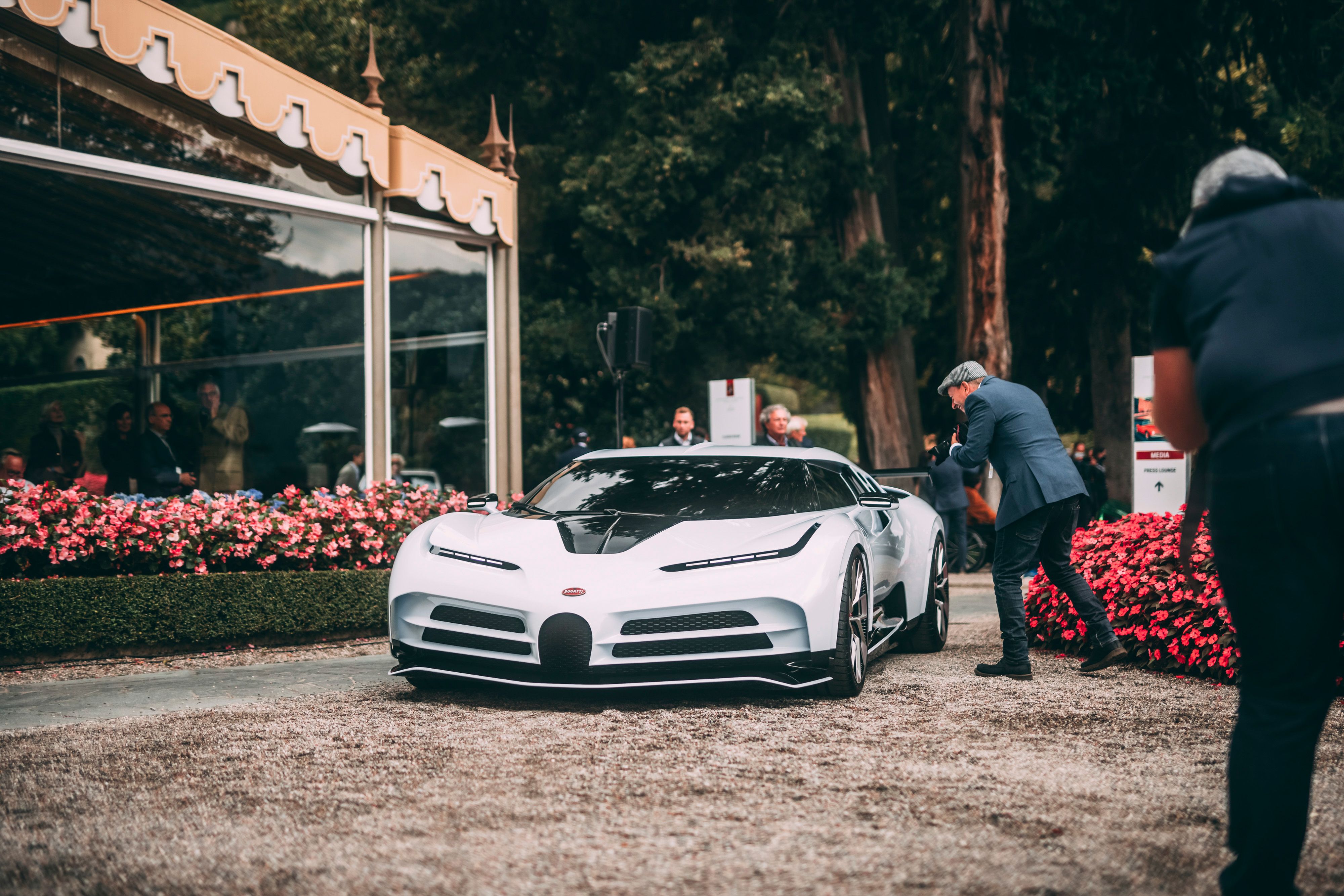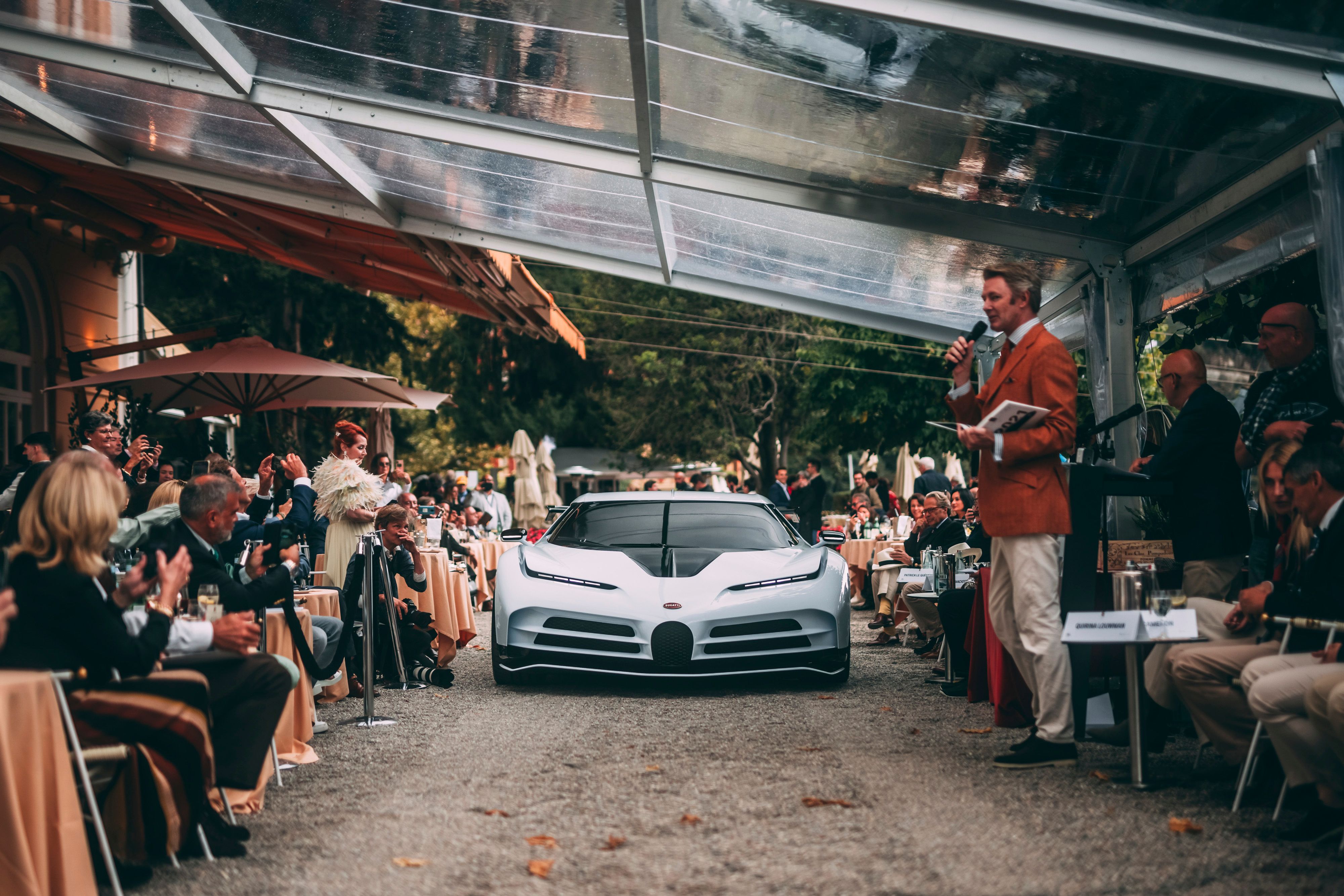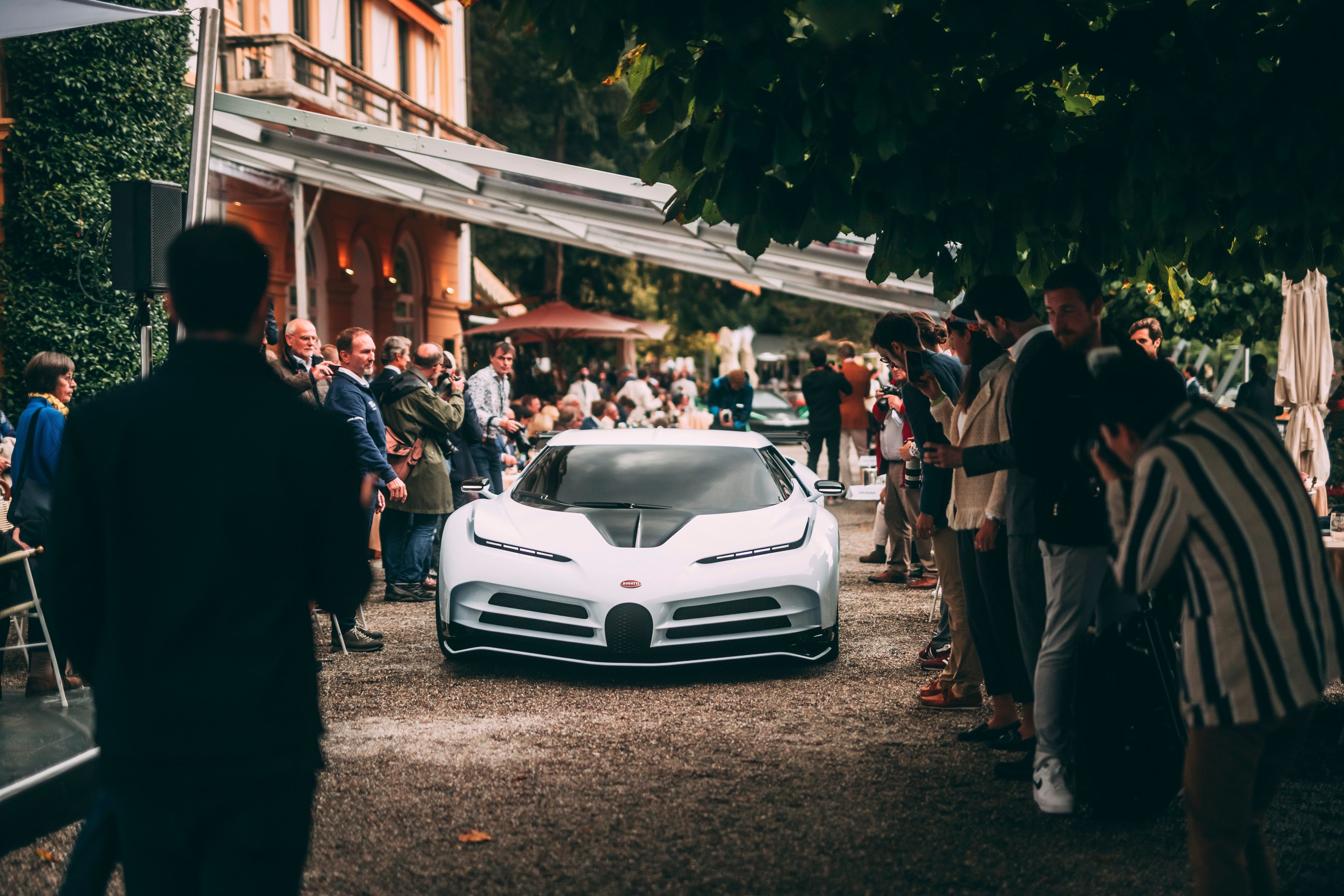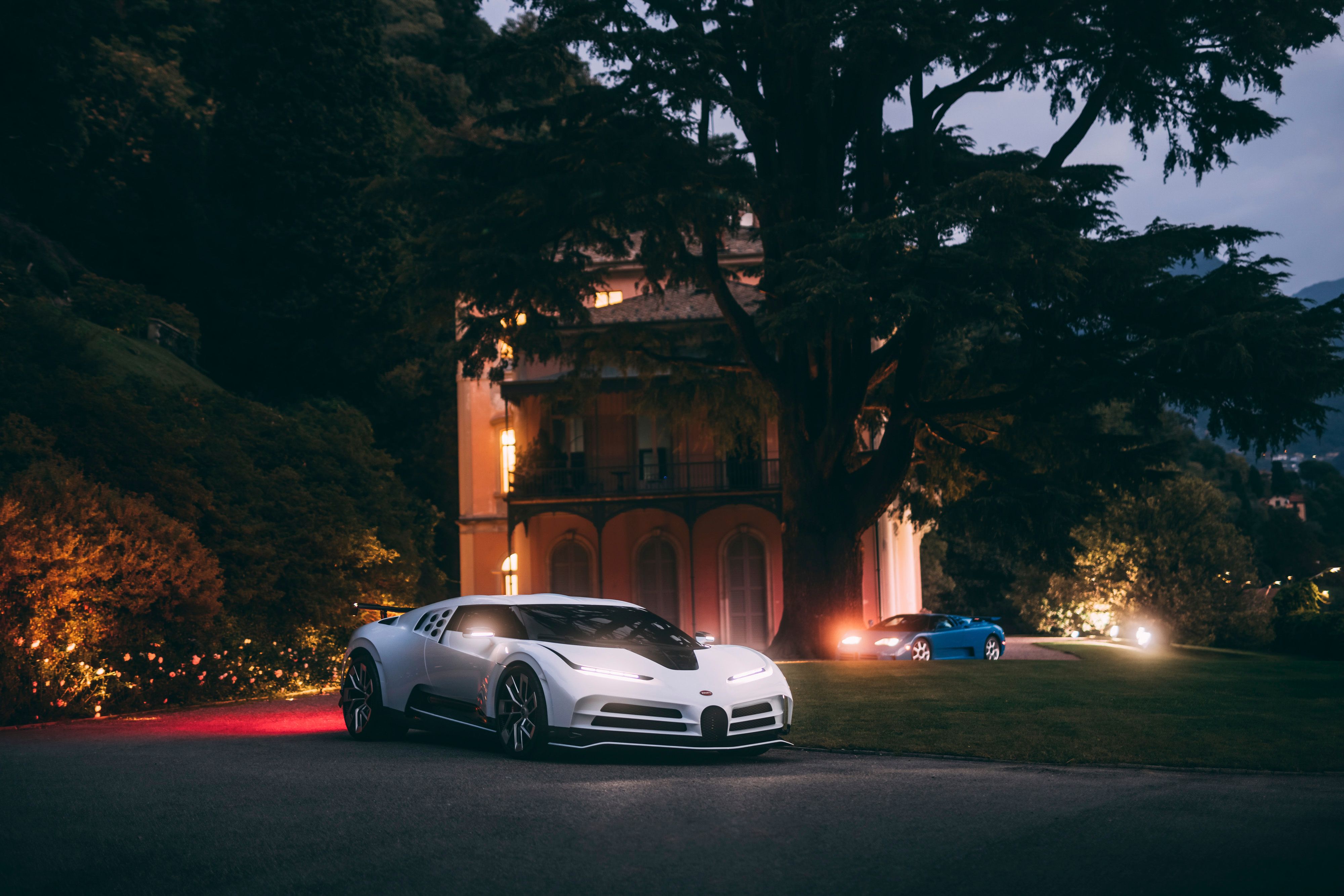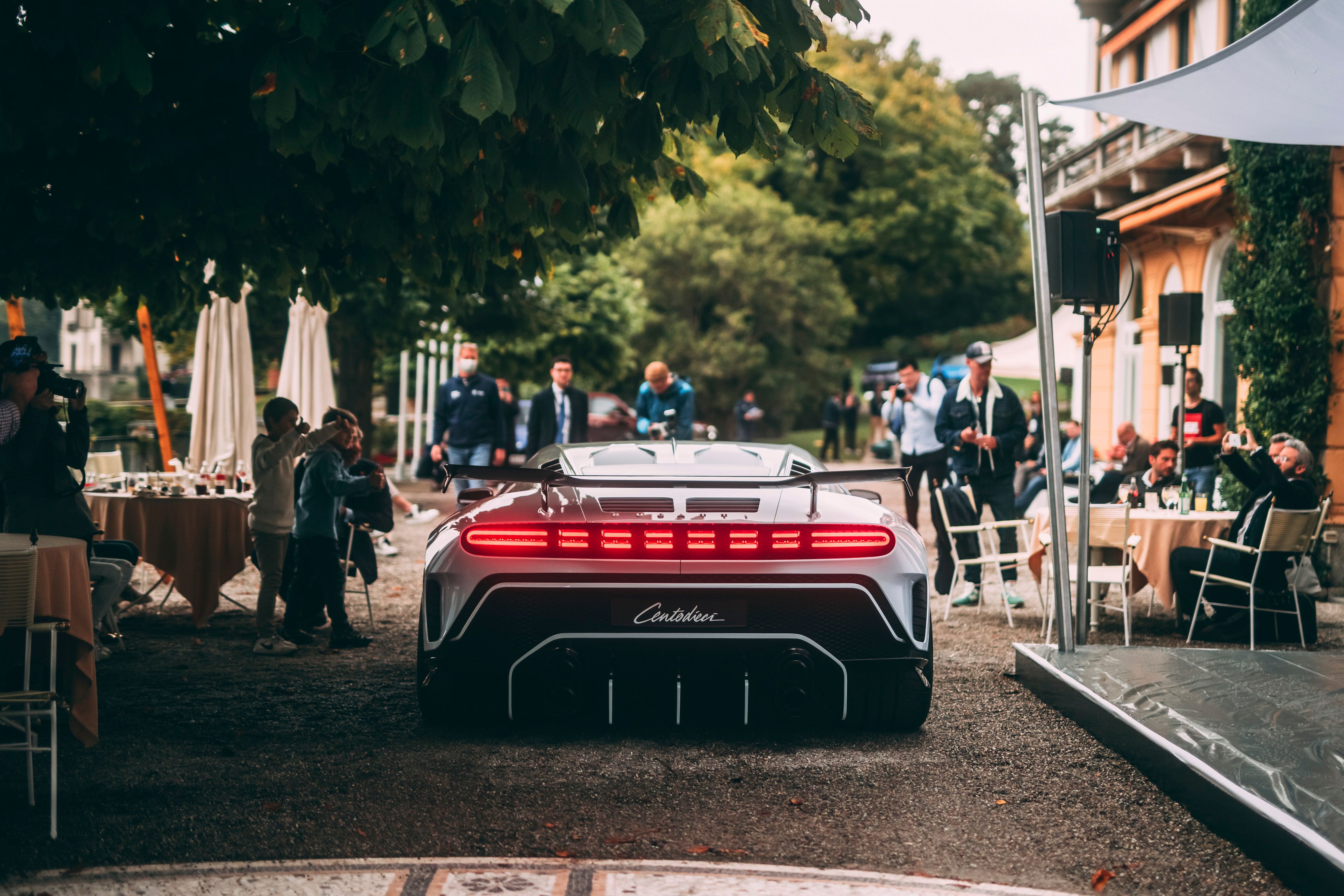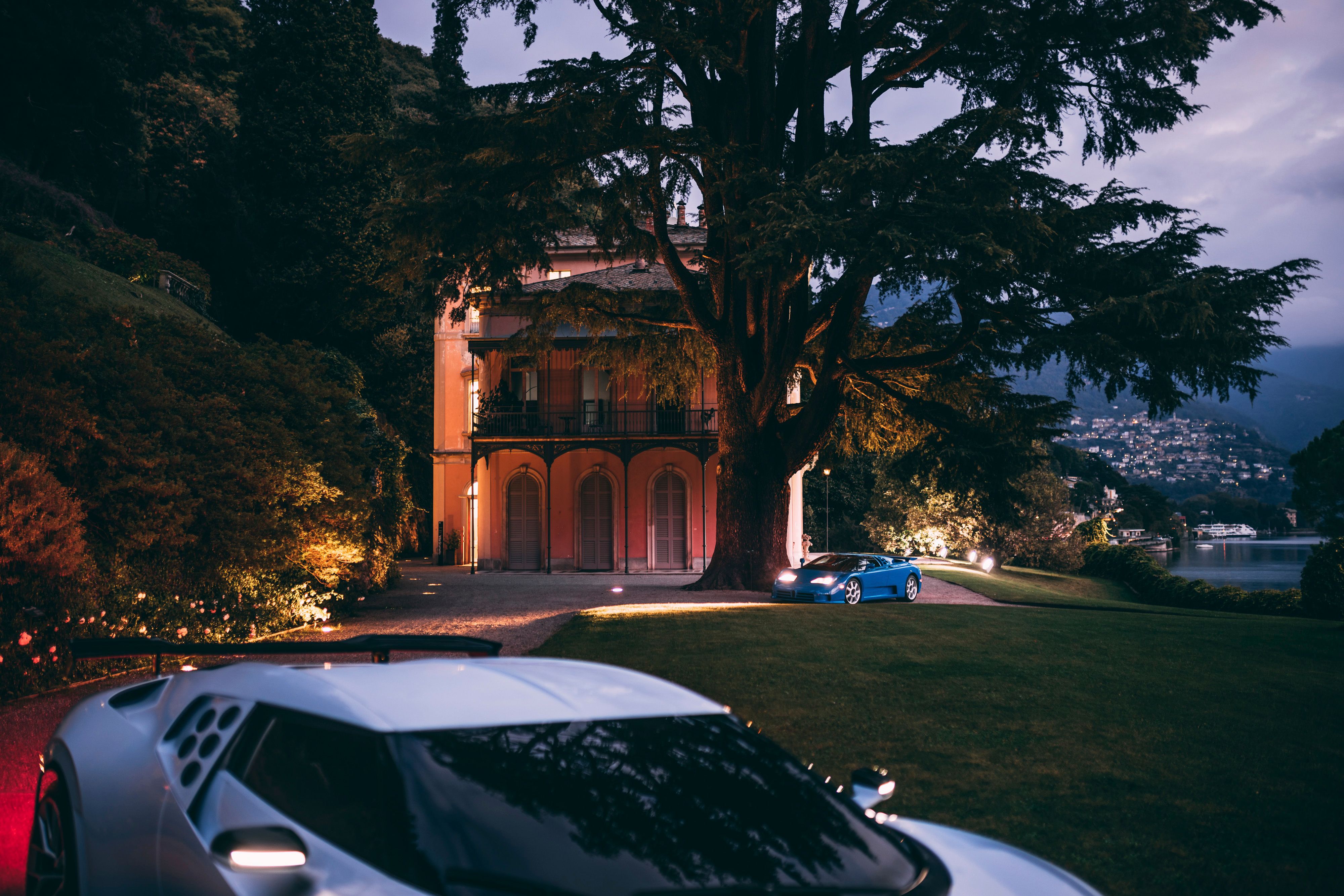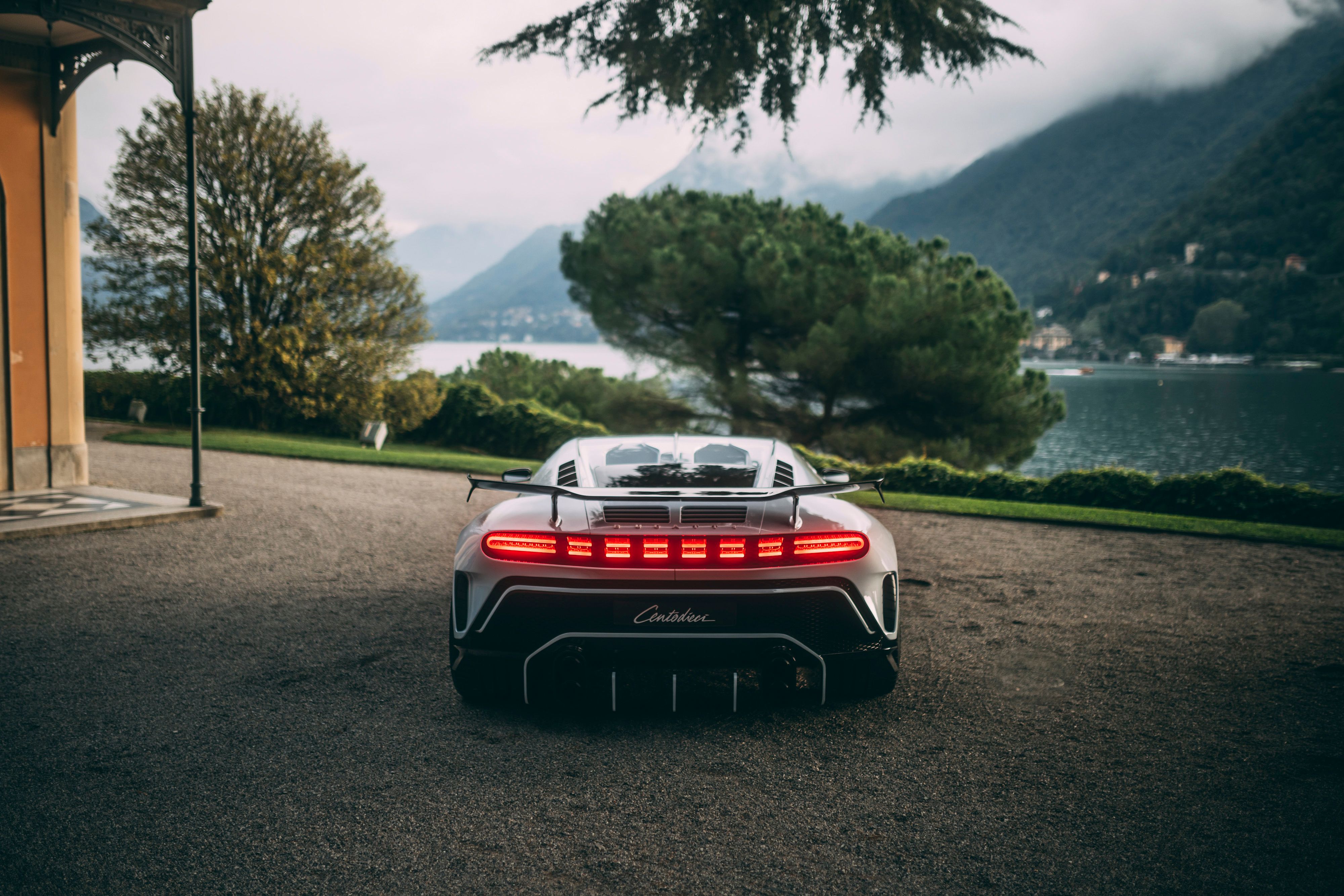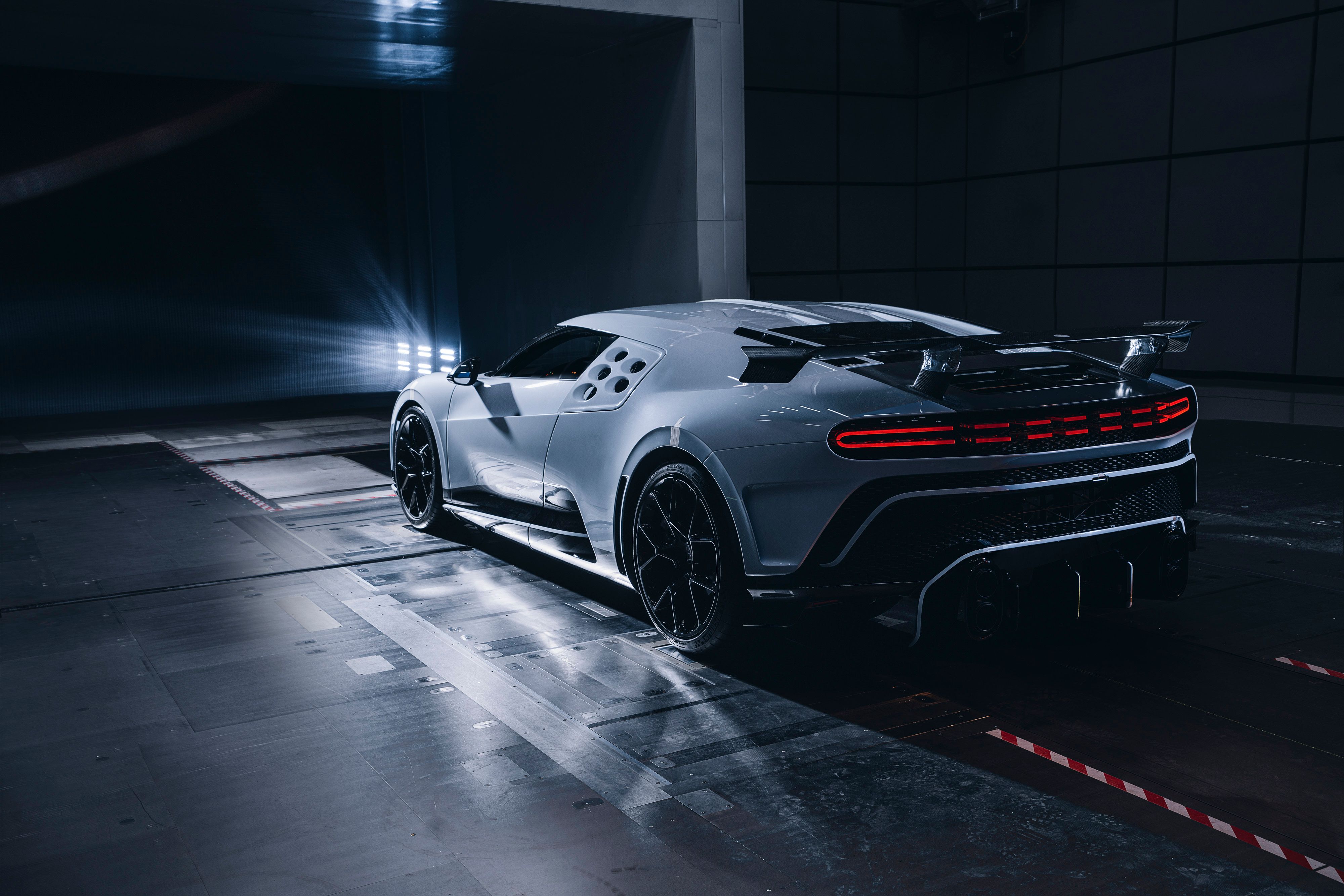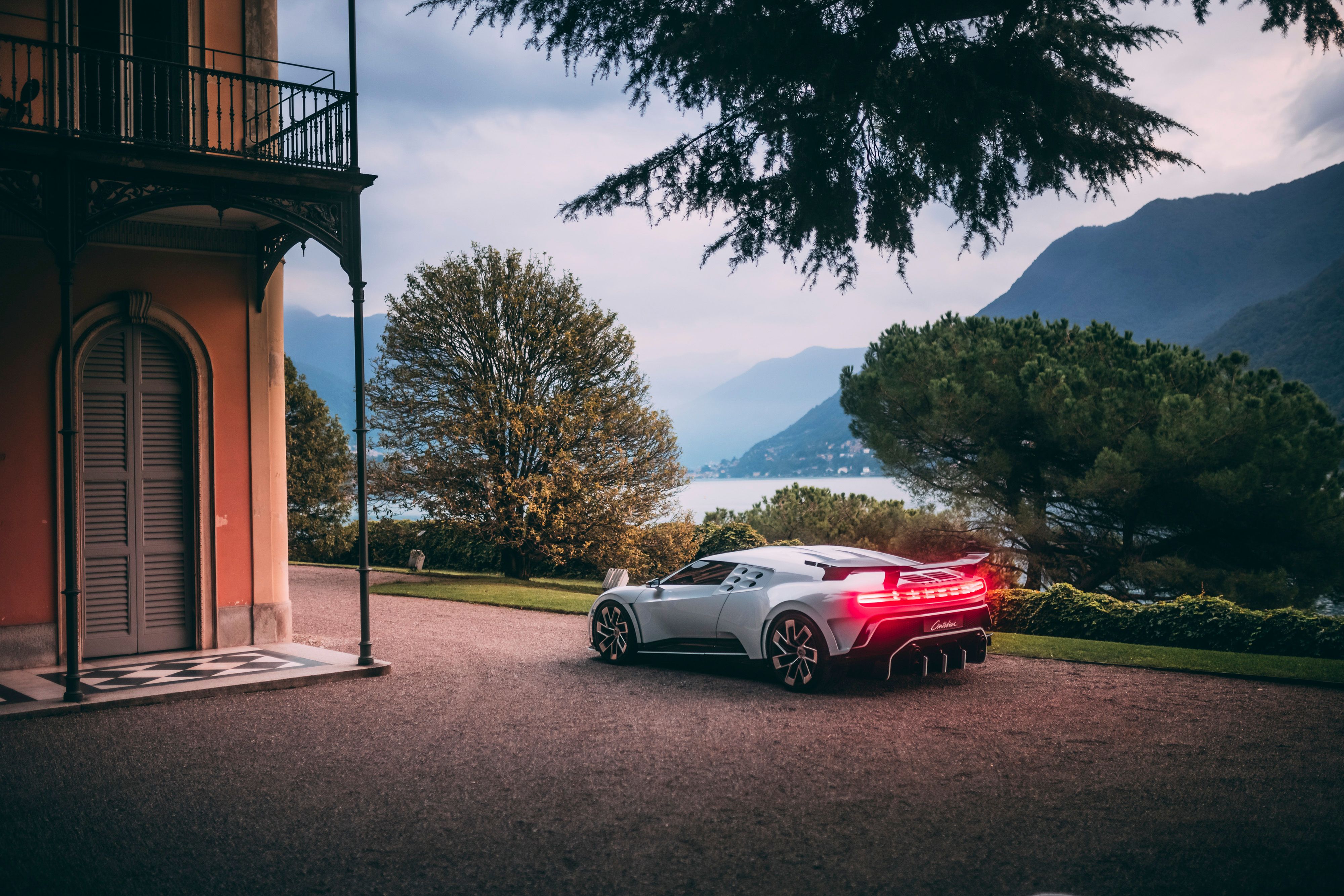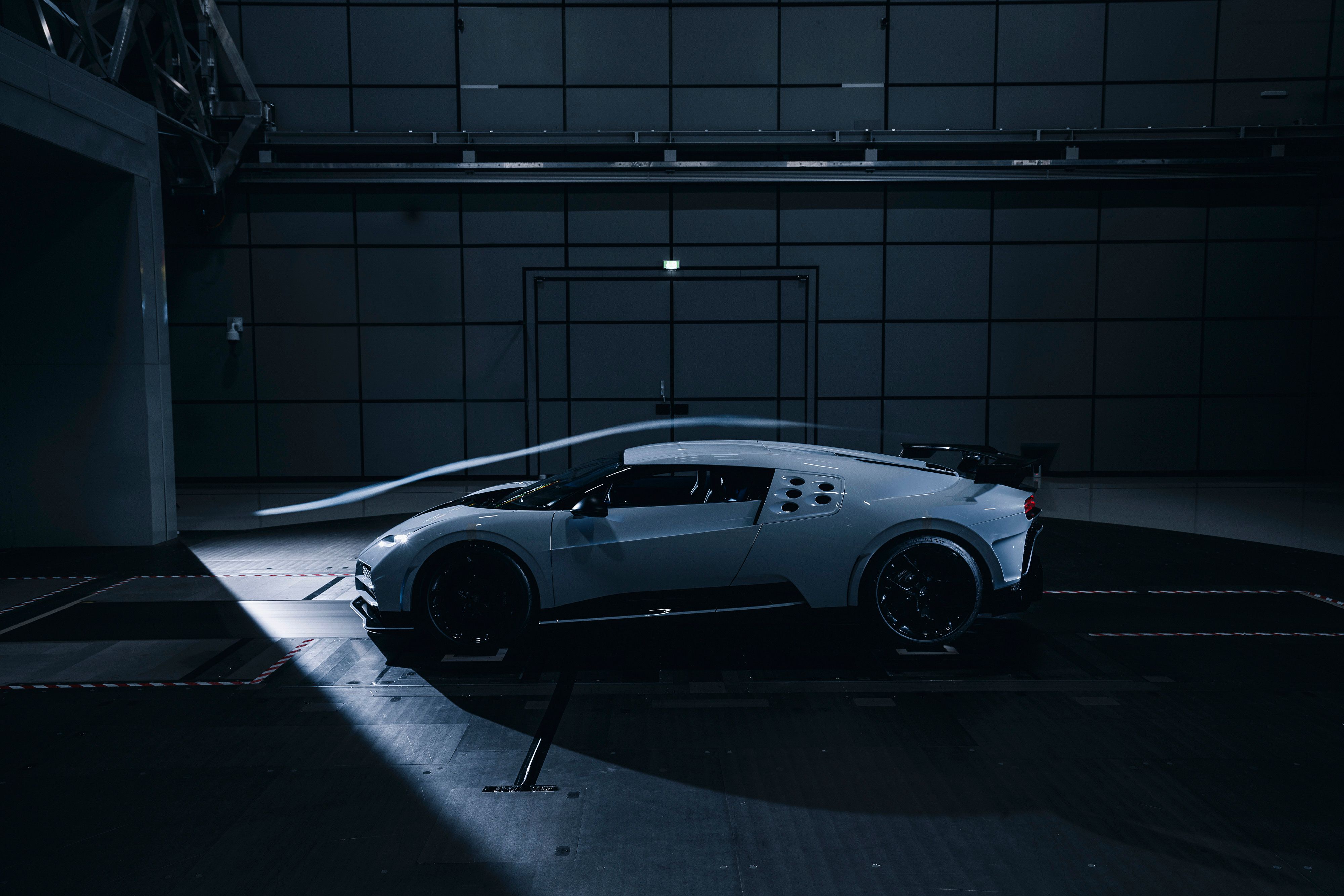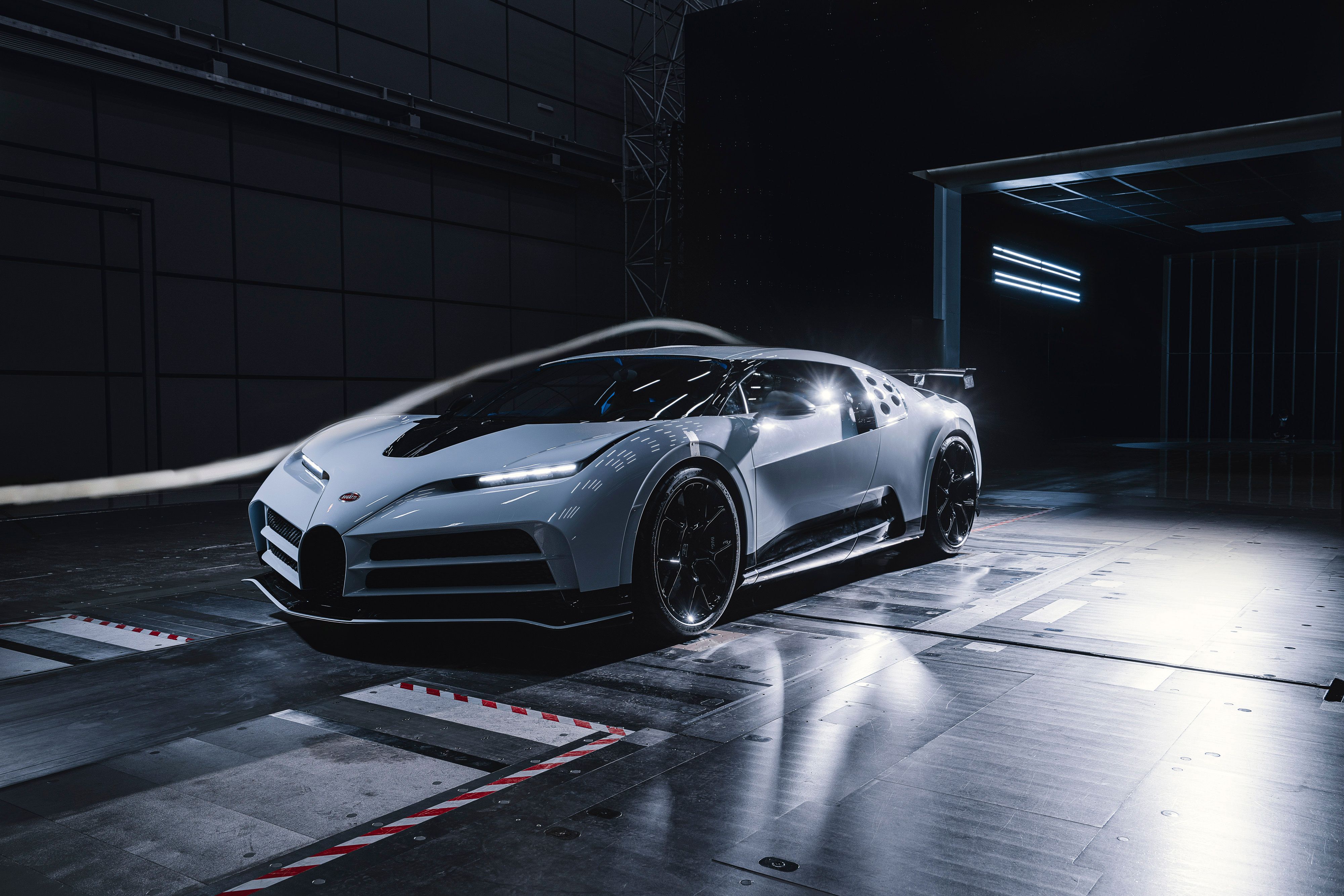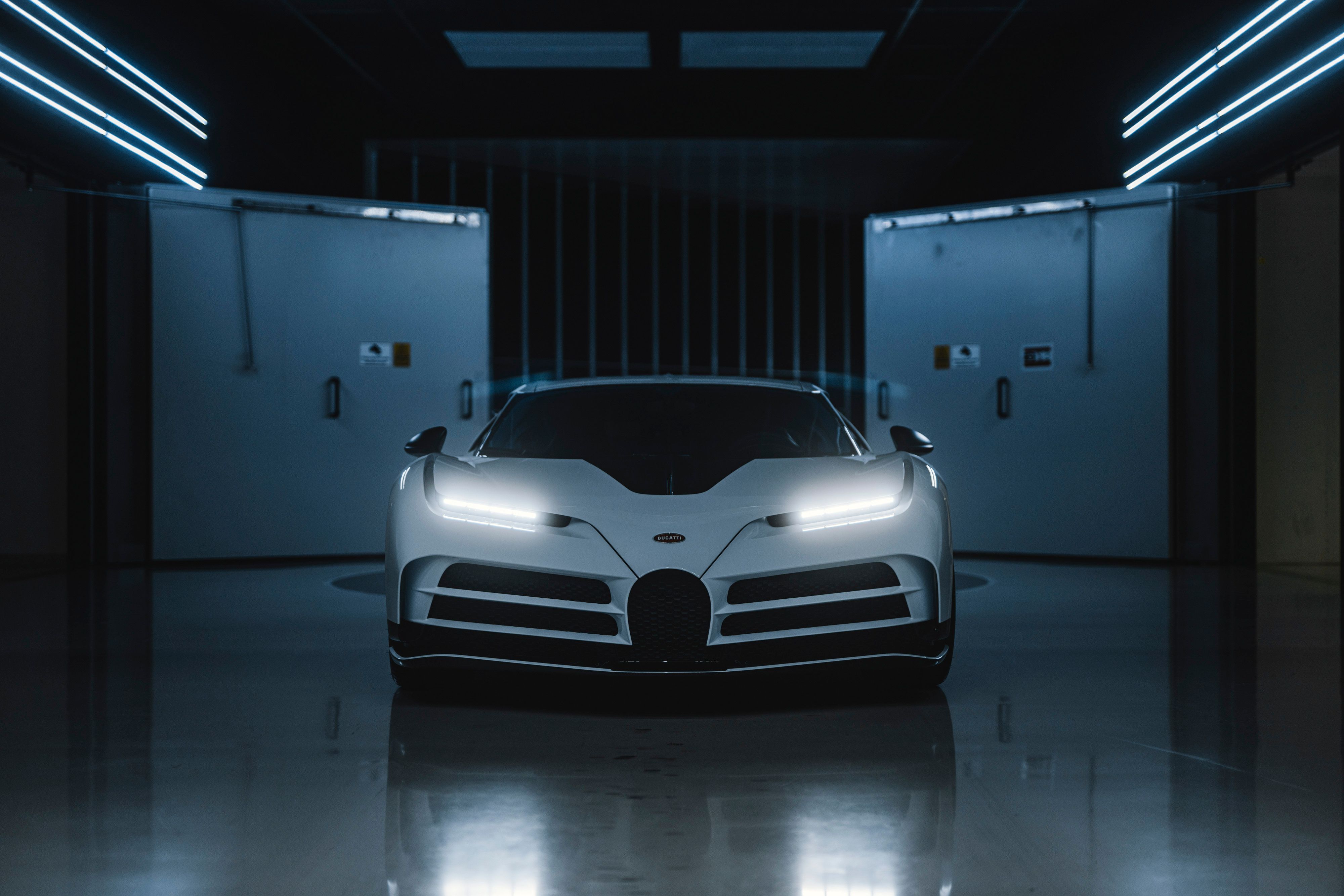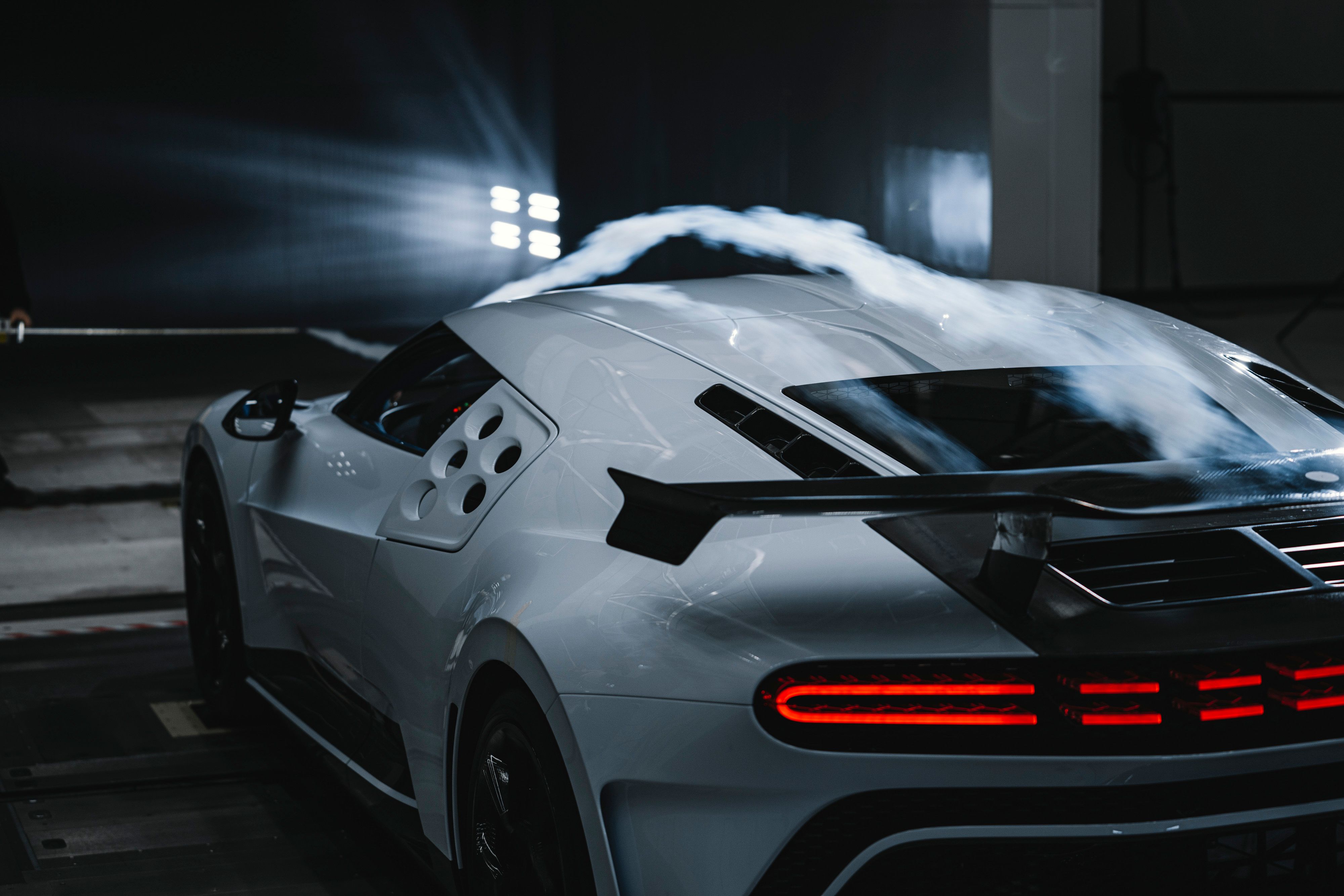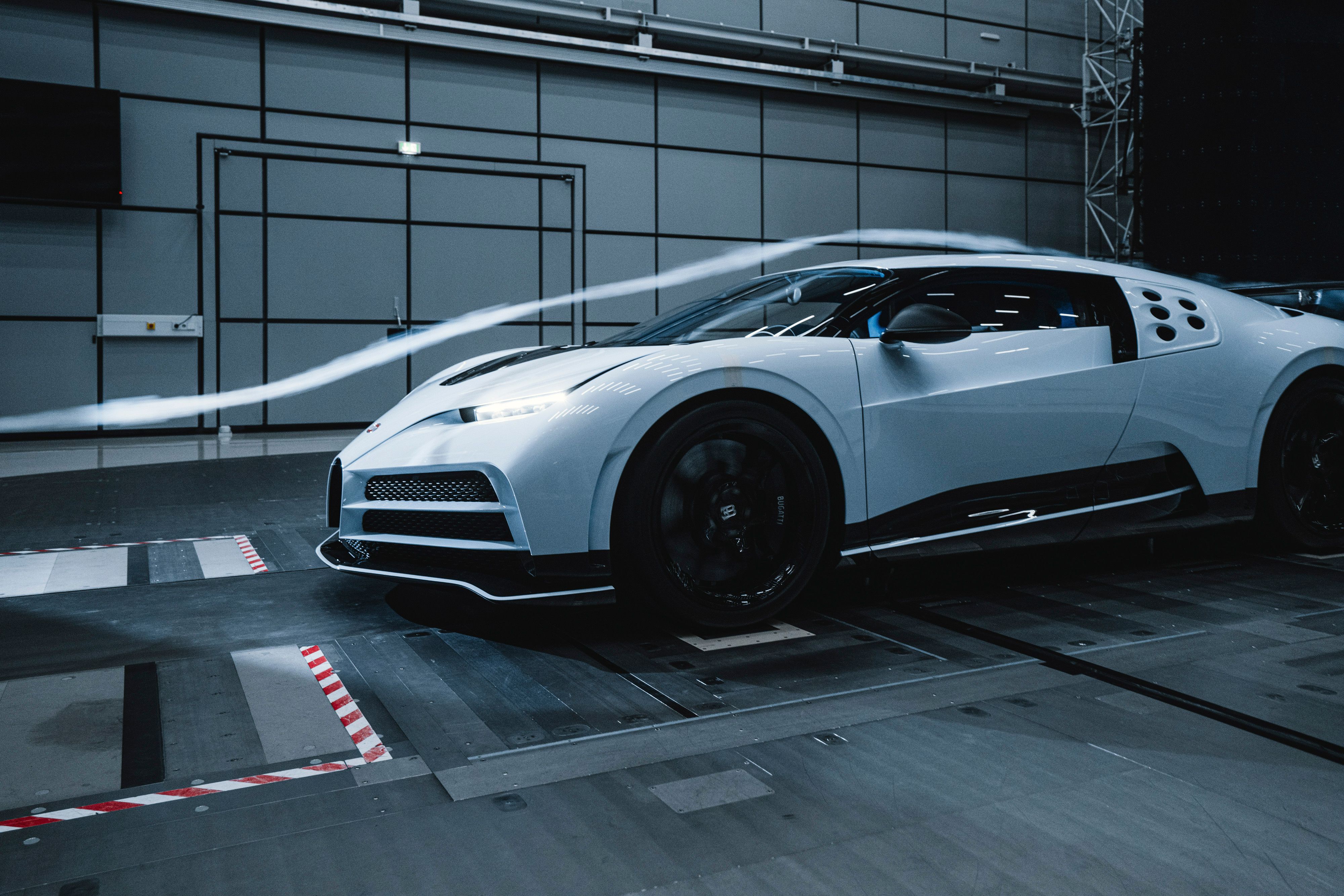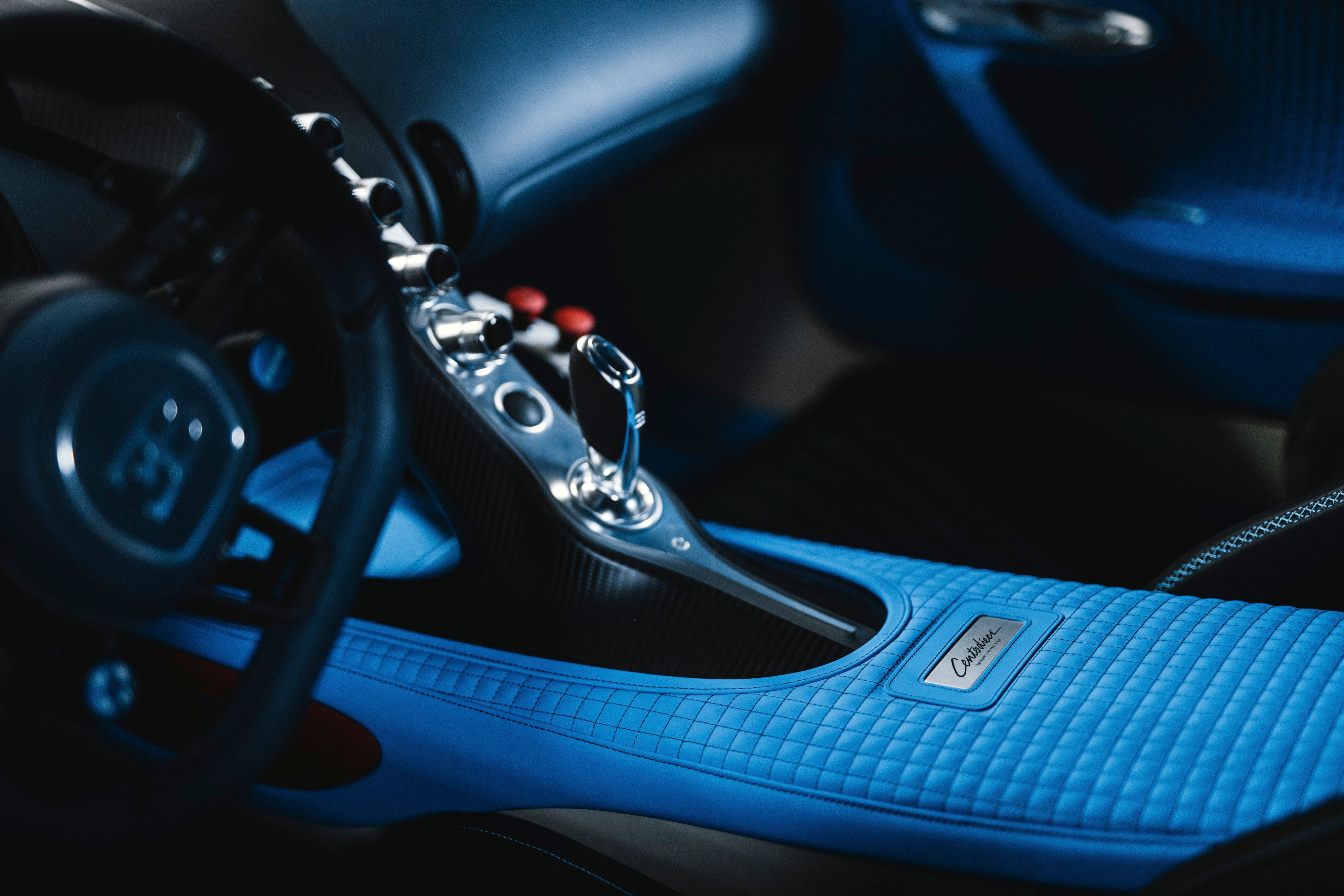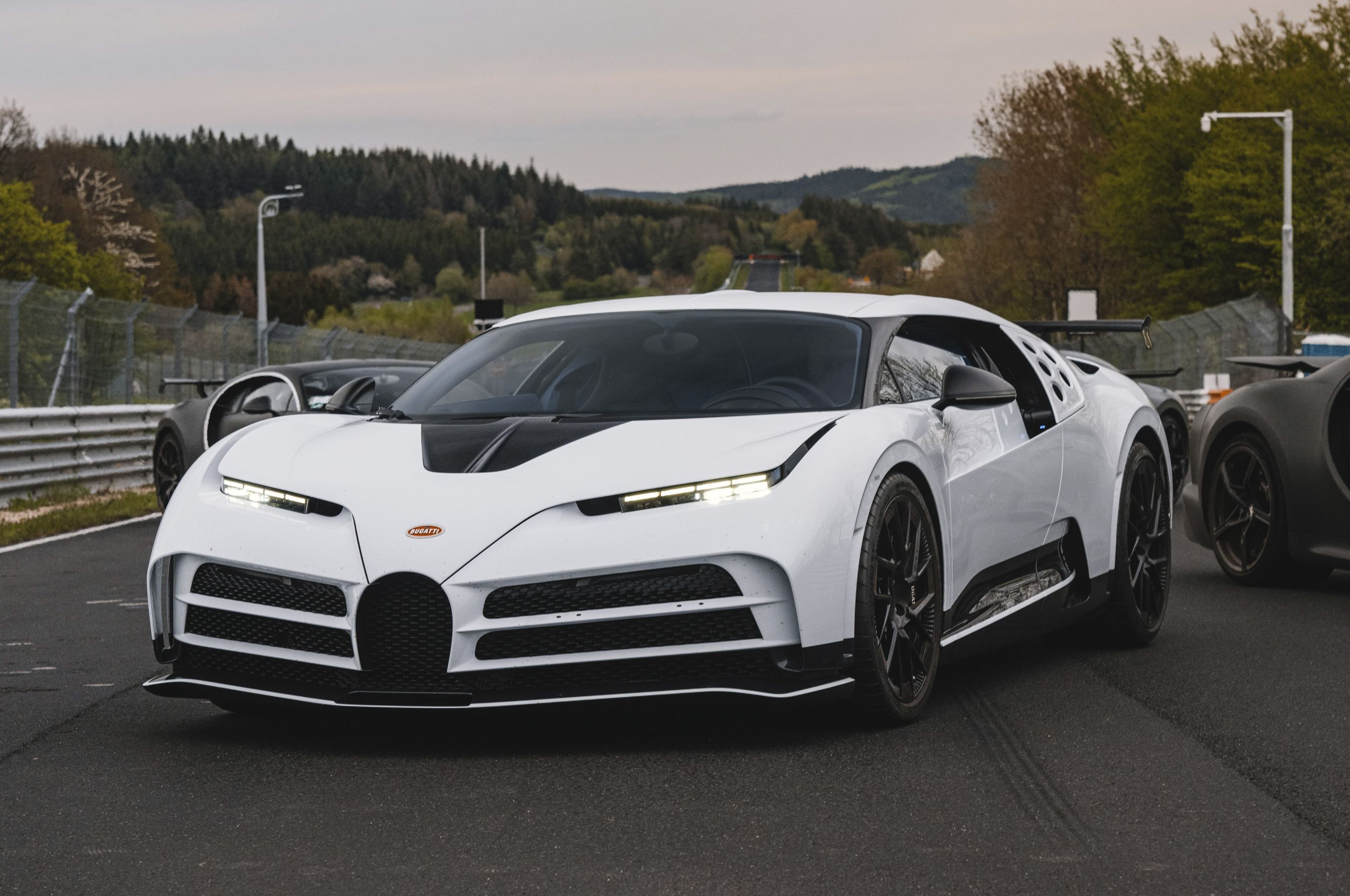The 2020 Bugatti Centodieci is a limited-edition version of the Chiron. Just like the 2019 La Voiture Noire, the 2020 Centodieci is a significant departure from the Chiron it is based on, sporting a notably different exterior. While the La Voiture Noire is a tribute to the Type 57 SC Atlantic from the 1930s, the Centodieci pays homage to the Bugatti EB110, a supercar built from 1991 to 1995. The 2020 Centodieci is limited to only 10 units.
The Centodieci is the fifth official variant of the Bugatti Chiron. It joins the Chiron Sport, the 110 Ans Bugatti model that celebrates the company 110th anniversary, the La Voiture Noire, and the track-prepped Divo. Since Centodieci means 110 in Italian, it also celebrates 110 years since Bugatti was established by Ettore Bugatti in Molsheim, France.
2020 Bugatti Centodieci
- Make: Array
- Model: 2020 Bugatti Centodieci
- Engine/Motor: W16
- Horsepower: 1600 @ 7000
- Torque: 1180
- [do not use] Vehicle Model: Array
Bugatti EB110 Brief History
Introduced in 1991, the EB110 was Bugatti's first production model since 1956. The EB110 was also the only Bugatti built under the ownership of Romano Artioli, who briefly revived the brand between 1987 and 1995. A wedge-shaped design, the EB110 featured a quad-turbo, 3.5-liter V-12 engine that generated up to 603 horsepower and 479 pound-feet of torque. It was the first Bugatti to employ quad-turbo technology, which eventually made it in the Veyron and Chiron. The EB110 needed 3.14 seconds to hit 60 mph from a standing start in range-topping SS trim and could reach 220 mph.
Production of the EB110 continued after 1995 under Dauer, a German firm that purchased the remaining stock of EB110 parts. The Germans increased output to 705 horsepower. Brabus also offered an aftermarket upgrade for the French supercar. A race-spec version known as the EB110 LM was raced at the 24 Hours of Le Mans in 1994 at the 24 Hours of Daytona in 1996, but failed to finish.
Exterior
|
|
ids=856381,856382 |
no_overlay=false |
before_label=Bugatti Centodieci |
after_label=Bugatti EB110> |
The Centodieci is a massive departure from the standard Chiron design-wise. While the Chiron still looks a lot like the Veyron, the Centodieci boasts a more angular design. That's because Bugatti wanted the Centodieci to look like a modern incarnation of the EB110.
The front end was redesigned to include some of the EB110's main features. The headlamps were mounted higher in the fascia and are extremely thin now. Granted, the EB110 had bigger lights, but Bugatti probably wanted to preserve the Chiron's familiar look as well. The nose was elongated and fitted with a much smaller "horseshoe" grille. While it's not as small as the EB110's, it's notably smaller than the Chiron's. The grille is flanked by two massive air vents separated by horizontal planes in the center. This feature is also inspired by the EB110, which has a similar bumper.
As a much more modern feature, Bugatti added a slightly curled splitter under the bumper. The hood is also unique to this model, featuring a small thin in the center, as well as a cooling vent design that I haven't seen on other Chiron models. Bugatti also went with a more angular design for the windscreen frame, likely also inspired by the EB110.
|
. |
ids=856383,856384 |
no_overlay=false |
before_label=Bugatti Centodieci |
after_label=Bugatti Chiron> |
Onto the sides, the French builder tried to preserve as much as possible from the EB110, starting with the sculpted side skirt and deep vent in the lower rear fender. But while the EB110 features a rather simple and rectangular element, the Centodieci boasts a more intricate design that makes more sense aerodynamically. But by far the biggest change here is the absence of the C-shaped pillar that incorporates the roof and the side skirt on the Chiron.
Although Bugatti claims it's still there but smaller, the element is hardly noticeable. Basically, Bugatti shaved off the car's profile, which results in a cleaner design. Instead of a quarter window, the Centodieci features five round air vents positioned in the shape of a diamond, just like on the EB110 SS. The lack of the C-shaped element gives the Centodieci an even cooler look and it makes us wonder whether the standard model wouldn't be better off without it.
|
|
ids=857046,857047 |
no_overlay=false |
before_label=Bugatti Centodieci |
after_label=Bugatti EB110> |
While the front fascia and the profile borrow several elements from the EB110, the rear end of the Centodieci doesn't really remind me of this supercar from the 1990s. The EB110's trademark, pill-shaped taillights are missing, while the diffuser is much more aggressive. Still, I did like the LED inserts that stretch from one side to the other and the fact that they somewhat mimic the upper grille of the EB110. Down below, the Centodieci sports a more familiar grille between the fascia and the massive diffuser. Unlike other Chirons, the Centodieci features a 2+2 tailpipe arrangement in which the pipes on each side are stacked on top of each other.
|
|
ids=857048,857049 |
no_overlay=false |
before_label=Bugatti Centodieci |
after_label=Bugatti EB110> |
The first Centodieci produced is painted in white and this isn't a coincidence. Bugatti says that the color was chosen to demonstrate a powerful contrast with the all-black La Voiture Noire. They are "two completely opposing yet related forces, like yin and yang," said Bugatti CEO Stephan Winkelmann. However, customers will be able to order the Centodieci in any color they desire.
Interior
Bugatti had nothing to say about the Centodieci's interior and we don't have any photos to look at either. But since Bugatti usually brags about its bespoke interiors in limited-edition cars, it's safe to assume that the Centodieci doesn't have a special interior. Sure, it probably features some badges and bespoke upholstery colors and stitching, but nothing beyond this.
That's not to say that the Chiron's interior is boring. Fine craftsmanship is one of Bugatti's main specialties and the Chiron is one of the finest examples here. The Chiron's cabin is a perfect balance between sportiness and luxury and sets the supercar apart from most vehicles in this really expensive segment. There's no plastic to speak of, with every surface covered in fine leather or Alcantara or made from metal or carbon-fiber.
It has a fully digital instrument cluster with TFT screens that integrate a navigation system and a speedometer that runs all the way up to 500 km/h (310 mph). The flat-bottom steering wheel features aluminum spokes and blue controls, while the seats provide support for spirited driving but are also comfortable for long trips. The package also includes a premium sound system with diamond membranes for the tweeters, silver emblems, and a cooled glove box.
Drivetrain
Not surprisingly, the Centodieci features the same quad-turbo 8.0-liter W-16 that Bugatti has been using in the Veyron and Chiron for more than a decade now. However, Bugatti upgraded the mill to extract a bit more oomph for the Centodieci. The engine generates 1,577 horsepower, 98 more than the regular Chiron and other versions of the supercar. Torque remains unchanged at 1,180 pound-feet.
At 1,577 horsepower, the Centodieci is not only the most powerful Chiron-based vehicle ever built, it's also the most powerful Bugatti yet.
The Centodieci is also 44 pounds lighter than the Chiron. Bugatti brags that the weight loss results into a "sensational" power-to-weight ratio of 1.13 kilograms per horsepower, but this doesn't seem very accurate since the 1,577 horsepower move a vehicle that tips the scales at around 1,958 kg (some 4,310 pounds). But needless to say, it's impressive for the supercar world.
The Centodieci's performance numbers are largely similar to the regular Chiron. The sprint to 60 mph comes in the same 2.4 seconds, but charging to 124 mph takes a bit less. While the Chiron hits the benchmark in 6.5 seconds, the Centodieci needs 6.1 clicks. Likewise, the Centodieci reaches 186 mph in 13.1 seconds, a half-second quicker than the Chiron.
On the flip side, the Centodieci has a lower top speed than the Chiron. The latter is limited to 261 mph, while the Centodieci reaches its electronically controlled limited at 236 mph, or exactly 25 mph lower. The limitation is likely linked to the revised aerodynamics.
The remaining internals are pretty much identical to the Chiron's, including the seven-speed dual-clutch transmission. Bugatti added extra cooling technology so that the engine remains cool while generating the extra power.
Pricing
The Centodieci will be built in just 10 units and Bugatti says that they're already sold out. What a surprise, huh? Customers won't take delivery of their cars very soon though, as it will take two years to complete the entire run. How much does it cost? €8 million plus VAT, which in some countries could be as much as €10 million. This converts to a whopping $11 million, more than any other Chiron out there.
For reference, the Chiron costs around $3 million, while the Divo costs around $6.5 million and the La Voiture Noire was priced at $12.4 million before taxes. So the Centodieci isn't the most expensive Chiron ever built, but we need to keep in mind that the La Voiture Noire was a one-off.
Competition
Koenigsegg Jesko
The Jesko is Koenigsegg’s replacement for the Agera, and it was unveiled at the 2019 Geneva Motor Show. Although it shares some styling cues with its predecessor, the Jesko rides on a new platform and includes many new technologies. It has a smart steering wheel that includes a couple of small touchscreens with haptic controls and a bespoke transmission with nine speeds and multiple clutches that allow you to change in any gear without losing momentum. Power comes from a revised version of the company’s twin-turbo, 5.0-liter V-8 engine. The unit features the world’s lightest production crankshaft and generates 1,262 horsepower on standard gasoline and up to 1,578 horses on E85 bio fuel. That's exactly one horsepower more than the Centodieci, but Jesko’s 738-pound-foot torque rating falls behind by 442 pound-feet. The Jesko could hit 300 mph according to Koenigsegg, but an official record attempt has yet to be made. Pricing for the Jesko is not yet available, but it should be notably more affordable than the Bugatti Centodieci. Expect a sticker around the $3 million mark.
Read our full story on the 2020 Koenigsegg Jesko
Final Thoughts
Although I'm not a big fan of the Chiron, I must admit that Bugatti rolled out a bunch of cool limited-edition models based on this crazy hypercar. And the Centodieci is arguably the most impressive in my book. It's cool that the French firm decided to pay tribute to the EB110, the company's first modern vehicle and the main link between the old luxury cars and the modern Veyron. Not only more powerful than the regular Chiron, the Centodieci also sports a new design that borrows from the EB110. These styling cues are a big plus for me because they're a significant departure from the Chiron's potato-shaped body. The Centodieci also signals that Bugatti will continue to use the Chiron for more limited-edition models with redesigned bodies in the future, and that's a cool thing.
Further Reading
Read our review of the 1994 Bugatti EB110 GT
Read our full review on the 1992 Bugatti EB 110 SS.
Read our full review on the 2018 Bugatti Chiron.
Read our full review on the 2018 Bugatti Chiron Sport.
Read our full review on the 2019 Bugatti Divo.

